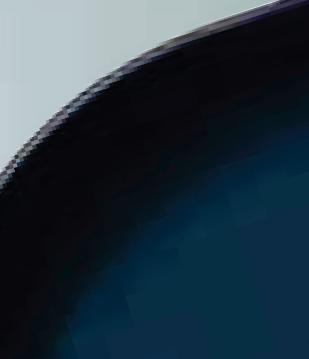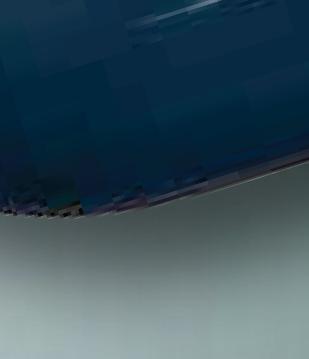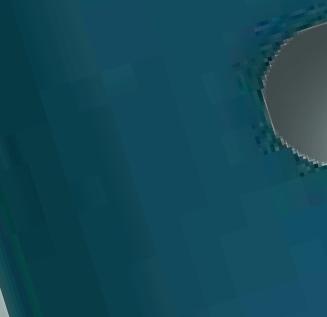









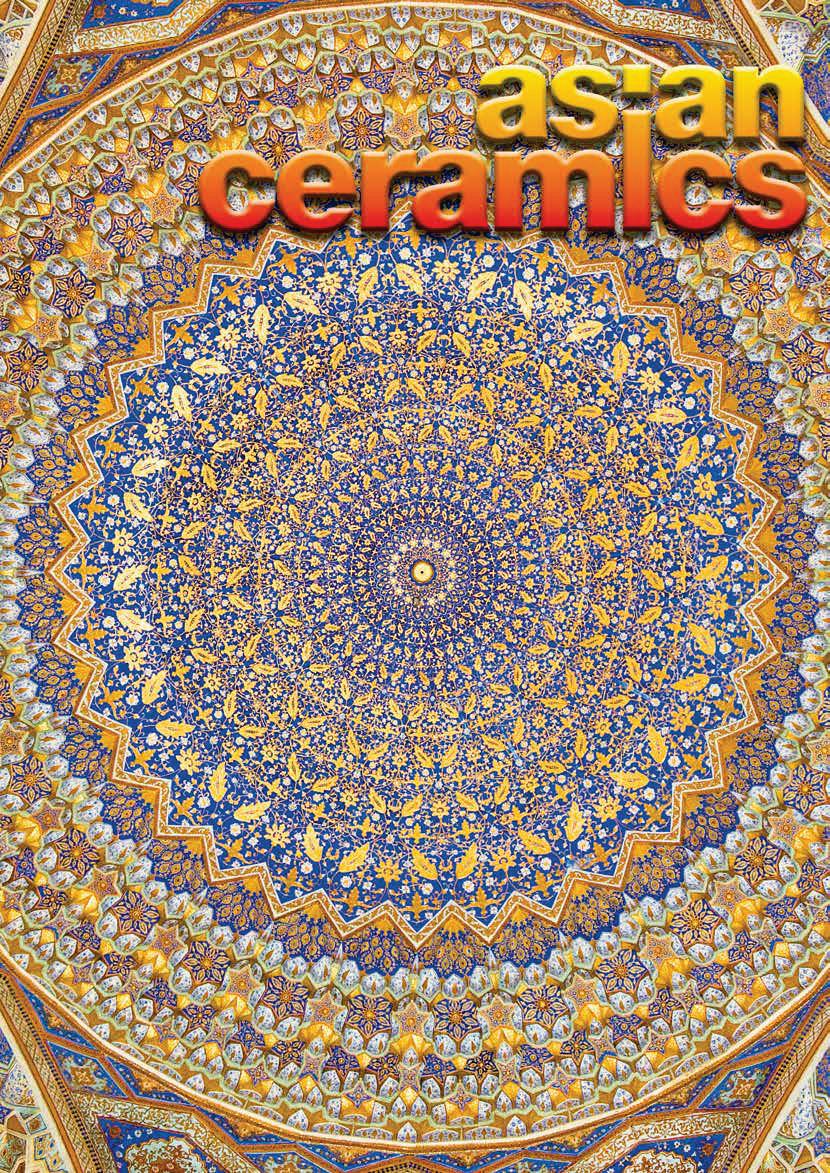
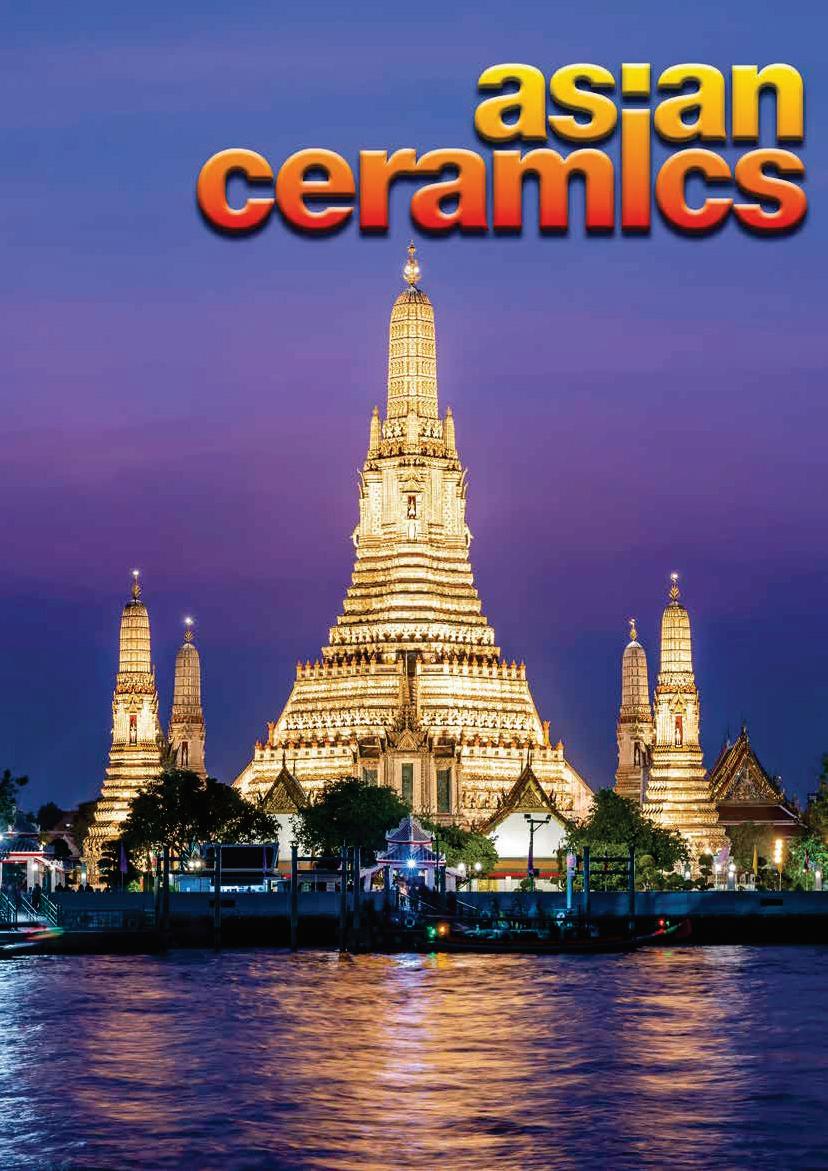

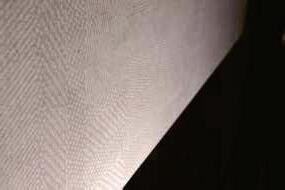

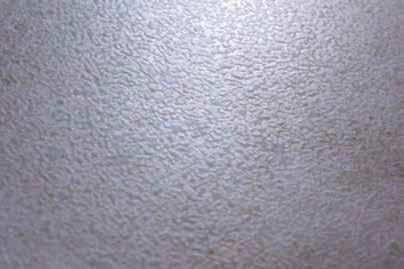
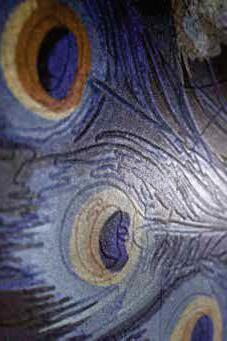
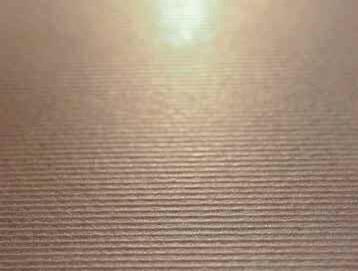









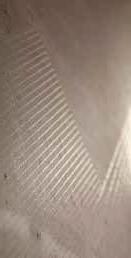
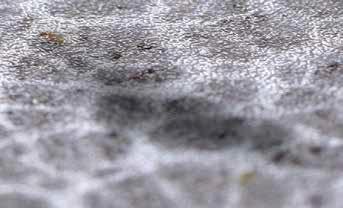

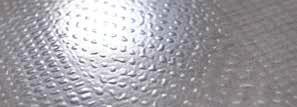
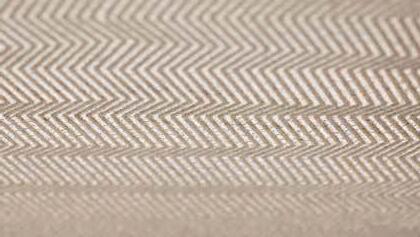

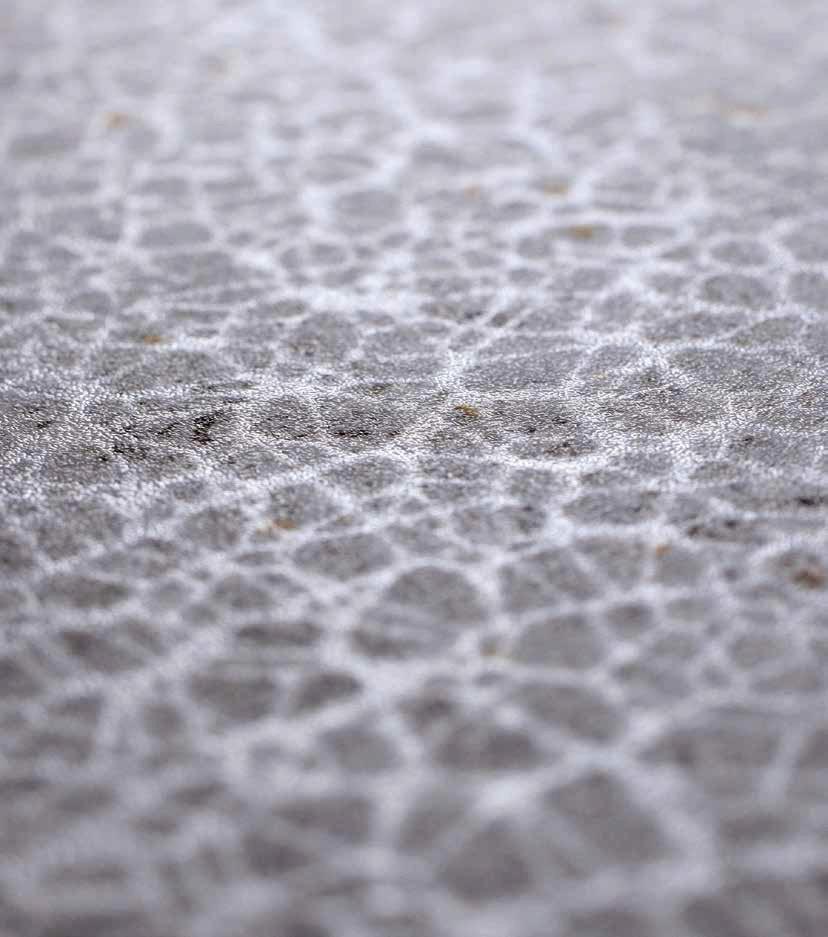

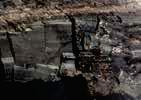
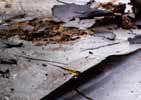




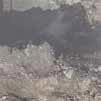














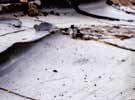




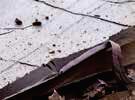



























































































MCS® is a Portuguese-based multi-mineral, ceramic raw material mining and processing company.
However it o ers more than ceramic raw materials and ceramic bodies, it is commi ed to sustainable mining principles and providing “Minerals For Life”. Our success is built on innovation, R&D and collaborative partnerships to overcome industry challenges.























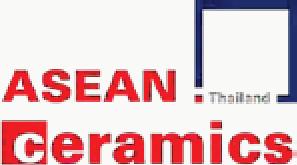









Bangladesh’s ceramics industry has emerged as one of the nation’s most dynamic growth sectors, steadily expanding its footprint across domestic and international markets. Over the past two decades, the industry has transformed from a modest manufacturing base into a recognised exporter, supplying tableware, sanitaryware and tiles to countries around the world. Yet, behind this success lies a fundamental challenge: its heavy dependenceonimportedrawmaterials.Coreinputs such as kaolin (china clay), ball clay, feldspar, quartz and zircon are predominantly sourced from India, China, Thailand, and New Zealand. This reliance exposes local manufacturers to global pricevolatility,currencyfluctuationsandlogisticalbottlenecks.Theparadox,however,is that Bangladesh is not lacking in mineral resources. Geological surveys have identified over 100 million tonnes of ceramic clay, including premium-quality white kaolin, across regions such as Mymensingh and Sylhet.
Industry experts argue that the next phase of growth depends on unlocking these indigenous resources. Strategic investments in mineral exploration, modern extraction technologies and supply chain optimisation could significantly reduce reliance on imports. Furthermore, energy atural gas, ideally supported by government eness against nations with abundant raw d's view, proactive policies and targeted e-dependent to a resource-based global market.

st-growing segments, revolutionising sets them apart. Advances in production ivering efficiencies that allow manufacturers to h Malik concludes that large-format tiles are dern living where artistry meets practicality. t hold ceramics during firing – plays a hter and stronger kiln furniture, manufacturers ten firing cycles, and even improve finished y sustainability and cost optimisation, t, kiln furniture is transitioning from a
uce its environmental footprint. One ects. By recycling broken or wasted tiles back raw material demand, reduce reliance on waste. Across Asia, leading producers are ing them to combine waste materials with . As Rohan Gunasekera notes, sustainability that eco-friendly practices can enhance
ted to Asia. From the heart of Mexico, NUTEC heat. Specialising in cutting-edge kilns for ity alloys, as well as industrial ovens and bustion and control systems and highwith Asian Ceramics, Alberto Cantú, vice out the company’s innovative products, r global growth.

EDITOR
Editor Isaac Hamza
Email: ihamza@asianceramics.com
ADVERTISING AND DESIGN
Advertising Sales Paul Russell
Email: prussell@asianceramics.com
Direct line: + 44 (0) 787 621 2193
Valerie Adamson
Email: vadamson@asianceramics.com
Direct line: + 44 (0) 207 664 4574 Mobile: +44 (0) 7774 255 0514
Production and design Tim Mitchell www.corpsvector.co.uk
OVERSEAS OFFICES
Bangladesh Jahir Ahmed jahir@asianglass.com
India Yogender Singh Malik yogender@asianglass.com
Sri Lanka Rohan Gunasekera rohan@asianglass.com
Research Manager Andy Skillen
Email: askillen@bowheadmedia.com
HEAD OFFICE
27 Old Gloucester Street, London WC1N 3AX, UK.

Directors:
Valerie Adamson and Paul Russell.



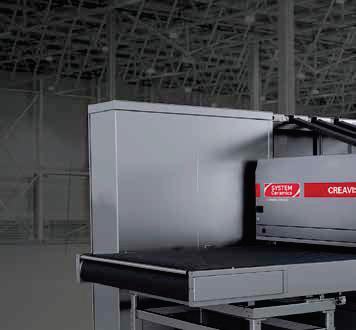
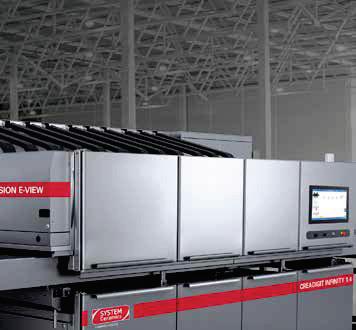
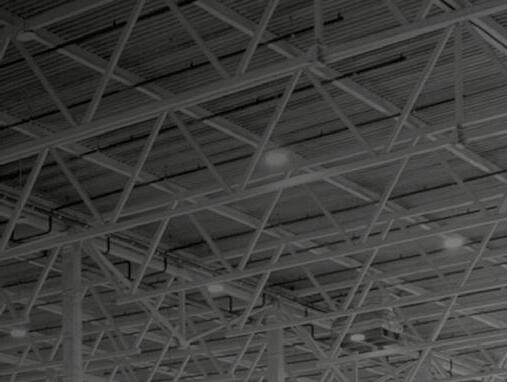




The future of ceramic decoration passes through Creadigit Infinity, the new digital printer with a computing power never seen before. Thanks to CoreXpress, the latest-generation platform, key information, useful for image reproduction on the ceramic surface, is exchanged and processed in real time with sophisticated processors and a dense network of sensors
More flexibility and more variation with over 12 color bars and the management of different heads on each individual machine with a resolution of up to 600 dpi. Towards the maximum level of performance. Visit systemceramics.com to discover more!


Large format tiles have rapidly grown in popularity, becoming a preferred choice in premium commercial and residential projects. Yogender Singh Malik highlights their rising demand
relies on kiln furniture to simultaneously enhance product quality and reduce production costs. Recent advancements in kiln furniture technology have further strengthened its role as a critical accessory in achieving these twin objectives, says Yogender Singh Malik.


Sustainability is more than a buzzword for ceramic tile manufacturers—it’s a business strategy. Companies are increasingly repurposing ceramic scrap, transforming production rejects into high-value products while signalling their commitment to a greener supply chain, remarks
With rising global demand and competitive production costs, Bangladesh’s ceramic sector’s access to kaolin, feldspar, quartz, and long-term competitiveness, writes Jahir Ahmed.
An expanding range of applications across established as well as emerging areas is driving the growing demand for ceramic

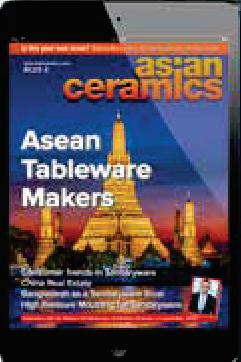






plus tile market, says techno-marketing specialist Dinesh Vyas.
shares insights with Asian Ceramics on the company’s latest product developments, strategic plans, and the talented team driving its growth.
Andy Skillen, special correspondent for Asian Ceramics, questions whether Bangladesh’s ceramic industry has potential to be transformational for the country, noting that the sector faces constant pressure and limited government support.

industriebitossi.com

Tech Mahindra, a global provider of technology consulting and digital solutions to enterprises across industries, announced that it has been selected by Dixon Technologies (India) Limited, one of India’s largest contract manufacturers, to enable AI-powered Industry 4.0 automation across all their manufacturing plants and research and development centres in India.
Tech Mahindra will serve as Dixon Technologies' digital transformation partner, driving the next wave of industrial innovation through its deep expertise in AI-enabled Industry 4.0 solutions and smart factory services. This collaboration aims to streamline and unify Dixon's digital journey, enabling smarter operations, faster decision-making, and sustainable outcomes.
operational resilience and adaptability are essential. Manufacturers who embrace these changes will thrive and bolster economic growth.
“In line with this, we are delighted to partner with Dixon Technologies to shape the future of smart manufacturing in India. Our AI-enabled Industry 4.0 automation solutions are designed to provide integrated intelligence throughout the production lifecycle. This collaboration underscores our commitment to helping
consolidated investments, and a transformation roadmap focused on achieving cost savings, productivity improvements, and other outcomes. Additionally, the initiative is designed to eliminate data silos, enable

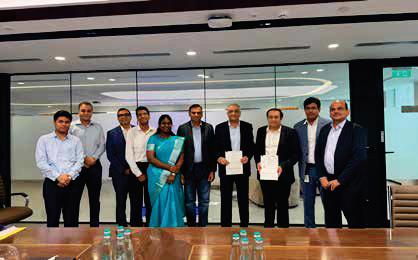
proactive decision-making, and create intelligent manufacturing environments. committed to staying at the forefront of technological innovation in manufacturing. Our partnership with Tech Mahindra
“With their proven track record in delivering next- generation digital manufacturing solutions, we aim to build futureready, agile and smart factories that aligns with global best practices and are driven by innovation.”
This collaboration aims to establish a standard for how manufacturers can leverage AI, automation and digital and improved customer value. It further reinforces Tech Mahindra's leadership in AI innovation, aligning with the company's ‘AI Delivered Right’ strategy.
Dixon Technologies (India) Limited is a home-grown design-focused and solutions company engaged in manufacturing consumer electronics like LED TVs; Home appliances like washing machines; lighting products like LED bulbs and tube lights, down lighters; mobile phones; wearables and hearables refrigerators; telecom and IT hardware products. Dixon also provides solutions in reverse logistics, i.e. repair and refurbishment services of LED TV panels. While Dixon Technologies (India) Limited primarily focuses on the manufacture of electronics, some of their products have an indirect in components such as LED packaging. Dixon's reverse logistics services also include the repairing and refurbishing of LED televisions, which are also made up of ceramic components.
Tech Mahindra offers technology consulting and digital solutions to global enterprises across industries, enabling transformative scale at unparalleled speed. The company employs 148,000+ professionals across 90+ countries helping Carta Seal, which recognises global companies that are actively leading the charge to create a climate and nature-positive future. Tech Mahindra is part of the Mahindra Group, founded in 1945, one of the largest multinational federations.

Engineers have converted lowgrade clay into a high-performance cement supplement, opening a potential new market in sustainable construction materials.
The global production of cement – a key ingredient in concrete – is responsible for eight per cent of global CO₂ emissions.
Replacing some cement with clay reduces the environmental impact, but the high-grade kaolin clay best suited for cement replacement is in increasingly high demand for ceramics, paints, cosmetics and paper. Now the RMIT team has demonstrated cheaper and more abundant illite clay can be mixed with low-grade kaolinite clay, to make stronger concrete.
Tech breakthrough towards a low-carbon future
The study published in Construction and Building Materials introduces a new process, where low-grade illite and kaolin clays are mixed at an equal ratio then heated at 600 Celsius.
Processing the two ingredients together, rather than separately, led to several improvements in the material's performance, the study found.
Project lead Dr Chamila Gunasekara, said low-grade illite clay does not normally bind well with cement and water, but that the joint heating, or co-calcination, process greatly enhances illite clay’s binding ability, known as pozzolanic reactivity.
“Based on this approach, we are able to replace 20% of cement usage using low-grade illite and kaolin combinations, while achieving even better performance of the yield product,” said Gunasekara, from RMIT’s School of Engineering. There was an 18% increase in the amount of disordered material in the new clays, which is beneficial for strength and durability. The material also holds more water in a chemically stable form, which points to better long-term reactions that help the structure stay strong.
“Porosity is reduced significantly by 41%, with its compressive strength increased by 15%, where changes in the way iron compounds formed help create a tighter and more compact internal structure,” Gunasekara said. These enhancements demonstrate that the co-calcined illite-kaolin blends can match or surpass the performance of traditional kaolin-based substitutes. Demand for kaolin is steadily growing, with the market projected to be worth US$6 billion by 2032 and its hoped, thanks to this research, a market for illite clay could follow suit.
Study lead author Dr Roshan Jayathilakage said the technique was also more energy efficient.
“Since raw materials are processed together, it streamlines industrial operations and lowers fuel use compared to multiple calcination steps,” Jayathilakage said.
“This makes the method not only technically sound but also economically and environmentally scalable.”

New computational tool accelerates green transformation
The research also showcases computational advancements in material science.
Underpinning the group’s work is an advanced computational tool for analysing and designing concrete, developed in partnership with Hokkaido University, Japan.
The tool allows the team to evaluate performance in various activated clays in concrete mixtures, providing detailed insights into their mechanical properties, durability and energy-efficiency, where currently available approaches had struggled.
Dr Yuguo Yu, from RMIT’s School of Engineering, said their computational tool enabled a more efficient assessment of material performance, reducing the reliance on extensive laboratory tests.
“By predicting how different clay compositions affect concrete behaviour, engineers are able to better design energy-efficient mixtures tailored for local clay types and specific environmental conditions,” he said.
"This virtual tool could enable the construction industry to accelerate the adoption of ecofriendly materials, paving the way of greener transformation for a more sustainable future.”
Building on collaborations with global partners including European Synchrotron Radiation Facility in France, the RMIT team is continuing to investigate how different clay types and activation techniques influence concrete behaviour at multiple scales, while expanding performance testing in real-world conditions.
This research was enabled by the ARC Industrial Transformation Research Hub for Transformation of Reclaimed Waste Resources to Engineered Materials and Solutions for a Circular Economy (TREMS).
Led by RMIT’s Professor Sujeeva Setunge, TREMS brings together top scientists and industry experts from nine Australian universities and 36 state, industry, and international partners to minimise waste and repurpose reclaimed materials for construction and advanced manufacturing.
The Royal Melbourne Institute of Technology (abbreviated as RMIT University) is a public research university based in Melbourne, Victoria, Australia. The University of Sydney was established in 1887 by Francis Ormond and is the seventh-oldest institution of higher learning in Australia. It is a member of Universities Australia and the Australian Technology Network.
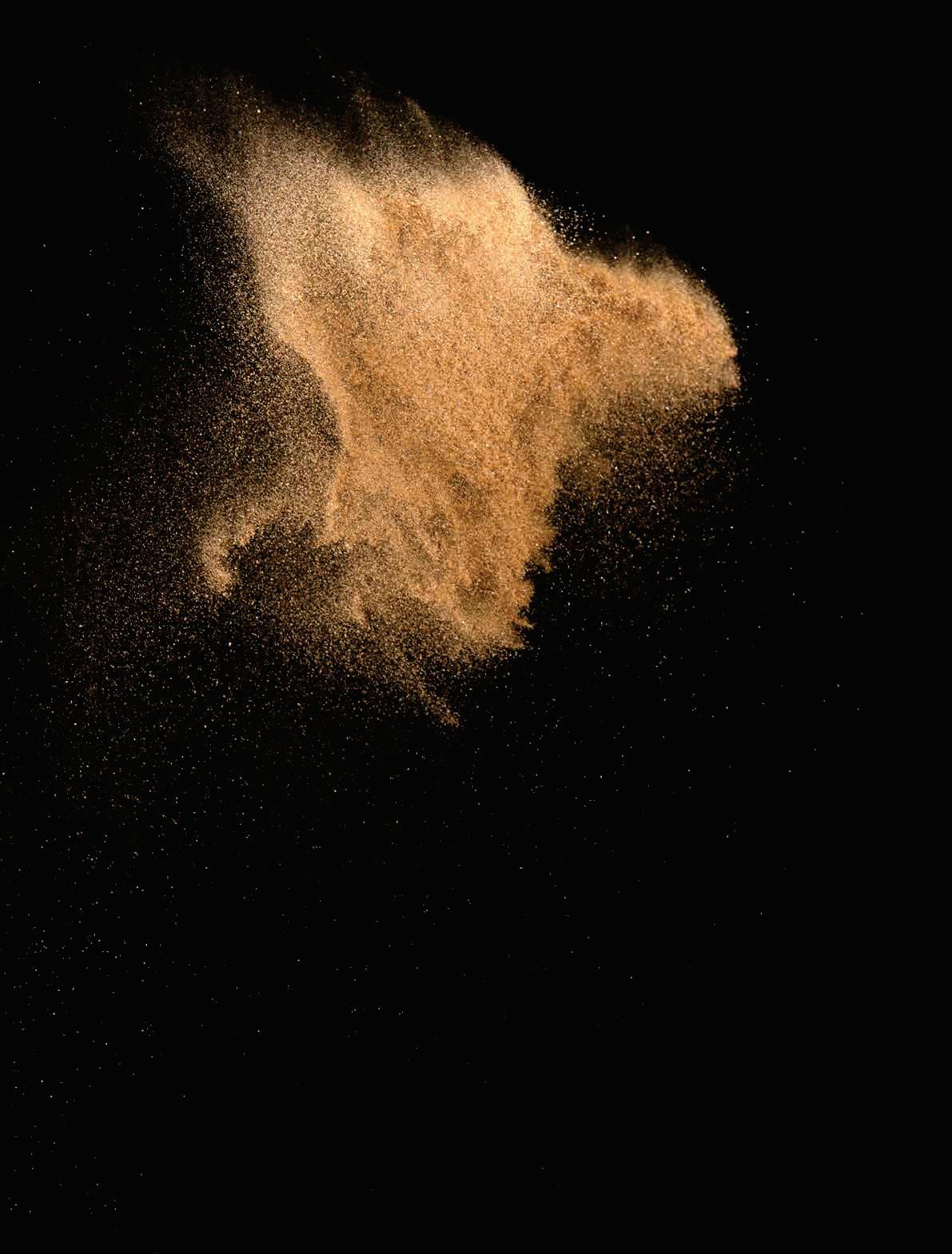
Toto Group ‘turns on’ new plant in Dalian with SACMI-Riedhammer • Stratasys launches tooling centre of excellence
With SACMI-Riedhammer, Toto has ‘turned on’ its new plant located in Dalian in north China. This highlyautomated factory, developed as a greenfield project and a strategic part of the company's development plan, was officially opened on 16th December. Toto, founded in Japan in 1917 and considered among the leading global manufacturer in the sector, marked the occasion with a firing ceremony during which the burners of the new kilns were turned on.
Each of these companies, namely, SACMI, Riedhammer and the Toto Group, has been
in operation for more than 100 years and shares many common traits, including wellestablished leadership in the marketplace for their products and technologies. Through the recent collaboration with the creation of the new factory at Dalian, Toto has reached another strategic milestone in its Asian expansion plans. The Dalian plant is characterised by total automation, where the new Riedhammer roller kilns are equipped with cutting edge heat recovery systems and the EMS 400 energy management system. This is the top of Riedhammer
energy management range for reducing and optimising energy usage.
While Toto is renowned in the industry for its capability to manufacture all the technology required for the production process by itself, it has neverthelesschosentoinvestin Riedhammer’s industrial firing solutions for over 30 years. Currently, 48 Riedhammer kilns are in operation in various Toto Group plants throughout the world, including roller, tunnel and intermittent kilns.
During the firing ceremony, the plant was turned on by the Toto team together with the SACMI-Riedhammer team.
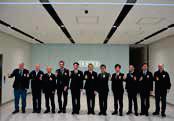
This gesture represents the continuous synergy that has characterised the relationship between the companies over the years, contributing to the achievement of the Japanese multinational’s growth and development plans on the global stage.
Stratasys announced the launch of the North American Stratasys Tooling Center (NASTC), a new collaboration with Automation Intelligence, LLC (AI), at AI’s manufacturing site in Flint, Michigan. The purpose of this dedicated tooling hub is to assist manufacturersinvalidatingand scaling practical applications of additive manufacturing in production environments. NASTC operates both the Stratasys F3300 and F900 3D printers, providing handson access to engineering resources, as well as creating applications for critical tooling solutions such as jigs, fixtures, end-of-arm tooling and North American Automotive Metric Standards (NAAMS) blocks. Those in the automotive and industrial sectors can now explore how additive manufacturing can streamline operations, reduce costs, and improve production efficiency.
Fadi Abro, director of global automotive and mobility
at Stratasys, said: “This Center of Excellence will have a significant impact for manufacturers showing how additive fits into their production environment.
“With the launch of the NASTC, we are addressing real-world challenges at this new center. This incubator for advanced manufacturing is designed to enable teams to iterate, validate and scale tooling applications rapidly. It sets the stage for designing solutions to meet the growing demand for localised, on-demand production solutions worldwide.”
Tooling often determines how quickly and costeffectively products get to market. The NASTC will give manufacturers validated proof that additive polymer tooling is both viable and an ideal choice for production. With manufacturers and suppliers under constant pressure to become more efficient, the NASTC is structured
to deliver speed, flexibility, and confidence, combining additive manufacturing technologies with traditional capabilities.
Jeff McGarry, managing partner at Automation Intelligence, said: “Tooling is the heartbeat of manufacturing. The NASTC offers an environment where manufacturers can see for themselves how additive tools can address today’s challenges with faster turnaround times, digital flexibility, and lower costs. We believe this partnership will demonstrate the positive impact additive can have across production.”
Automation Intelligence facilitates manufacturers' adoption of advanced technologies. Working with several large manufacturers, AI helps customers navigate digital §transformation by providing practical implementation and production experience.

In addition, the NASTC is expected to serve as a blueprint for similar tooling hubs around the world.
AnAmerican-Israelicompany, Stratasys, manufactures 3D printers, software, and materials used in polymer additive manufacturing, as well as 3D-printed parts on demand. Incorporated in Israel, the company offers innovative3Dprintingsolutions for a wide range of industries, including defence, aerospace, automotive, consumer products, and healthcare.
Reliance Power Limited (Reliance Power) subsidiary, Reliance NU Energies
Private Limited (Reliance NU Energies), has won the largest allocation in SJVN’s tariff-based competitive bidding process, securing an allocation of 350 MW of solar generation capacity coupled with 175 MW/700 MWh of battery energy storage system (BESS).
Once commissioned, the platform will add 600 MWp of installed solar PV capacity, and 700 MWh of energy storage to Reliance Power’s portfolio, consolidating its leadership in new energy solutions. The company’s total clean energy pipeline now stands at 2.5 GWp solar and >2.5 GWhr BESS, making it India’s largest player in the integrated Solar + BESS segment.
The winning tariff was discovered at INR 3.33/ kWh, fixed for a 25-years, positioning the project among
the most competitively priced offerings in India’s energy transition landscape. The Letter of Award (LoA) from SJVN is currently awaited. This allocation represents a material step-up in Reliance Power’s strategic pivot toward renewable power. The project is part of a broader 1,200 MW solar + 600 MW / 2,400 MWh BESS ISTSconnected tender floated by SJVN, one of the leading Navratna Public Sector Enterprise which saw participation from 19 entities, with 18 qualifying for the e-reverse auction. The tender was oversubscribed by more than 4 times, reflecting heightened industry interest in dispatchable renewable energy solutions.
The awarded project requires a minimum four-hour daily discharge window, effectively enabling assured peak power delivery to state distribution utilities (Discoms) and will be developed under a build-own-
operate (BOO) framework following the standard bidding guidelines prescribed by the Ministry of Power.
This successful bid underscores Reliance Power’s continued progress and commitment to becoming a leading player in India’s renewable energy sector. It marks a significant milestone in the company’s strategic vision to transition toward cleaner energy sources and play a pivotal role in shaping the country’s sustainable energy future.
Reliance Power’s, 100% subsidiary Reliance NU Suntech Private Limited, has recently signed a definitive 25-year Power Purchase Agreement (PPA) with the Solar Energy Corporation of India (SECI) to develop Asia’s largest integrated Solar and Battery Energy Storage System (BESS) project.
The transformational project willhaveasolarpowercapacity


of 930 MW, paired with 465 MW/1860 MWh BESS, and will have an investment outlay of up to INR 10,000 crore. The project will operate at a competitive fixed tariff of INR 3.53/ kWh for the full PPA term of 25 years, providing longterm revenue visibility.
Positioned as Asia’s largest Solar + BESS installation, the project reinforces Reliance Power’s strategic commitment to renewable energy leadership, while delivering sustainable value creation across stakeholders.
Reliance Power Limited, part of the Reliance Group, is one of India's leading private sector power generation companies. The company has an operating portfolio of 5,305 megawatts, that includes 3960 megawatts Sasan Power Limited (world's largest integrated coal-based power plant). For the past seven years, Sasan Power has consistently ranked as the best operating power plant in India.
Eriez has appointed Mary Ann De Lunas as country manager for its Magnetics division in the Philippines, indicating the company's commitment to expanding its footprint and improving customer service throughout Asia-Pacific (APAC).
As part of her new role, De Lunas will lead the company's growth initiatives in the Philippines, focusing on enhancing its presence in Southeast Asia, cultivating strong customer relationships, identifying new business opportunities, and providing sales assistance to its valued representatives in order to meet the specific
needs of local markets.
Ezio Viti, Eriez regional sales director for the APAC region, said: "This marks an exciting chapter for Eriez Australia as we continue to grow our global footprintandenhancesupport for our customers across Asia Pacific.
"Bringing extensive experience and a deep understanding of the Southeast Asian market, Mary Ann is well prepared to drive growth strategies for Eriez in the region. Her customercentric approach and regional expertise will be instrumental in further strengthening Eriez’ position in the Philippines."
“Through ongoing strategic
investments in personnel, Eriez is strengthening its worldwide presence, delivering expert local support backed by the resources and innovation of a global leader,”Viti added.
Established in 1942, Eriez is a global company operating in separation technologies.
With over 1,000 employees, the company provides technical solutions to the mining, food, recycling, packaging, aggregate, and other processing industries.
With headquarters in Erie, Pennsylvania, USA, Eriez designs, manufactures, and markets on six continents through 12 wholly owned
subsidiaries and a global network of sales representatives.

RAK Ceramics one of the largest ceramics and porcelain lifestyle solutions provider in the world, announced its financial results for the second quarter ended 30 June 2025 on 13th August.
The company said its financial performance in Q2 has been strong, demonstrating the resilience of the business in the face of a tough macroeconomic environment. Total revenue increased by 6.4% YoY to AED 826.8 million and by 2.9% to AED 1.6 billion in H1 2025 as a result of strong demand from the UAE and Middle East as well as effective cost management.
In Q2 2025, the gross profit margin increased by 110bps to 40.6% YoY and in H1 2025, it increased by 70bps to 40.2%, drivenbyenhancedoperational efficiencies which have contributed to higher gross profit margin, reinforcing RAK Ceramic’s market leadership.
EBITDA increased by 17.5% to AED 160.8 million in Q2
2025 compared to AED 136.9 million in the same period last year. Similarly, in H1 25 EBITDA increased by 2.9% to AED 296.4 million, while EBITDA margins have increased by 1.9% to 19.5% in Q2 2025 up from 17.6% in Q2 2024. In H1 2024, EBITDA margin remained consistent at 18.5%.
Profit before tax increased by 45.0% YoY to AED 86.7 million, compared to AED 59.8 million in Q2 2024. Net profit after tax increased by 30.1% YoY to AED 66.4 million, compared to AED 51.0 million in Q2 2024. In line with the increased profitability across the businesses. UAE Corporate tax was AED 17.2 million in Q2 2025, up from AED 6.5 million in Q2 2024. Net debt position rose by AED 120.6 million to reach AED 1.56 billion in Q2 2025, compared to Q1 2025, primarily driven by increased capital expenditure and working capital requirements.
Abdallah Massaad, Group CEO, RAK Ceramics said: "I am
pleased to report that Q2 2025 delivered solid revenue growth alongside strong operational performance, a reflection of the strength and adaptability of RAK Ceramics across the globe. Our ability to drive both volume and value growth in key markets, while successfully navigating regional headwinds, further underscores the effectiveness of our diversified strategy.
“Our teams have demonstrated resilience in adapting to local market conditions, leveraging growth opportunities in stable regions and implementing corrective measures where needed.
“The shift towards highquality and innovative offerings is strengthening our margin profile and reinforcing our competitive positioning. Our investments in advanced manufacturing capabilities, including upgraded facilities, continue to drive efficiencies and set new benchmarks for quality.
“Looking forward, we are continuing to innovate our operations and accelerate initiatives that will strengthen our position in the market and continue to drive profitability across all divisions."
RAK Ceramics is one of the largest ceramics’ brands in the world. Specialising in ceramic andgresporcelainwallandfloor tiles, tableware, sanitaryware and faucets, the company has the capacity to produce 118 million square metres of tiles, 5.7 million pieces of sanitaryware, 36 million pieces of porcelain tableware and 2.6 million pieces of faucets per year at its 23 state-of-the-art plants across the United Arab Emirates, India, Bangladesh and Europe. Founded in 1989 and headquartered in the United Arab Emirates, RAK Ceramicsservesclientsinmore than 150 countries through its network of operational hubs in Europe, Middle East and North Africa, Asia, North and South America and Australia.
The ASEAN Ceramics and ASEAN Stone 2025 exhibition is being organised by MMI Asia, a regional subsidiary of Messe Munchen GmbH, in collaboration with Asian Exhibition Services (AES), and will take place at the IMPACT Exhibition & Convention Center, in Bangkok, Thailand, from 15th17th October.
The show is endorsed by the FTI-CICT, the Mining Industry Council of Thailand, the Thai Ceramic Society, Confindustria Marmomacchine, the Association of Italian Manufacturers of Ceramic Machinery and Equipment (ACIMAC) and the Chinese Council for Promotion of International Trade, Building Sub-Council (CCPIT), and will continue to support Southeast Asia in the ceramics and natural stone industries worldwide as they continue to grow in size
and influence.
Recently, the exhibition's press conference was held in Bangkok, Thailand, with support from its long-term association partner, the Thai Ceramic Society (TCS), and sponsor Puresil India. Furthermore, the exhibition is part of ceramitec's international cluster, which forms a global network for the ceramic industry.
Michael Wilton, managing director and CEO of MMI Asia, said: "We are excited to introduce a fresh wave of business opportunities and innovations to Thailand, empowering companies to lead in the Southeast Asian market while strengthening the local ceramics and natural stone communities."
Atuk Chirdkiatisak, chairman (FTI-CICT), said: "With ASEAN Ceramics returning to Bangkok and the new addition of ASEAN
Stone, FTI-CICT is proud to support the event in uniting the local and international ceramics and natural stone sectors. Together, we will showcase the latest manufacturing advancements and drive global sustainability efforts."
The theme of this year's colocated events is ‘Pioneering a Sustainable and Innovative Future for Ceramics and Stone in Southeast Asia’, bringing together leading companies, well-known brands, industry associations, and think tanks to highlight cutting-edge developments and strengthen the ceramic and stone value chain in the region.
The event will include two conference stages: the International Conference of Traditional and Advanced Ceramics (ICTA) and the Main Conference Stage. ICTA will cover a broad
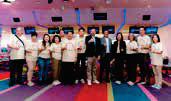
spectrum of ceramic-related topics, from Ceramic Art and Design to Industrial Ceramic Technologies. Meanwhile, the Main Conference Stage will feature industry spotlight panels, cutting-edge tech talks, market insights, innovations in quarrying, architecture and designdiscussions,andproduct innovationshowcases–bringing together the full spectrum of ceramics and stone. The conference programme will include an exclusive factory tour, strategy business matching, and premium networking opportunities for exhibitors.










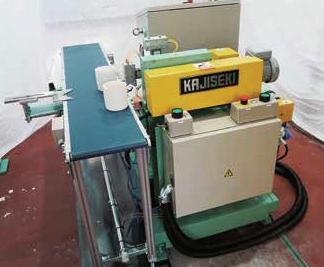











































































































KAJISEKI has built asystem capable of manufacturing tableware without the need for skilled engineers. Operation using an interactivedisplay not only allows you to manage the manufacturing process, but also gives you control over aspects of the production system such as production quantity and production errors.































































































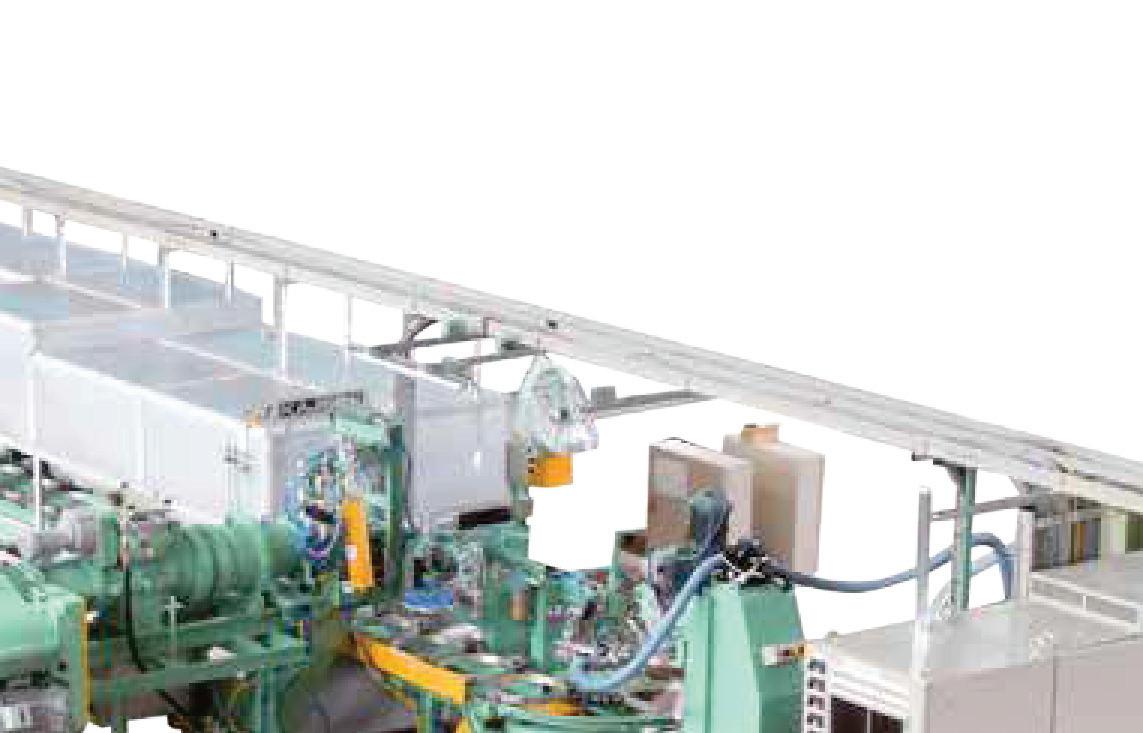














































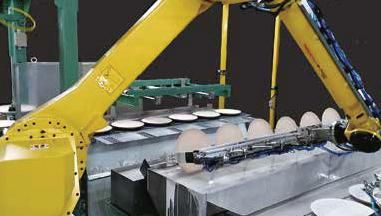
Head Office : 2-2-1 Hachiman-cho, Takahama, Aichi 444-1302, Japan
URL : http://www.takahama-ind.co.jp
E-mail : info@takahama-ind.co.jp
TEL : +81-566-52-5181
LG Chem announced that it has co-developed a highperformance silver paste with Japan’s Noritake, designed specifically for bonding silicon carbide (SiC) chips to substrates in automotive power semiconductors.
Noritake is a Japanese company with over 120 years of experience in advanced ceramics, supplying grinding wheels, materials for electronic components, and kilns (thermal processing equipment) for applications in the semiconductor and automotive industries.
As the automotive electrification and autonomous driving technologies experience
TAIWAN
a rising trend, the demand for power semiconductors is growing rapidly. However, traditional soldering methods, which rely on melting metals to join components, have become less effective as the operating temperatures of power devices increase. This has created a growing need for paste that can maintain stability and performance under high thermal conditions.
The silver paste co-developed by LG Chem and Noritake is a high-performance paste containing nano-sized silver (Ag) particles, combining LG Chem’s particle engineering technology with Noritake’s particle dispersion expertise.
The two companies achieved superior heat resistance and thermal conductivity in a single formulation.
Unlike conventional silver pastes, which require cold storageandhaveashortstorage life that complicates inventory management, the new product offers long-term stability at room temperature. This improvement enhances transportation and storage efficiency, while also extending the usable time within customer processes, ultimately reducing material loss.
Building on this successful collaboration, LG Chem and Noritake plan to pursue further joint development of nextgeneration materials for future
automotive applications.
The global silver paste market for automotive power semiconductors is expected to grow from KRW 300 billion in 2025 to KRW 850 billion by 2030.
“Leveraging our accumulated technological expertise and advanced materials design capabilities, LG Chem has provided customized solutions across various industries, including automotive electronics,” said Shin HakCheol, CEO of LG Chem.
“Through our partnership with Noritake, we aim to strengthen our differentiated competitiveness in the global automotive materials market.”
PJH(asubsidiaryofChengLin Enterprise Co., Ltd), announced a new distribution partnership with VitrA, a global bathroom manufacturer. Starting in June 2025, PJH officially introduced a range of VitrAbranded bathroom products to its retail network, further expanding its market-leading product portfolio and offering customers a more diverse and high-quality selection.
VitrA is an internationally renowned bathroom brand, known for its innovative design and superior quality. Through this partnership, PJH will introduce the VitrA Bathroom Collection and
the Vitality Collection to its retail customers. While not included in PJH's own-brand portfolio, these two collections will effectively complement its existing product line and expand its retail selection. The VitrA Bathroom Collection will be fully available to PJH retail customers, while the Vitality Collection will be exclusively available at VitrA partner stores.
Kim Cooper, marketing director at PJH, said: "We are thrilled to add VitrA to PJH's bathroom brand portfolio. VitrA is a partner who shares our values of quality, innovation, and customer-first service.
Through this partnership, our retail customers will have access to premium global brands while enjoying PJH's industry-leadinglogistics,nextday delivery capabilities, 'First Choice' service promise, and easy-to-use Partners Portal ordering system."
PJH will stock a wide selection of VitrA products, with most available for next-day delivery and some available by special order. Product categories include washbasins, toilets, faucets, showerheads, and flush panels. Furthermore, participating retailers can order VitrA catalogs, display samples, and color swatches
through PJH's online platform, easily supporting sales promotions.
Ruth Davies, UK representative for VitrA, said: "We are delighted to be partnering with PJH and developing the UK market together. PJH has strong distribution capabilities, an extensive nationwide inventory and delivery network, and provides a seamless customer service experience. They are the ideal partner for promoting VitrA's high-quality bathroom solutions. We look forward to working closely with PJH to introduce VitrA to the wider retail market."
LIXIL Corporation, a maker of water and housing products, opened its International Competence Center (ICC) in Guangzhou on 4th July. The cross-functional R&D hub will facilitate deeper collaboration with Chinese suppliers and integrate global expertise.
Kinya Seto, president and CEO of LIXIL, emphasising China’s strategic role in LIXIL’s innovation capabilities, said:
"China isn’t just one of LIXIL’s key markets – it’s where many of our innovative ideas originate. The ICC marks a significant milestone in strengthening local development and global innovation collaboration, advancing our commitment to make better homes a reality for everyone, everywhere."
To enhance speed-to-market, the centre is strategically located within South China's
kitchen and bathroom industry cluster.
With 1,654 square metres of space, the ICC offers advanced labs for product testing, material analysis, and technical validation that support brands like GROHE and American Standard. Incorporating cross-team collaboration, it streamlines consumer insights and supply chain delivery for international markets. The
centre will also develop talent with international perspectives and multidisciplinary skills.
Bijoy Mohan, leader of LIXIL International, said: "This hub enhances our R&D agility and cross-border co-creation. By integrating international engineers with local suppliers and resources, we can rapidly translate consumer insights into solutions for international markets."
Ceramics China 2025, the trade show for ceramic equipment and materials, concluded successfully on 21st June in Guangzhou, in what the event organisers described as 'an exceptional edition featuring unprecedented international engagement and vibrant business exchange'. In a statement, the organisers noted the event's position as the essential global platform for innovation, collaboration, and networking across the entire ceramics value chain.
A total of 786 exhibitors from 21 countries and regions participated in this year's exhibition, including mainland China, Belgium, Germany,
France, Korea, Malaysia, Japan, Slovenia, Turkey, Spain, Italy, India, Indonesia, UK, Vietnam, Bangladesh, Russia, USA, Brazil, Taiwan China and Hong Kong China.
A total of 80,240 industry professionals from 94 countries and regions attended Ceramics China 2025 during the fourday event held from 18th to 21st June. Visitors from major manufacturing hubs, industry associations, leading ceramic manufacturers, and import/export giants attended this year's event. This year's extensive participation indicates a dramatic increase in the event's global reach and appeal, the organisers said.
In addition to showcasing evolving products and technologies, the exhibition also offered visitors insight into market trends and industry trends that influenced their purchasing decisions.
With a wide range of participants, the exhibition has been validated as a truly global microcosm showcasing innovative solutions, cuttingedge technologies, and innovative products, including intelligent production equipment, eco-friendly materials, digital manufacturing processes and end-to-end service systems, according to the organisers.
The exhibition highlighted
three defining trends within ceramic industry development: the comprehensive artificial intelligence-driven intelligence integrated throughout production workflows to enhance efficiency and strengthen quality control; the sprouting compact equipment designed for eco-friendly operations, cost reduction, and flexible manufacturing; the cross-sector diversified expansion dominated by traditional equipment manufacturers to cultivate sustainable market growth in different sectors.
Ceramics China will hold its next edition in Guangzhou from 24th to 27th June 2026.
Keda's Bozuyuk Factory, located in the industrial zone of Bozuyuk City, Bilecik Province, Turkey, has successfully completed the construction of its production and office facilities and officially put them into use. The spare parts and consumables workshop was the first to begin operations. All inventory from the former Eskisehir warehouse has been relocated to the new facility and isnowbeingshelved.Thismarks anewchapterinKeda'slocalised service strategy in Turkey.
Keda's consumables products have gained strong recognition
among local Turkish customers, with sales showing rapid growth. Today, Turkey has become the largest single international market for Keda's polishing line consumables.
Meanwhile, construction of the Kami Turkey Ink Workshop, located within the same factory, is entering its final stage. Machinery installation, commissioning, and supporting infrastructure are all underway, with production scheduled to begin by the end of August.
Once operational, the factory will rely on its advanced ink processing workshop and local
laboratory to deliver highperformance, vibrant, and costeffective inks for local customers tailored to the growing needs of the Turkish market. In addition, construction of the main office building is also progressing rapidly and is expected to be fully operational by September.
Keda Industrial Group have been developed from a singleproduct manufacturer into a diversified company who is committed to becoming an advance-machinery provider and an innovative technical problem-solver for multiple business sectors. Starting from
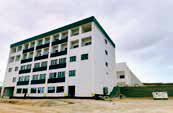
ceramic machinery, Keda’s business has been explored into something different, including wall material machinery, stone machinery, building materials, lithium-ion battery materials, lithium-ion battery materials machinery, coal gasification, hydraulic pump, smart energy, etc.
HLT&DLT signed a cooperation agreement with Vietnam's PTG Granite to supply a high-end complete plant solution for the production of glazed and speckled tiles. The project covers the entire process from raw material preparation to forming and thermal systems, delivering a comprehensive solution and creating a new chapter in ChinaVietnam cooperation in the field
of intelligent manufacturing.
The PTG site covers 250,000 square meters and is equipped with three large-scale intelligent production lines. It is estimated that once the facility is fully operational, it will be able to produce 20 million square meters of ceramics annually. This will significantly reshape the ceramics industry in Vietnam.
HLT&DLT integrated its
strengths in intelligence, automation, and digitalisation to meet the specific demands of the Vietnamese market. The complete solution includes a continuous feeding system, energy-saving intermittent and continuous ball milling systems, intelligent spray pulverising system, 2 YP7890 hydraulic presses, EM high-efficiency self-circulating seven-layer dryers, a 4.0 Smart Energy-
Efficient Firing Kiln with pre-kiln drying, glaze line drying and other auxiliary machinery. It is possible to achieve both intelligent production and environmental sustainability with this setup. The production base will support rapid switching between formats including 800mm by 800mm, 1000mm by 1000mm, and 600mm by 1200mm, meeting PTG's quality standards.
Hyundai Mobis announced on 7th May that it has opened an R&D base dedicated to software in Hyderabad, Telangana, which is known as the Silicon Valley of India. Following the launching of its first Technical Center of India in 2007, Hyundai Mobis established its second Indian center in 2020 and has since operated those two centres.
The new integrated largescale R&D centre aims to accommodate the increasing number of software R&D personnel and combine the company’s dispersed R&D centres to maximise synergy.
Located in the centre of Hyderabad, the new integrated R&Dbasehasatotalfloorareaof about 24,000 m2 and is located in a commercial area where global technology giants are concentrated, making it easy to secure excellent software talent. The 10-story building houses research spaces, data centres, labs and training rooms, partner workspaces, and break rooms. Behind the company’s decision to build the R&D base was the rapidly growing Indian automotive market. According
to a global research firm, India’s annual new car sales volume is 5.2 million vehicles, the third largest in the world, and is expected to grow to 6.2 million by 2028.
In particular, as the Indian automobile market has shifted from small cars to SUVs and EVs, the application of new level 2 autonomous driving features such as large displays and advanced driver-assistance systems (ADAS) is becoming more active. Accordingly, Hyundai Mobis is putting in a lot of effort to make its Technical Center of India a strategic hub for boosting global sales.
To this end, the company plans to develop it into an R&D hub that drives product cost competitiveness, performance, quality, and technology based on its abundant software R&D personnel. Hyundai Mobis planstocollaboratewithvehicle software companies near its R&D center in Hyderabad, creating an external ecosystem and continuing to hire talented people.
The strategy is to develop the Technical Center of
India as a global software hub with its own business capabilities and use it as an advanced base to provide integrated solutions to global carmakers.
Hyundai Mobis plans to expand the scope of software R&D at the center by increasing its participation from the early stages of new product development, developing software for local vehicles at the center, and focusing on streamlining productivity through the introduction of artificial intelligence.

Jong-keun Lee, head of HyundaiMobisTechnicalCenter of India, said: “The Technical Center of India has a large pool of developers, so it is a place where many new R&D attempts are made. Based on our nearly 20 years of experience in developing production vehicles, we will promote the advancement of software and contribute to improving product competitiveness.”
Currently, Hyundai Mobis is
accelerating the development of a hardware and software integrated platform that reflects the trend around softwaredefined vehicles (SDVs). This integrated platform is expected to emerge as a onestop solution that supports the reduction of development costs and the convenience of the R&D environment for global customers with a customized system that can respond to each customer and vehicle segment flexibly.
Meanwhile, Hyundai Mobis not only operates its Korean R&D centres, such as the Technical Center of Korea Mabuk and the Technical Center of Korea Uiwang, but it also operates overseas R&D centres in India, Germany, and China.
As the UAE advances toward its net-zero emissions target by 2050 and enforces stringent green building standards, the demand for eco-conscious construction materials is steadily rising. Spanish ceramic tiles are playing an increasingly prominent role in this transformation, known for theirsustainablemanufacturing processes, energy-efficient properties, and design versatility. Projects such as Abu Dhabi’s Al Qana development exemplify how these materials combine durability, cultural sensitivity, and sustainability within the region’s architectural landscape.
The 24th edition of the Tile of Spain Awards recognising excellence in Architecture, Interior Design, and Final
Degree Projects (MTP) is now open for entries. Organised by ASCER (Spanish Ceramic Tile Manufacturers’ Association), the international competition champions innovation in the use of Spanish ceramic tiles across global design and architecture projects.
This year’s awards present a timely opportunity for design professionals in the UAE, where material innovation is a growing focus. The inclusion of Spanish ceramics in local projects continues to align with the country’s push for aesthetically distinctive, technically robust, and environmentally responsible design solutions.
The 2025 edition introduces new subcategories in the Architecture and Interior
Design segments, distinguishing projects based on the type of ceramic used such as dry-pressed porcelain and other ceramics including mosaics, terracotta, and extruded stoneware.
The Tile of Spain Awards are supported by the Regional Ministry of Finance of the Generalitat Valenciana. The jury will be chaired by the architect Julio Touza Rodríguez and includes several leading figures from the fields of architecture and design.The deadline for submitting projects is 20 October 2025.
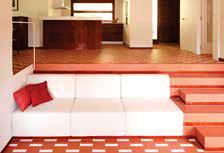
Tile of Spain is the voice of the Spanish tile industry, encompassing more than 120
tile manufacturers. Renowned worldwide for an inspiring blend of aesthetic and technical innovation, Spanish tiles, manufactured in Spain, embody the spirit of an industry that prides itself on proposing beautiful, meaningful and high-performance solutions to flooring, wall coverings, furnishing and external paving and cladding.






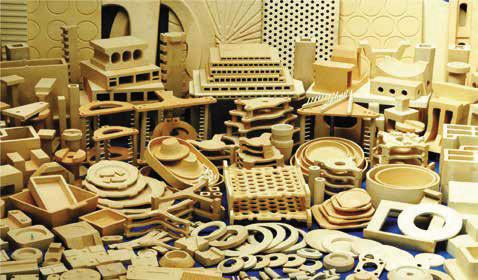
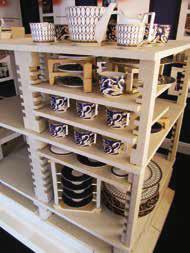
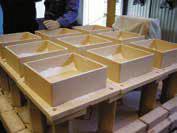







Asia’s largest kiln furniture manufacturer
Trusted supplier to major names
Reliable global partner
ISO accredited - validated systems
R&D customer support centre
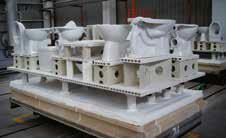
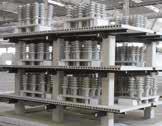



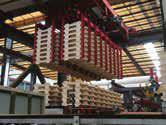
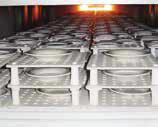
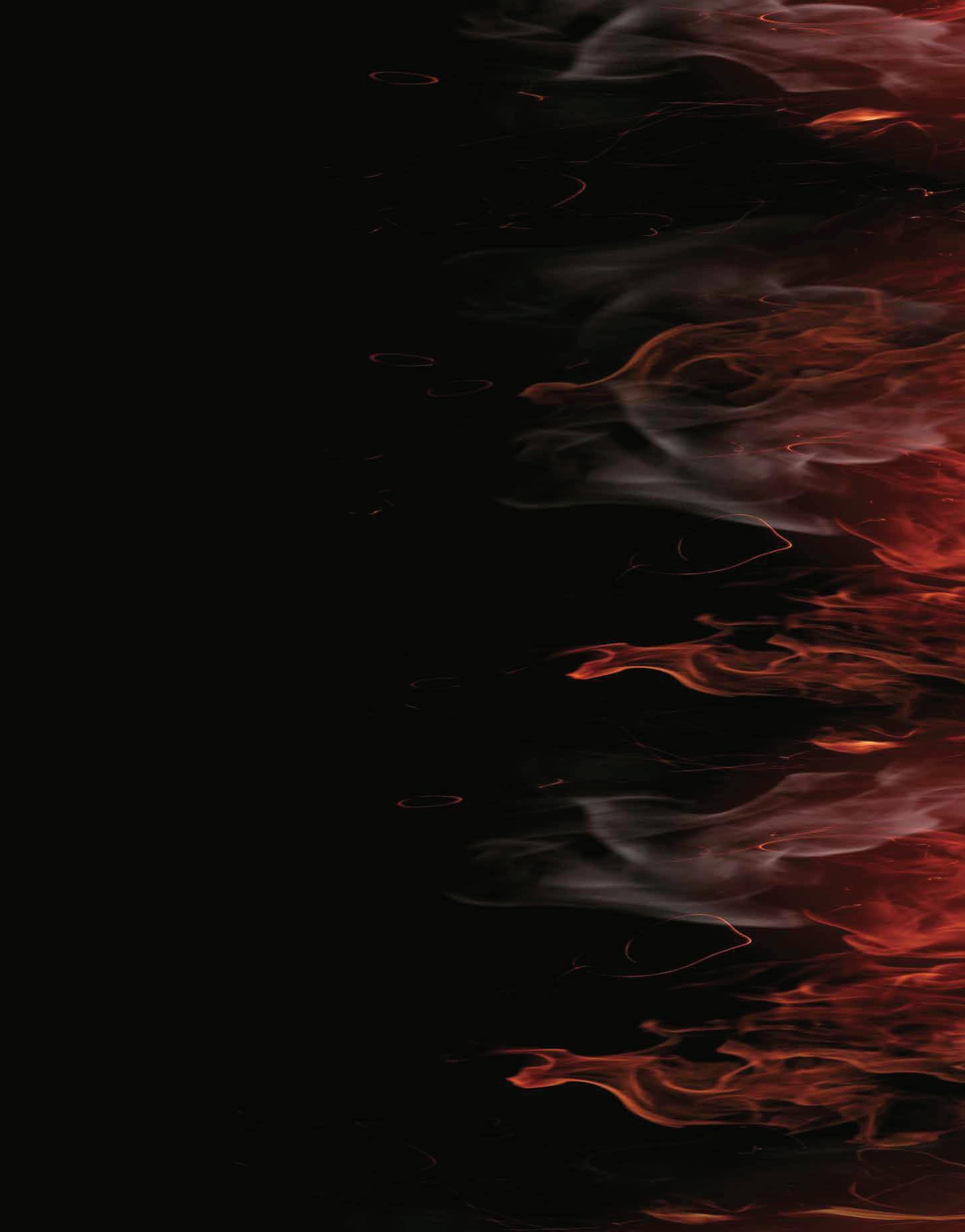
Tel:+86







Sanipak, a Turkish manufacturer of personal hygiene products, announced it has taken an important step towards protecting water resources by establishing the Yalova Wastewater Recycling Facility.
Completed with a 1 million investment, the new facility supports the responsible use of the region's clean water resources by recycling 70% of its wastewater. It is estimated that the facility will save 400,000 m3 of water each year. The amount is equal to the daily water consumption of approximately two million people.
Sanipak CEO Bulent Kozlu said: “Water, the most important input in our production processes, is a critical and crucial natural resource for both our planet and our company. In this
SAUDI ARABIA
context, efficiency projects for the responsible use of spring water and the evaluation of water recycling opportunities are at the forefront of our agenda.
"Thanks to our investments in tissue machines and efficiency projects, we have achieved a 40% improvement in water use per ton in Yalova over the last 10 years and a 30% improvement in Manisa over the last five years.
"At Sanipak, we set ambitious goals to further reduce our water use every year. We also implemented our new Wastewater Recycling Facility investment in Yalova with the same goal in mind. We continue to work to reduce our water use per ton by 50% by 2028.”
Its motto 'Our Promise to Tomorrow' guides Sanipak's environmental, social, and governance (ESG)
sustainability activities, the company said.

In addition to developing environmentally friendly solutions across all production and product lifecycle processes, Sanipak also pursues concrete targets for environmental sustainability through water and energy efficiency, renewable energy use, waste
A Turkish personal hygiene products company, Sanipak, specialises in tissue paper, baby care and wet wipes, personal care, household cleaning, and outdoor use. Its portfolio of brands includes Selpak, Solo, Silen, Viva, Servis, Pandoo, Dally,
Sany, Uni Baby, Selin, OKEY, Detan, Defans and Selpak Professional. With three production facilities in Turkey and two in Morocco, the company employs more than 2,000 people. In addition to exporting to more than 60 countries and holding a 40% share of Turkey's tissue export market, Sanipak is part of the 2 billion turnover
The Desert Architecture Forum, a first-of-its-kind platform aimed at defining the future of urban development through the lens of heritage, sustainability, and national identity, will take place in Saudi Arabia, under the strategic support of the Architecture and Design Commission and Urban Heritage Association. This forum, organised by Creative Connect Exhibitions & Conferences and coorganised by Great Minds Event Management, will bring together leading architects, developers, government decision makers, and urban planners from 20th21st October 2025 at JW Marriott in Riyadh. It will serve as the principal stage in the advancement of the Architectural Character Map, an initiative launched by Crown Prince Mohammed bin Salman that categorises the kingdom's architectural identity
into 19 culturally distinct regional styles.
This event is expected to be instrumental in advancing Vision 2030's vision for cultural and urban development by translating architectural policy into construction, design, and planning strategies that will yield real-world results.
The Desert Architecture Forum will be built around four core messages namely Saudi Arabia as a Global Pioneer: Establishing the kingdom as a global reference point for culturally grounded, environmentally sustainable architecture; From Vision to Execution: Highlighting the transition from strategic planning to implementation on the ground; Tradition Meets Modernity: Merging Saudi Arabia’s rich architectural past with contemporary design innovation and smart city planning; and Cultural Sustainability in Practice:
Reinforcing the importance of architecture in shaping societal identity, economic growth, and environmental responsibility.
With keynote addresses from senior officials from the public and private sectors, the Forum aims to encourage active dialogue between them in order to create Saudi cities that are future-ready and reflect the Kingdom's values.
Sumayah Sulaiman AlSolaiman, CEO of the Architecture and Design Commission, said: “At the commission, we believe architecture is not just a discipline, but a driver of cultural identity, economic resilience, and environmental harmony.
“Initiatives such as the Desert Architecture Forum, which are aligned with the ambitions of Saudi Vision 2030, showcasing Saudi Arabia’s architectural narrative, rooted in heritage, shaped by sustainability and
propelled by innovation.
“As a strategic partner, we reaffirm our commitment to cultivating a design ecosystem that transforms our natural landscape into a canvas for excellence where tradition and modernity coexist.”
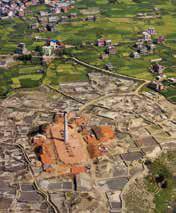

This year, Esmalglass-Itaca isreturningtoCersaiewith proposalsaimedatcreating amorecreative,innovative andsustainableceramicindustry, where excellence is key to the evolution of materials and the advancement of the ceramic industryasawhole.
AmemberoftheAltadiaGroup, Esmalglass-Itaca has become theGroup'stechnologicalengine through its development of high value-added products. This activity has helped the company establish itself as a strategic and trustedpartnerformanufacturers worldwide, enabling them to gain competitive advantages. The company's service-driven approach demonstrates its ability to transform processes and its expertise and knowledge in the field of frits, glazes and
digitalinks.
For this edition of Cersaie, the company o ers eco-sustainable products based on research and theuseofnewtechnologies.
The development of waterbased digital glazes, the reduction of emissions, and the optimisation of resources are someoftheexamplesofhowthe company translates its values into action. The following are someofthecompany'ssolutions and products that can be found atthisneweditionofCersaie.
DigitalGlass, is a set of waterbaseddigitalglazesappliedusing the Inkjet technology, unlike the traditional method, which uses organicsolvents.Thissystemcan reduce water consumption by up to 10 times, eliminate odours by 90%, reduce hydrocarbon emissions, and minimise waste
byupto40%.
In addition to facilitating automation, this proposal has led to higher model changes in a short amount of time, which has resulted in reduced labor costs and increased marketadaptability.
The Esmalglass-Itaca ink sets are designed to address the current challenges of ceramic decoration, and to meet market demands for sustainability, performance,andaesthetics.The sets are designed to minimise emissions and eliminate odors at chimney outlets. In addition, they o er greater colour intensity, more e cient ink use, and greater versatility in digital applications, even with high inkloads.
The Slim-Body solution is included in the fully digital

proposals for large-format, thin-body tiles that reduce gas consumption by 15%, CO2 emissions by 12%, and improve productivityby30%.
The proposal can be used in ventilated facades, countertops, aswellasflooringorwallcladding foralltypesofspaces.
Theindustrialsectorwillbenefit from these three solutions by reducing environmental impact and costs associated with waterconsumption.
Corning Incorporated announcedacollaboration with Broadcom Incorporated, a supplier in the semiconductor field, on a co-packaged optics (CPO) infrastructure that will significantly increase processing capacitywithindatacentres.
Corning will supply cuttingedge optical components for Broadcom’s Bailly CPO system, the industry’s first CPO-based 51.2 terabit per second (TBps) ethernet switch. This combination will deliver significant improvements in optical interconnection density and power savings, making it ideal for large-scale artificial intelligence(AI)clusters.
CPO infrastructure is meeting the needs of AI workloads by improving networking and processing bandwidth, density, and power e ciency inside data centres by placing optics and electronics closer together in a processingsystem.CPOcantake AI to the next level by enabling higher speeds and densities while improving overall power e ciencyindatacentres.
Broadcom’s Bailly CPO system incorporates eight
silicon photonics-based, 6.4 TBps optical engines that are co-packaged with Broadcom’s StrataXGS Tomahawk 5 Ethernet switchchip.
Corning is now a qualified supplier of the optical infrastructure that is needed to bring fibres to these optical engines. The fibre harnesses that make up this optical infrastructureincludeconnectors for the front-plate and external laser modules, single mode and polarization maintaining fibres, and fibre array units (FAUs) that connect the fibres to the optical engines with a high degree of precisionandreliability.
Benoit Fleury, Director, CPO business development, Corning OpticalCommunications,said:“As AI-enableddatacentrescontinue to scale, Corning has been collaborating with Broadcom to ensure CPO connectivity needs are met with a high degree of performanceandreliability.
“With this latest collaboration, we're delivering an optical connectivity solution that enables unprecedented speeds and bandwidth concentrations with lower power consumptions andcosts.”
Sheng Zhang, chief technology o cerofopticalsystemsdivision, Broadcom, said: “The explosive growthofAIworkloadsisdriving unprecedented demands on interconnect bandwidth. Our multi-year collaboration with Corning on high density fibre connectivity solutions for the TH5-Bailly CPO system has resulted in breakthrough performanceatscale.
“We are thrilled to deepen this relationshipasweworktogether onthenext-generation200Gper lane CPO solutions, unlocking even greater power e ciency and bandwidth density for the next generation of AI-powered datacentres.”
Corning o ers a wide range of optical fibre, cable, and connectivity solutions for data center networking, and continues to unveil new innovations as these networks rapidly evolve. For example, in addition to its collaboration with Broadcom on their CPO product development, Corning has also launched theCPO FlexConnect Fiber, a single mode fibre that is engineered for superior bend performance while mitigating multi-path interference (MPI)
impairments to enhance the overall system performance of the optical infrastructure within aCPOsystem.
Corning is a global innovator in materials science, with a 170yeartrackrecordoflife-changing inventions.Thecompanyapplies its expertise in glass science, ceramic science, and optical physics. Corning's markets include optical communications, mobile consumer electronics, display, automotive, solar, semiconductors, and lifesciences.
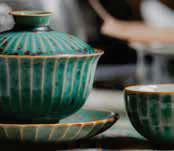
Lhyfe,aproducerofgreenand renewablehydrogenforthe decarbonisation of mobility andindustry,announcedin Julythatithastakenasignificant step forward with the first tests of green hydrogen combustion as a replacement for fossil gas combustion, and has made its first delivery of renewable hydrogeninSpain,intheValencia region. The company said this first experiment, successfully deployed in the ceramics sector, can now be replicated in other sectors using combustion, due to the mixing kit developed byLhyfe.
The combustion of fossil fuels, mainly natural gas, is used in many industries (e.g. ceramics, frit, cement, steel, glass, nonferrous metals, etc.) to reach the high temperatures required by their processes (between 400°C and 1550°C). Like many energyintensivesectors,theseindustries are now seeking to reduce their carbon intensity by replacing naturalgaswithgreenhydrogen. Burninggreenhydrogenemitsno CO2,unlikeburningnaturalgas.
Spain’s Valencia region is
home to many manufacturers of ceramics and frit (a glaze materialthatgivestilestheirshine andstrength).
Lhyfe delivered three tonnes of green hydrogen in just three weeks to the Valencia region to decarboniseoneoftheplayersin thisceramicssector.Thisisitsfirst deliverytotheIberianPeninsula.
The green hydrogen was produced at the Lhyfe site in Bessieres, Haute-Garonne (France), which came on stream in 2024 and has a production capacity of up to two tonnes of green hydrogen a day (5 MW).
Lhyfe transported the three tonnes of hydrogen using its advanced logistics capabilities, in particular its fleet of hydrogen bulk containers, which is one of the largest and most modern in Europe(withnearly70containers).
Lhyfe is a pioneer in its sector whichbeganproducingrenewable green hydrogen in 2021. It is regularly asked to take part in pioneeringhydrogenexperiments andhasthusdevelopedtheability to adapt to all its customers’ decarbonisationneeds.
These combustion tests, the
firstcarriedoutbyLhyfe,involved mixing combustion gases and gradually increasing the proportion of green hydrogen as a replacement for natural gas. To achievethis,Lhyfehasdeveloped a ‘mixing kit’ that gradually increasestheproportionofgreen hydrogen in the mixture from zeroto100%.
The tests were carried out successfully, requiring only the burnerstobechanged.
This system can now be deployed in many industries that use high-temperature gas combustion (at between 400°C and1550°C).
Frederic Naudi, industry key account manager at Lhyfe, said:“These combustion tests, usingupto100%greenhydrogen, representanimportantmilestone forLhyfe,whichisthussupporting the first trials to decarbonise manufacturing processes in an industry that consumes a lot of fossilgas.
“Wecannowdeploythissystem inmanyindustriesthatburnfossil fuels.In this way, we continue our mission to decarbonise as of today, as well as that of
On 17th June 2025, Ceramics UK hosted itsDelivering Net Zero Conferenceat Sta ordshire University, bringing together around 115 delegates from across the UK ceramics industry, Government, technology providers other stakeholders. The event provided a vital platform for sharing insights into sustainable practices,cutting-edgeresearch, and the regulatory landscape shapingthesector’sfuture.
The conference was chaired by well-known analyst, writer, and broadcasterSepi GolzariMunro, who introduced the key themes and objectives and facilitated expert presentations and panel discussion focused on accelerating the UK ceramics industry’stransitiontonetzero.
Highlights from the day included Lee Brownsword,
Ceramics
UK’s associate director, providing an update on the UK ceramics industry's developmentsandprogressover thepasttwodecades,addressing current challenges and outlining thestrategicpathforward.
EdmundWard,deputydirector, industrial decarbonisation at the Department for Energy Security and Net Zero (DESNZ), spoke aboutkeyemergingGovernment policiesandinitiativesrelevantto thesector.
Malin Cunningham from Hattrick shed light on the complexities of greenwashing and the regulatory landscape, emphasising the importance of transparency and credibility of sustainability claims forcompanies.
Richard Goodhead, Lucideon’s chiefmarketingo cer,presented on overcoming sustainability challengeswithinthefoundation
industries, highlighting real-world applications and innovativesolutions.
In a discussion panel hosted by Sepi Golzari-Munro on hydrogen for the UK ceramic industry, Clare Jackson (CEO of Hydrogen UK), Chloe Tindale (strategic marketing manager for hydrogen in the UK at Air Products), David Manley (head of sustainability at Forterra), and Harriet Culver (hydrogen lead at DESNZ) discussed the introduction of hydrogen to the economy and the UK ceramicsindustry.
Jonathan Morris, national energy system operator’s insight lead for Future Energy Scenarios (FES), discussed the future of energy to 2050 and engagement routes for ceramicsmanufacturers.
Theconferencealsocelebrated significant achievements within
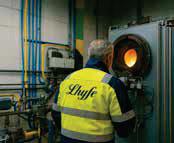
supportingmanufacturersintheir decarbonisationexperiments.”
Lhyfe,whoseSpanishsubsidiary openedin2022andhaso cesin MadridandBarcelona,isworking on several projects in the Iberian Peninsula. One has already been announced in Vallmoll (Tarragona), with an installed capacity of 15 MW, producing up to 4.5 to 5 tonnes of green hydrogenaday.
Scheduled to come on stream in 2027, the project has been selected under the H2 Pioneros programme to receive a €14 million grant from the Spanish government. This project aims to decarbonise the uses of industrial players, particularly in the chemicals sector, but also inmobility.

theindustry:
Brownsword said: “It is crucial that UK ceramics producers can continue to innovate and invest to reduce emissions, which they have done over many decades, but they must also stay competitive versus companiesoverseas.
“The conference brings all issuestothefore,whetherthat’s Government policy, research activities or sector progress, and highlights key needs/ challenges so companies in the sector can continue the l ow-carbontransition.”
The University of Missouri’s transformative initiative to build a new, state-ofthe-art research reactor, NextGen MURR, is o cially underwaywiththesigningofthe first agreement, announced on 16thApril.
Mizzou will partner with a consortiumthatincludesHyundai Engineering America, the Korea Atomic Energy Research Institute (KAERI), the Hyundai Engineering Company and MPR Associates forthedesignandlicensingofthe newreactor.
University of Missouri president Mun Choi said: “This is a historic moment for our university, our state and the future of nuclear scienceandmedicine.
“NextGen MURR represents our commitment to research that changes lives. It will allow Mizzou to lead the nation in producing critical medical isotopes while opening new frontiers in science, engineeringandpatientcare.”
The announcement comes as global demand for radioisotopes continues to rise, with growing recognition of their role in
precisiondiagnosticsandtargeted cancertherapies.Thenewreactor and supporting infrastructure will be the largest capital investment in the university’s history and will position Missouri as a national hub for innovation, investment and manufacturing in nuclear healthtechnologies.
Todd Graves, chair of the UM Board of Curators, said: “NextGen MURR is more than a reactor; it’s an engine of progress. It will enhance Missouri’s role as a leader in nuclear science medical research, economic development and education for generations tocome.”
The consortium brings proficiency in developing and designing research reactors throughKAERI,globallyrenowned engineering and construction services by Hyundai Engineering, and nuclear regulatory and licensing expertise found in MPRAssociates.
HanGyuJoo,presidentofKAERI, said:“Thisremarkablepartnership is made possible through the relentless dedication of experts involved in this project as well as
the firm partnership between our twocountriesandpeople.
“Building upon this opportunity, wewillworkcloselytogetherwith MizzouforNextGenMURR,saving andimprovinglives.”
The initial agreement with the consortium covers the design studies phase to develop the ‘roadmap’ for the new reactor. It willincludedetailedprogramming studies and a preliminary site evaluation and will establish an initial project cost and schedule estimate for the entire site. This $10millionagreementisexpected to take approximately six months to complete, and the results will beintegratedintothepreliminary design and licensing phase under a separate contract, overseen by theBoardofCuratorsandMizzou leadership.The total initiative is expectedtotakeeightto10years.
Michael Hoehn II, programme director for NextGen MURR, said: “The new reactor will be designed to meet the needs of thefuture.
“From isotope production to advanced materials testing and workforce development,
this reactor will be a platform for innovation that empowers the next generation of scientists, engineers and healthcare providers…and most importantly, improve the lives of US patients. It is more than infrastructure; it is a strategic nationalassetinthemaking.”
“Throughout this project, we promisetohonourMizzou’score values, respecting our partners, taking responsibility, fostering discovery and striving for excellenceateverystep,”
In-cheol Lim, project executive of the consortium, said. “We are committed to building a partnership rooted in trust, collaboration and sharedpurpose.”
Building on the legacy of the University of Missouri Research Reactor, the only U.S. producer of critical medical isotopes used totreatvarioustypesofcancers, the second reactor will play a vital role in securing a domestic supply of radioisotopes and advancing new discoveries in cancer treatment and nuclear medicineforgenerations.
Quantum Systems, a company operating in artificial intelligence (AI)-powered aerial intelligencesystemsfordefence, emergency services, and industry,hasraised€160million innewfunding,ledbyBalderton Capital, with participation from Hensoldt, Airbus Defense and Space, Bullhound Capital, LP&E AG and existing investors, including HV Capital, Project A, PeterThiel,DTCP,OmnesCapital, Airbus Ventures, Porsche SE andNotion.
The funding, which brings the total raised by the company to €310 million, will be used to accelerate global expansion, scale production, and advance the company’s autonomous dronesystems,so wareandAI. Foundedin2015byateamwith experience in drones, robotics, andimagerycollection,Quantum Systems’ family of modular, dual-use unmanned aerial
systems (UAS) bring together the latest advances in eVTOL technology, AI, edge computing, andautonomytohelpcustomers makebetterdecisions,fasterand moreaccurately.
Quantum Systems’ drones and intelligence systems are currently used by NATO-aligned forces – including those in Germany,Ukraine,Australia,New Zealand and Spain. Following the acquisition of Germany’s AirRobot in March, Quantum Systems is a tier-1 supplier to theUKMinistryofDefence.More recently, the firm expanded into the UK market with the acquisition of Nordic Unmanned UK,aglobalproviderofhigh-end droneproductsandservices.
Commercial applications of Quantum Systems’ solutions include mapping drones across mining, agriculture, and infrastructure. Notable clients include RocketDNA and the Indiangovernment’sDepartment
forScienceandTechnology.
Since launching its flagship Vectorplatformin2019,Quantum Systems has continuously innovated in response to the growing demands of its customers, and the shi ing defenceandbusinesslandscapes. Its latest iteration, Vector AI, debuted earlier this year and has already been combattested in Ukraine, o ering real-time ISR (intelligence, surveillance, reconnaissance) capabilities in areas where GPS and communications are notavailable.
The new funding follows severalyearsofexceeding100% year-over-year revenue growth for the company, which now has 550 people across sites in Germany,Australia,Ukraineand Romania.
Florian Seibel, co-CEO and cofounder,QuantumSystems,said: “The need for sovereign, aerial intelligence has never been
more pressing. Our systems, a powerful blend of hardware and so ware, are built for the realities of modern defence and security challenges; they are autonomous, interoperable, and provenunderharshconditions.
“Withsupportfromournewand existinginvestors,wearereadyto become the European leader in robotised and AI-powered aerial intelligence solutions, providing both public and commercial customers with the high-quality, accuratedatatheyneedfordaily decisionmaking.
Sven Kruck, co-CEO, Quantum Systems, said: The successful completion of our C Series marks a significant milestone in our company's history. This investment allows us to follow our vision. We will increase our global production capacity to meet the growing demand for our AI-powered drone systems and expand our market presenceworldwide.”





Specialist electronics manufacturer,KemptronOy (Kemptron)hasdeployeda brand-new production line usingPanasonicFactorySolutions’ NPM-GP/L printer and NPM-W2 pick-and-place machines. Installed by longstanding Panasonic partner and specialist SMT equipment provider, SMT House, the automated turnkey solutionfuture-proofsKemptron’s productioncapabilities,delivering theagilityrequiredtothriveinthe hyper-competitive electronics manufacturingsector.
Founded in 2024, Kemptron Oy, is based in Lahti, Finland and employs 130 specialists in electronics manufacturing for industrialOEMclients.Itproduces printed circuit boards (PCBs), subassemblies, and transformers, in addition to DC fast chargers for EVs, o road vehicles, boats, andaircra .
Using Panasonic’s advanced line management so ware, PanaCIM-EE, SMT House has connectedKemptron’sproduction line to a third-party warehouse
The German Association of Jewellery, Watches, Silverware and Related Industry (BVSU) and ceramitec have entered into a strategic partnership. ceramitec is an international fair for highperformanceceramicsheldevery twoyearsattheexhibitioncentre in Munich. The next exhibition will be held from 24th to 26th March2026
The focus, among other things, will be on technical ceramics. Medical and dental technology, automobiles, aviation, jewellery and watchmaking, among many otherbusinesssectors,relyheavily on these materials. ceramitec will also feature powder metallurgy, an important manufacturing processformanyBVSUmembers.
The ceramitec exhibition will feature leading global exhibitors showcasing innovative solutions and processes along the entire valuechain,fromrawmaterialsto finishedproducts.
Withmorethan13,000exhibitors from 84 countries, the trade fair
management system, in addition to its manufacturing execution systems, ERP so ware, and inventorymanagementtools.This allows crucial data to be shared in real-time across all areas of its connectedfactory.
Using a High Mix, Low Volume (HMLV) production structure, Kemptron creates approximately 2.000 individual boards produced every day. With more than 10 set-up changes needed per shi , increasing production speed and flexibilityarecrucial.
Panasonic’s fully automated, high precision NPM-GP/L stencil printer provides high-quality printing, delivering remarkable print repeatability and consistent precision. It supports both automated model changeover to streamlinethetransitionbetween di erent production runs, and in-time machine monitoring to minimisedowntime.
With increased feeder capacity and advance warning systems when components are running low, the NPM-GP/L significantly increases production uptime and
e ciency, enabling Kemptron to respond to customer supply and demand changes in realtime through continuous, autonomousupdates.
Panasonic’s NPM-W2 highspeed, modular pick-and-place machine delivers e cient and preciseSMTassembly.Placingup to77,000componentsperhour,it integratescomponentplacement, solder paste inspection (SPI), automated optical inspection (AOI), and adhesive dispensing intoasingleplatform.
Ideal for handling larger PCB assemblies, the NPM-W2 automatically receives order information, andthe materials required for specific PCBs in real-time, thanks to Panasonic’s line management so ware. Using a pay-per-use model for components, this increases flexibility, and reduces unnecessary waste, and overall productiontime.
Jari Takala, general manager at KemptronOy,said:“Weneededan automatedsolutionthatincreased speedofassembly,whilstreducing
changeover times. Panasonic Connect’s autonomous factory solutions were exactly what we werelookingfor.
Furthermore, the flexibility of renting these machines from SMT House, not to mention the fantastic service a orded to Kemptron before, during, and a er installation, made this an easydecision.”
SMT House Group was founded in 2012 and specialises in solutions with SMT, THT and Smart Material Handling solutions for the electronics manufacturingindustry.
The company was founded in 1918 and today develops innovative technology and solutions for a variety of applications in the consumer electronics, housing, automotive, industry, communications, and energy sectors worldwide. As of 1st April 2022, Panasonic Group has switched to an operating company system, with Panasonic Holdings Corporation serving as a holding company and eight companiesunderitsumbrella.
providesanopportunitytoexplore the latest technologies and materials.Inthisregard,theBVSU partnership becomes important.
According to ceramitec, the aim is to promote a transfer of technology between exhibitors and visitors to the trade fair and membersoftheassociation.
MarittaLepp,exhibitiondirector of ceramitec, explains: “The jewellery and watch industry opensupanewtargetgroupforus in the field of technical ceramics, which still has a lot of potential. TheBVSUistheidealpartnerand multiplierforusintheindustry.”
BVSU managing director Guido Grohmann said: “ceramitec is an ideal platform for our member companies to find out about the latest technologies and materialsfortheirownproduction processes and to meet potential businesspartners.Wearelooking forward to exciting moments and encountersatceramitec.”
More than ever, ceramitec is positioning itself as the central platform for the high-
performance material ceramic and its growing importance in high-tech applications. The exhibition is facing a structural change, with technical ceramics, additive manufacturing, and powder metallurgy in particular opening up new growthprospects.
The trade fair is using this development to reposition itself.
In addition to the ceramics industry,theaimistoincreasingly reach user industries such as mechanicalengineering,medical technology, the automotive industry, aerospace, electronics, and the energy sector, markets in which ceramics are o en still underestimated as a highperformancematerial.
As part of its strategic development, ceramitec is also significantly expanding its range oftopicsfor2026.Inadditiontothe previousfocusondecarbonisation and energy e ciency, there will be a stronger focus on the topic of the circular economy. Digitalisation, automation and

artificial intelligence will play a central role, especially in the conferenceprogram.
Another focus will be on the new special topic ‘Calcined clays asacementsubstitutetoreduce CO in cement production’. It will be implemented in close cooperation with clay suppliers, equipment manufacturers, and theVDMAandVDZassociations.
In addition, the special show ‘Technical Ceramics Experience’ highlights the potential of technical ceramics. Curated by Goller Verlag, it uses real application objects to show how widely technical ceramics are already used in modern technologies—from mobility and electronicstomedicaltechnology.
Sacmi Group announced on May 17th that it had achieved sales revenues of €1.728 billion in 2024. In a media statement, the company said that despite the complex international economic and geopolitical backdrop, its economic and financial fundamentals proved sound. The company's net equity exceeded €1billionforthefirsttime(€1.055 billion, +172 million compared to 2023), while EBITDA exceeded €323 million and EBIT was €236 million. The net profit exceeded €200million.
Thosewerethehighlightsofthe Consolidated Financial Statement presented on 16th May, at the shareholders’ meeting of the parentcompany(SACMIImola).
Paolo Mongardi (pictured), president, Sacmi, says: “2024 was a solid year that went beyond expectations. SACMI's forwardthinking strategy rests on solid foundations and fully embraces the global drivers of digitalisation andsustainability.”
The company stated: “The year saw a continued focus on the core businesses, confirming the reputation of, and customers’
confidence in, SACMI products acrossallsectors.
In parallel with the to-beexpectedslowdownintheceramic sector, the result of international tensions and the sluggish global construction market, the rigid packaging,advancedtechnologies, packaging and chocolate sectors allperformedexcellently,drivenby highlydynamicmarketsreceptive toinnovation.”
At €71 million, investment remained consistent with the previous year, with an emphasis on innovation (276 patent applications in 2024 alone, over 6,200 in the Group's history) and training(over94,000hours).
Additionally, Sacmi demonstrated its role as an important player in the transition to an environmentally friendly manufacturingindustry.Aspartof the year, it introduced new firing processes (electric), new process control solutions (a er acquiring majority stake in Italvision in 2024), and new eco-friendly packaging standards, processes andmaterials.
“Sustainabilityisthekeytofuture competitiveness,” says Mongardi. “We continue to invest in people
by focusing on our values, which haveconsistentlyguidedSacmito worldwidesuccess.”
It is evident from a governance perspective that the company is committed to sustainability: the new European CSRD (Corporate Sustainability Reporting Directive) obligations were brought forward to 2024; the first Group SustainabilityPlanwasdeveloped, a comprehensive project that outlines objectives and goals acrosstheentirevaluechainfrom supplierstolocalcommunities.
With respect to environmental, social, and governance (ESG) matters, Sacmi has strengthened monitoring of indirect emissions associated with the use of its products and plants: this is part of a broader endeavor to ensure sustainable processes and minimise environmental impacts throughouttheproduct'slifecycle.
Likewise, the share of selfproduced renewable energy is increasing (2.6 million kWh), with thegoalofprogressivelyreducing carbon emissions from the productionfacilities.
On the employment front, the Grouphad4,756employeesatthe endof2024,withover50%ofnew

hiresbeingunder30yearsofage.
The company has also continued to work closely with universities andresearchfacilities.
In 2024, Sacmi's connections with local communities were furtherstrengthened,with90%of itssuppliersbeinglocal.Aspartof itscharitablegiving,thecompany also donated €2.4 million to a variety of projects in the fields of healthcare, education, safety, inclusion, sports, and culture over thethree-yearperiod.
Sacmi's 105th anniversary made 2024 a special year for the company,saysMongardi.
“We entered 2025 aware of not just the challenges but also the opportunities with all the confidence that only a long history of innovation, solidity and responsibilitycanprovide.”
Holcim is partnering with Pritzker Prizewinning architect Alejandro Aravena and his firm Elemental to present a new biochar technology that transforms buildings into carbonsinks.
Presented in Venice during the 2025 Architecture Biennale, the technologyisappliedforthefirst timeinafull-scaleBasicServices Unit housing prototype. The prototype follows the principle of incremental design, entailing fast and e cient construction throughtheprovisionofessential housing components, while empowering people to finish buildingtheirhomethemselves.
Holcim’s net-zerobiochar concrete mix also incorporates circularity, using 100% recycledaggregates.
MiljanGutovic,CEO,Holcim,said: “Holcimistheleadingpartnerfor sustainable construction, and we workwithstakeholdersacrossthe
value chain to deliver innovative and sustainable solutions for ourcustomers.
“Through our partnership with Alejandro Aravena and the Elemental team, we have demonstrated how Holcim’s new carbon sink technology can shapethefutureofconstruction.”
Alejandro Aravena, founder, Elemental, said: “In Venice, we are bringing incremental housing to its core: a structural sanitation unit using precast panels takes care of the basic needs of inhabitation. Holcim’s new decarbonisation technology allows us to address the scale and speed of the housing crisis' demand without putting a strain ontheenvironment.”
Attheendoflife,organicmatter releases CO2; by converting it into a charcoal-like material called biochar, the CO2that would have been released is permanently sequestered. When added to low-carbon
formulations of cement, mortar or concrete, it further reduces their CO2footprint, with no compromiseinperformance.One kilogram of biochar prevents the releaseofuptothreekilogramsof CO2.Thiscarbonsinktechnology broadens Holcim’s range of innovative solutions, from its sustainable building materials ECOPact and ECOPlanet, to its circulartechnologyECOCycle.
Holcim and Elemental’s project is being showcased from 7th May to 23rd November 23 as part of the Time Space Existence exhibition, organised by the European Cultural Centre inVenice.
Holcim is a multinational building solutions company with a net sale of CHF 26.4 billion in 2024. With its 65,000 employees and its partnerships with customers, it o ers a wide range of advanced solutions, ranging from sustainable building materials like ECOPact
and ECOPlanet to its circular technologyinnovations.
ElementalisaDoTankfounded in 2001 by Pritzker Prize winner Alejandro Aravena along with partners Gonzalo Arteaga, Juan Cerda, Victor Oddo and Diego Torres. The company engages in awiderangeofprojects,ranging from housing to public space, fromobjectstobuildings.

Following the acquisition of Ideal Standard, Villeroy & Bochannounceditisontrack with its growth strategy which aims to broaden the Group's position in international markets,distributionchannelsand productcategories.
In the first quarter of 2025, Group revenue rose by 33.2% to €369.1 million largely due to the acquisition. Significant revenue growth was recorded in the EMEA region (Europe, Middle East,Africa).
The fittings business, in particular, made a strong contribution to revenue development. Overall, the company managed to improve its operating EBIT by 4.3% yearon-year to €24.1 million. This confirms the forecast for the full year 2025 as outlined in the annualfinancialstatements.
The Villeroy & Boch Group said in its media statement that it continued its stable economic
development in the first three months of the financial year. The strategic realignment of the Group, initiated with the Ideal Standard integration, is provingsuccessful.
Gabi Schupp, CEO, Villeroy & Boch, said: "The business performance in the first quarter of 2025 confirms that the acquisitionofIdealStandardwas therightstrategicchoice.
“The new Villeroy & Boch Group has expanded its market position in the project-businessdriven growth markets in the Near Middle East, as well as in core Europe. The newly gained strength in the fittings business is having a positive impact on ourbusiness.
"Wehaveabroaderinternational footprint and are therefore less dependent on the economic development of individual markets.Thismakesourbusiness modelmoreresilientandrobust."
The Bathroom and Wellness
Division generated sales of €295.5millioninthefirstquarter of2025,up44.8%ontheprevious year. The strongest growth was achieved in the strategic businessareasoffittings(€+44.8 million)andsanitaryware(€+30.8 million). There were also positive developments in the European and Near Middle East markets, which are strongly driven by the projectbusiness.TheBathroom& Wellness Division closed the first quarterof2025withanoperating profit (EBIT) of €20.0 million, up 14.9%onthepreviousyear.
The Dining and Lifestyle Division generated €72.9 million in revenue in the first quarter of 2025, which was slightly higher than in the previous year (€72.3 million). The positive sales development in the project business, with a sales increase of €3.5 million or 41.2%, and with brick-and-mortar retail partners (€3.1 million or 15.3%) contributed significantly to this.
The Dining and Lifestyle Division closed with an operating result (EBIT) of €4.1 million, which was below the previous year due to aspeciallicenceincomein2024.
In the first quarter of 2025, the Villeroy&BochGroupinvesteda total of €6.5 million in property, plant and equipment, as well as intangibleassets.Themainfocus for both business divisions was the modernisation of production processes, particularly at the production sites in Germany, Egypt,BulgariaandThailand.
The Villeroy & Boch Group is one of the global leaders in premium dining and lifestyle, as well as bathroom and wellness products. Founded in 1748 and headquartered in Mettlach, Germany, the company’s brand portfolio includes its two main brands Villeroy & Boch and Ideal Standard. The Group has more than 12,000 employees and is present in around 140 countriesworldwide.
Fusion energy has the potential to enable the energy transition from fossil fuels, enhance domestic energy security, and power artificial intelligence. Private companies havealready invested more than $8 billion to develop commercial fusion and seize the opportunities it o ers.An urgent challenge, however, is the discovery and evaluation of cost-e ective materials that can withstand extremeconditionsforextended periods, including 150-milliondegree plasmas and intense particlebombardment.
To meet this challenge, MIT’s Plasma Science and Fusion Center (PSFC) has launched the SchmidtLaboratoryforMaterials inNuclearTechnologies,orLMNT (pronounced ‘element’). Backed by a philanthropic consortium led by Eric and Wendy Schmidt, LMNT is designed to speed up the discovery and selection of materials for a variety of fusion powerplantcomponents.
By drawing on MIT's expertise in fusion and materials science, repurposing existing research infrastructure, and tapping into
its close collaborations with leadingprivatefusioncompanies, the PSFC aims to drive rapid progressinthematerialsthatare necessary for commercializing fusionenergyonrapidtimescales.
LMNT will also help develop and assess materials for nuclear power plants, next-generation particle physics experiments, and other science and industryapplications.
ZacharyHartwig,headofLMNT and an associate professor in the Department of Nuclear Science and Engineering (NSE), says, “We need technologies today that will rapidly develop and test materials to support the commercialisation of fusion energy.LMNT’smissionincludes discoverysciencebutseekstogo further, ultimately helping select thematerialsthatwillbeusedto build fusion power plants in the comingyears.”
For decades, researchers have worked to understand how materials behave under fusion conditions using methods like exposing test specimens to lowenergyparticlebeamsorplacing theminthecoreofnuclearfission reactors. These approaches,
however, have significant limitations. Low-energy particle beamsonlyirradiatethethinnest surface layer of materials, while fission reactor irradiation doesn’t accurately replicate the mechanism by which fusion damages materials. Fission irradiation is also an expensive, multiyear process that requires specialisedfacilities.
To overcome these obstacles, researchers at MIT and peer institutionsareexploringtheuse ofenergeticbeamsofprotonsto simulate the damage materials undergo in fusion environments. Proton beams can be tuned to match the damage expected in fusionpowerplants,andprotons penetrate deep enough into test samples to provide insights into how exposure can a ect structural integrity. They also o er the advantage of speed: first, intense proton beams can rapidly damage dozens of material samples at once, allowing researchers to test them in days, rather than years. Second, high-energy proton beams can be generated with a type of particle accelerator knownasacyclotroncommonly
usedinthehealth-careindustry. As a result, LMNT will be built aroundacost-e ective,o -theshelf cyclotron that is easy to obtainandhighlyreliable. LMNT will surround its cyclotronwithfourexperimental areas dedicated to materials scienceresearch.Thelabistaking shape inside the large, shielded concrete vault at PSFC that once housed the Alcator C-Mod tokamak,arecord-settingfusion experiment that ran at the PSFC from1992to2016. By repurposing C-Mod’s former space, the centre is skipping the need for extensive, costly new construction and accelerating the research timelinesignificantly.ThePSFC’s veteran team, who have led major projects like the Alcator tokamaks and advanced hightemperature superconducting magnet development, are overseeing the facilities design, construction, and operation, ensuring LMNT moves quickly from concept to reality. The PSFC expects to receive the cyclotron by the end of 2025, with experimental operations startinginearly2026.


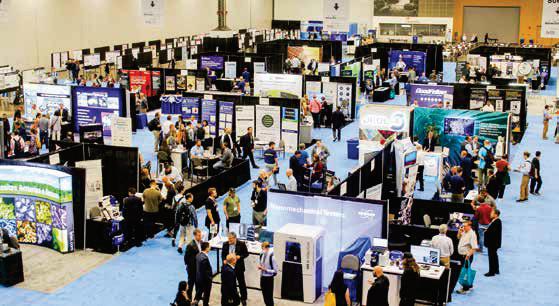









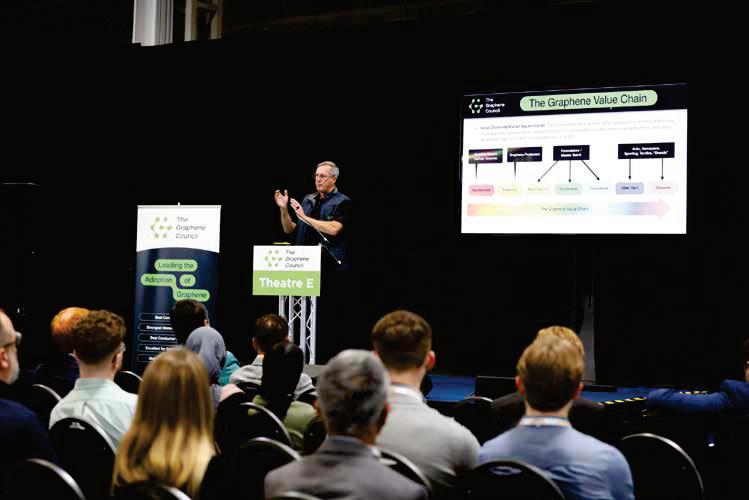











Greenleaf Corporation, a global leader in the manufacture of highperformancecuttingtools and advanced ceramic materials, announced its successful acquisition of key assets from Haydale Ceramic Technologies, LLC. This acquisition enhances Greenleaf’slongstandingposition asaverticallyintegratedsupplier of whisker-reinforced ceramic cutting tools and solidifies its commitment to reliable supply, technical excellence, and continuousinnovation.
For decades, Greenleaf has
been at the forefront of ceramic tool technology, with in-house production of silicon carbide whiskers and proprietary composite ceramics that deliver unmatched performance in demanding machining applications. This acquisition underscores Greenleaf’s dedication to securing the supply chain for these critical materials, ensuring consistent product availability for customersworldwide.
“Our investment rea rms our commitment to American manufacturing and to the long-
termreliabilityofadvancedtooling materials,” said James Greenleaf, President and CEO of Greenleaf Corporation. “Greenleaf’s vertical integration—from raw materials throughfinishedtools—givesour customers a dependable, highquality alternative in the global cuttingtoolmarket.”
The acquisition also aligns with Greenleaf’s recent capital investment in expanded manufacturing operations. This investment increases the company’scapacityforproducing precision-ground tools that meet the exacting standards of
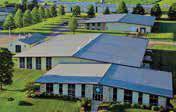
its customers across aerospace, automotive, energy, and other high-performanceindustries. With a reputation built on quality, innovation, and service, Greenleaf remains focused on delivering tools that drive sustainable productivity for its globalcustomerbase.
The American Society of Mechanical Engineers (ASME) announced it has finalised an agreement to assume the operations and acquire the assets ofWomen in 3DPrinting(Wi3DP).
Since 2014, Wi3DP has been ‘promoting, supporting and inspiring women using additive manufacturing technologies’ across a variety of industries and applications, and currently includes more than 13,000 members in 100 chaptersworldwide.
“Womenin3DPrintinghashad an incredible 10-year journey. Along the way, it became clear that additional resources were needed to sustain and expand our mission,” said Nora Toure, founderandboardchair.“Joining forces with ASME ensures that the spirit and impact of Wi3DP will be preserved, while gaining the structure and support needed to grow, evolve, and reachevengreaterheights.”
Currently,13%oftheAM/3DP workforce is women and 11% of businesses in the industry are women owned, according toWi3DP research and Diversity for Additive Manufacturing reports. Wi3DP’s goal is to bring those numbers up to 50%. Comparatively, around 16-17% of engineers in the US arewomen,accordingtotheUS Bureau of Labor Statistics and National Science Foundation, with variations by engineering discipline. Roughly nine per
cent of mechanical engineers arewomen.
Stephanie Viola, executive directoroftheASMEFoundation and managing director of ASME Philanthropy and Programs, said: “An inclusive engineering community leads to more innovation. Together, ASME and Women in 3D Printing can help
collaboration, knowledge sharing, and skill development acrossallengineeringdisciplines, whilepromotingthevitalroleof theengineerinsociety.
ASME codes and standards, publications, conferences, continuing education, and professional development programs provide a foundation

addresstheworkforcegapwhile also ensuring that engineering remainsanopenandwelcoming field for all who have the ability andaspiretocontributetowards solutionsforglobalchallenges.”
ASME helps the global engineering community develop solutions to real world challenges. Founded in 1880 as the American Society of Mechanical Engineers, ASME is a not-for-profit professional organisation that enables
for advancing technical knowledgeandasaferworld.
In 2020, ASME formed the International Society of Interdisciplinary Engineers (ISIE) II & III LLC, a new for-profit subsidiary to house business ventures that will bring new and innovative products, services,andtechnologiestothe engineeringcommunity.
The ASME Foundation is the philanthropic arm of the American Society of Mechanical
Engineers, supporting an array of programs in three core pillars: engineering education, career engagement, and global development. With the goal of empowering tomorrow's technical workforce, the ASME Foundation advances equitable access both to professional opportunitiesandtoengineering innovationsthatimprovequality oflife.
Women in 3D Printingstarted in 2014, from its founder’s desiretosharethestoriesofthe women shaping the Additive Manufacturing space.Before embracingcareersin3DPrinting, mostoftheteamhad,andsome stillhave,passions,hobbies,and jobsinotherfields. Bythenature of additive manufacturing itself, because it is a manufacturing tool, it is meant to be used cross-industries.

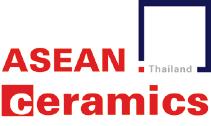

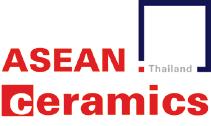





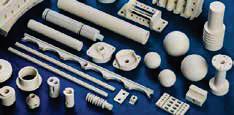

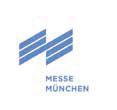
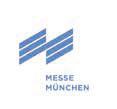


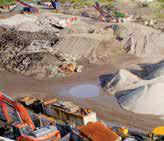














Portuguese manufacturer Sanindusa has installed the first SACMI ADM machine at its main plant in Aveiro for the pressure casting of kitchen sinks. Configured in a ‘rotary’ version, the machine can work with any mould to produce items in porcelain or fine fire clay.
Specifically, the new machine is an ADM 160 expandable model with automatic rotation. SACMI ADM technology offers the unique advantage of being able to produce even the most complex and large-sized articles efficiently. This is ideal for Sanindusa, which is expanding its range of kitchen sinks to include sinks up to 1 m in width and 3-400 mm in depth. The robot serving the cell, with the capability

of handling a load of up to 210 kg, is also specially designed for transferring heavy articles with high precision.
The purchase of this machine is in response to recent market trends showing a return to ceramic kitchen sinks with one or two cavities.
Founded 31 years ago in Aveiro, Sanindusa has built a reputation across Europe for its production quality and attention to design. The investment will be completed by SACMI supplying a second ADM machine later in the year.
ADM is the latest addition to the SACMI range of high-pressure casting solutions already operating at Aveiro, including ALS, ADS, AVM and AVE machines.
With the founding of Steinwerke Feuerfest Karl Albert in Vogelbeck near Gottingen in 1950, the success story of the now globally active Refratechnik Group, now headquartered in Munich, began.
The company employs more than 2,100 people worldwide in the refractory and raw materials industries and celebrates its 75th anniversary in 2025.
To mark this special occasion, Refratechnik Cement organised an open day on 21st June 2025 at its Gottingen plant, where it all began.
Highly developed refractory products, service and process know-how, which are applied worldwide in all industrial high-temperature processes (e.g. in the cement, lime, ceramics, steel, aluminium, NF metals, and glass industries), are central elements of the service portfolio of the Group headquartered in Munich (Germany).
Moreover, Refratechnik is a leading manufacturer of high-grade magnesia products. With a strong focus on sustainability,
globally unique deposits of cryptocrystalline magnesite in Australia and macrocrystalline magnesite in Canada are mined, processed, and supplied to customers worldwide.
As the biggest family-owned company in the refractory business worldwide, Refratechnik pursues a value-oriented corporate culture, in which team spirit, expertise and competence, consistency and close customer contact are particularly important.
Refratechnik said that, as it proudly celebrates its 75th anniversary, it would like to express its sincere thanks to all its business partners and employees.

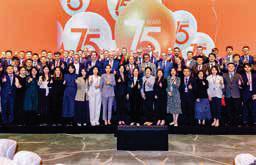
In a world racing towards electrification, from cars to villages, one thing remains crucial: affordable, fast, and safe batteries. While lithium-ion batteries have powered this revolution so far, they are costly. In addition, lithium resources are limited and geopolitically constrained.
In Bengaluru, southern India, however, scientists may have just discovered a powerful alternative.
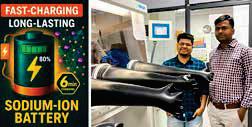
A research team at the Jawaharlal Nehru Centre for Advanced Scientific Research (JNCASR), an autonomous institute of the Department of Science and Technology (DST) has developed a super-fast charging sodium-ion battery (SIB) based on a NASICON-type cathode and anode material, that can charge up to 80% in just six minutes and last over 3000 charge cycles.
Unlike conventional SIBs that suffer from sluggish charging and short lifespan, this new battery uses a clever mix of chemistry and nanotechnology. The scientists led by Premkumar Senguttuvan and Biplab Patra, engineered a novel material for the anode – –and optimised it in three critical ways: shrinking the particles to nanoscale, wrapping them in a thin carbon coat, and improving the anode material by adding a small amount of

aluminium.These tweaks made sodium ions move faster and more safely, enabling both speed and durability. Sodium is cheap and abundantly available in India, unlike lithium, which is scarce and largely imported. A battery built on sodium instead of lithium could help the country become self-reliant in energy storage technology, a key goal of the Indian government’sAtmanirbhar Bharat(self-reliant India) mission.
Beyond just cost, these sodium-ion batteries could power everything from electric vehicles and solar grids to drones and rural homes, making clean energy accessible where it's needed the most.
The technology has been tested and validated through high-end methods, including electrochemical cycling and quantum simulations. What makes it especially exciting is that it not only supports rapid charging but also avoids the fire and degradation risks of traditional batteries.
While more development is needed before these batteries hit the market, the discovery marks a significant step forward.
“Peers in the scientific community have begun to take notice, and with continued support, we may soon see India leading the global race in green battery technology,” DST said.
Andromeda Metals Limited announced it has progressed its plan to commercialise the production of the critical mineral high purity alumina (HPA).
The successful test work follows over seven years of investigation, research and metallurgical test work by the company, which ultimately led to the development of the novel process flowsheet.
HPA samples produced from the test work were submitted for independent analysis to EAG Eurofins USA, a globally recognised leader in materials testing located in the US; and the analysis conducted by EAG Eurofins USA confirmed the HPA sample as 99.9985% pure, which was independently confirmed by analysis conducted by Australia’s National Science Agency, the Commonwealth Scientific and Industrial Research Organisation (CSIRO).
The drive to produce HPA from kaolin stems from the growing demand in established expanding markets for the manufacture of synthetic sapphire used in light-emitting diodes (LEDs), semiconductors, wearable tech, lithium-ion batteries and hightech ceramics. Demand for HPA is predicted to outstrip global supply by 45% by 2028.
Reportedly 88% of global HPA production is currently being made by hydrolysis through synthesizing aluminium alkoxide from high-cost aluminium metal which currently trades at between US$2,000- 2,500/T and is predicted to continue rising. Andromeda’s novel process using kaolin from the GWP provides a significant cost advantage.
Andromeda’s novel flowsheet uses established metallurgical unit operations to refine the aluminium oxide (Al2O3) from kaolin. The successful trials at lab scale of the flowsheet sets Andromeda apart from other HPA producers, as the process is more cost and carbon effective than other reported processes.
Importantly, the novel flowsheet does not require hydrochloric acid (HCl) crystallisation of ACH (aluminium chloride hexahydrate), nor re-leaching using acid at high temperatures and under high pressure to achieve high purity levels. It also does not need the product to be calcined typically above 1250oC to remove chlorides.
Sarah Clarke, Andromeda’s acting CEO said: “Whilst Andromeda’s primary focus remains the development of the Great White Project, the production of HPA is a high-value and complementary opportunity.
“This latest test work validates our novel flowsheet, showing our Great White CRMTM product from the Great White Project can be used to produce HPA at an impressive 99.9985% purity.
“These outstanding results demonstrate the potential to expand Andromeda’s product portfolio in the future to include a value-added critical mineral. These results also underpin our confidence in progressing HPA through to the next stage of development.
“The premise of producing HPA, a high-value, in-demand product, at lower cost and reduced carbon intensity compared to established processes should be highly attractive to any manufacturers using HPA in their products.”

POSCO Future M has completed the development of LMR (lithium manganese rich) cathode materials, which will serve as a game-changer in the entry-level and standard electric vehicle markets, and is now moving forward with securing mass production technology.
Global automakers have recently been drawing market attention by successively announcing plans to launch electric vehicles equipped with LMR batteries. On the 13th, GM officially announced that it would launch electric vehicles using LMR batteries starting in 2028. Ford also revealed plans for LMR battery commercialisation before 2030 and disclosed that it is currently conducting pilot production of second-generation LMR batteries.
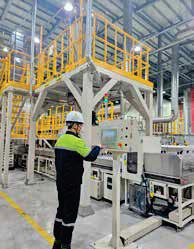
LMR batteries are rapidly emerging as next-generation batteries as they can compete on price with LFP batteries that Chinese battery companies are primarily producing while offering superior performance.
LMR batteries can enhance price competitiveness by significantly reducing the expensive use of cobalt and nickel, while increasing the use of inexpensive manganese. Considering that LFP batteries are difficult to recycle, LMR batteries with high lithium recovery rates can have economic advantages as well. Additionally, they can achieve 33% higher energy density compared to LFP batteries, securing greater capacity, and are expected to rapidly replace LFP market.
Recognising these advantages, POSCO Future M selected LMR cathode materials as a new flagship product that is expected to be a game-changer in the entry-level and standard electric vehicle markets. The company has been jointly developing commercialisation technology with global automakers and battery companies since 2023.
POSCO Future M's Technology Research Institute consolidated research capabilities with POSCO Holdings' POSCO N.EX.T Hub, which oversees POSCO Group R&D,
Global energy storage company Jinko ESS has successfully delivered 476MWh of its SunTera G2 5MWh liquid-cooling systems as the first batch under a 1GWh PV+storage framework agreement signed with a major customer in northern Jiangsu.
Designed to support distributed solar power plants, the project leverages an integrated ‘solar + storage’ approach to improve renewable energy consumption and enhance regional energy structure and reliability.
To address the comprehensive needs of distributed PV projects in northern Jiangsu for safety, cost-efficiency, and environmental adaptability, the SunTera G2 system features an industry-leading liquid thermal management system that keeps cell temperature differences within 2.5°C.
It also includes five-layer protection across the battery, module, rack, container, and system levels, providing strong
and achieved successful pilot production last year through continuous improvements in energy density, charge-discharge performance, and stability. The company plans to secure mass production technology within this year and actively pursue large-scale contract orders.
Recently, the company took a significant step towards mass production readiness by obtaining approval after conducting due diligence in the areas of equipment operation, safety, and the environment, as required for LMR production at the request of customers.
POSCO Future M plans to establish mass production capabilities by utilising existing NCM cathode material production lines without large-scale new investments, enabling timely product supply according to customer requests.
Young-jun Hong, director of POSCO Future M's Technology Research Institute, stated, "LMR cathode materials have long been recognised for their potential but faced commercialisation difficulties in terms of cyclability, and we have made significant progress through research and development.
"Based on solid trust relationships, we are on the verge of launching products that combine affordable prices with high energy density through collaboration with customers."
Following this LMR cathode material development, POSCO Future M plans to expand its LMR product portfolio from entry-level and standard to premium and large EV markets by developing next-generation LMR cathode materials with further enhanced energy capacity in collaboration with POSCO Holdings' POSCO N.EX.T Hub.
POSCO FUTURE M has the longest history within POSCO Group. It started as an alkaline refractory producer in 1963, initially known as Samhwa Hwasung. By merging with Pohang Furnace, an industrial furnace maintenance and construction company, the company transformed into a furnace materials supplier offering integrated services, from refractories to furnace installation.
resilience against high humidity and temperature fluctuation. With a 94% RTE and lifecycle exceeding 8,000, the system is ideally suited for distributed PV stations in Jiangsu that require stable and long-term energy storage operation, supporting the development of a clean, efficient, and secure regional energy supply system.
“This marks a major step forward for Jinko ESS in scaling up user-side solar-plus-storage applications,” said Damon Duan, General Manager of Jinko ESS China. “As distributed energy becomes a pillar of future power systems, our 5MWh SunTera solution—designed with safety, intelligence, and performance in mind—is emerging as a top choice. We will continue to push the boundaries of innovation to deliver smarter, more adaptable storage products for industrial, commercial, and distributed customers alike.”
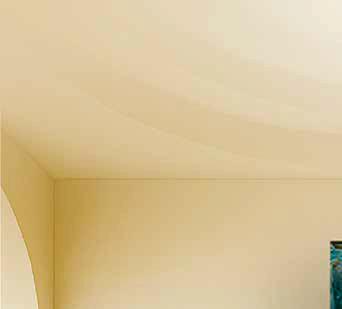













Atlantic Lithium Limited (Atlantic Lithium), the Africa-focused lithium exploration and development company targeting the delivery of Ghana's first lithium mine, announced an update regarding the status of the Mining Lease in respect of its flagship Ewoyaa Lithium Project (Ewoyaa) in Ghana.
The company said it welcomed the comments made during the parliamentary session on 16th July, in which the Minister of Lands and Natural Resources, Emmanuel Armah-Kofi Buah, confirmed that Cabinet had authorised that revised terms of the Mining Lease be negotiated and presented for review by Cabinet, and by Parliament thereafter, per the necessary process for parliamentary ratification.
In his remarks, the Minister highlighted the importance of the job creation potential that the Project presents, noting the immense support from residents of the Project's catchment area in the Central Region for the continued advancement of the Project, in addition to the economic benefits that Ewoyaa is expected to generate.
The Project is expected to play an important role in the socioeconomic development of the region through its spodumene concentrate production activities and offers considerable employment for Ghanaians, which, the Company believes, aligns with objectives set by President John Mahama during his successful December 2024 election campaign.
The Mining Lease was granted by Ghana's Ministry of Lands and Natural Resources in respect of the Project in October 2023 during a period of elevated lithium prices. Since then, lithium prices have fallen significantly. As previously disclosed,
the Company has engaged relevant stakeholders in Ghana, including government representatives, to seek fiscal terms of the Mining Lease that reflect the current lithium pricing environment and that ensure that the Project delivers long-term benefits for Ghana and Ghanaians.
With all of the necessary regulatory approvals secured, parliamentary ratification of the Mining Lease represents the final stage of the Project's perming phase and will enable the Company to advance the financing of the Project.
The Company remains confident that ratification of the Mining Lease will be forthcoming in accordance with due parliamentary process and is supporting the process where possible.
Keith Muller, CEO, Atlantic Lithium, said: "We remain actively engaged in discussions with relevant stakeholders in Ghana to consider a revision of the fiscal terms of the Ewoyaa Mining Lease that were initially agreed in October 2023 and welcome the recent comments made by the Minister of Lands and Natural Resources regarding the Project's latest progress.
"Having seen a significant shift in the lithium price environment since the Mining Lease was granted, we are seeking terms that reflect prevailing market conditions and that ensure the Project can deliver value for shareholders and the generational benefits that Ewoyaa promises for Ghana and Ghanaians, including significant job creation and socioeconomic development of the Project's catchment area in the Central Region.
"We look forward to providing further developments in due course."
Tivan recently announced the successful completion of flotation optimisation testing for the Speewah Fluorite Project (Project) in Western Australia. The company said the project yielded ‘excellent results’, including grades of up to 98.8% calcium fluorite (CaF2) and improved fluorite recoveries compared to historical testwork, increasing from 90% to 95% at a minimum of 97% CaF2 acidspar product specification.
According to Tivan, the results show that 97% CaF2 acidspar can be produced and support the engineering design of the process plant as well as further testing as part of the Feasibility Study currently in progress.
Tivan is progressing development planning for the Speewah Fluorite Project for a mining and processing operation of fluorite ore to produce acidgrade fluorspar.
In December 2024, the company announced that it had signed a non-binding memorandum of understanding with Sumitomo Corporation, recording the key commercial and corporate terms for a planned incorporated joint venture for the Project to facilitate proposed negotiation of binding joint venture agreements.
Flotation is a physical beneficiation process used extensively in industry to upgrade ore to saleable products, and is a standard technology utilised for recovery of acidgrade fluorspar products around the world. The Speewah Fluorite Project utilises a flotation flowsheet with rougher flotation, regrinding and cleaner flotation. The final acidspar product is the flotation concentrate
recovered from cleaner flotation.
Flotation testwork is required to support engineering design of the process plant. Tivan previously completed initial flotation testwork in 2024 to validate historic results. Following the positive outcomes from this initial Tivan testwork, the company commissioned a further testwork programme to optimise flotation conditions.
The flotation optimisation testwork programme included rougher and cleaner flotation stage testwork; grind size, reagent selection and reagent dose optimisation; flotation condition optimisation; and product specification and product recovery optimisation.
The remaining testwork composite material from 2004 (18.9% CaF2) was used for this testwork.
Tivan executive chairman Grant Wilson said: “We are very pleased to have achieved this important technical milestone.
“The testwork results represent major derisking of the Speewah Fluorite Project and open multiple pathways for design optimisation and revenue enhancement going forward.
“In fast-tracking the Pre-Feasibility Study last year, we made strong assumptions as to historical testwork and expected fluorite recovery. Our team have worked systematically since, utilising modern flotation reagents.
“Given the low levels of intrinsic impurities at Speewah, most notably arsenic, Tivan is now in a great position to optimise the Project further into Feasibility Study.”
The result is better quality and overall process efficiency; another concrete step towardsan‘intelligentfactory’forsanitarywareproduction.
In ceramic sanitaryware manufacture, finishing automation is a strategic innovation since it improves both product quality and overall process efficiency SACMI has developed a specific proposal for the automated finishing of sanitaryware, within the wider context of progressive automation at all stages of production. The solution is versatile and can be personalised according to the level of automation required by the customer.
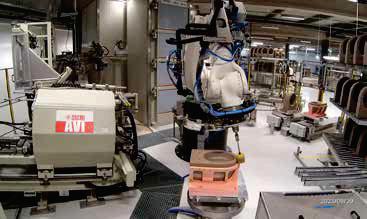
Robotisedfinishingatgreen/leather-hardstage
The process of finishing a sanitaryware item consists of a series of technological work processes inherent to forming and handling. The main processes include removal of casting waste and burrs, sponging technical/functional holes, removing excess glue. Some of these processes can be carried out when the piece is at the green stage. However, others should be performed at the white stage i.e. once the piece has dried out.
With green finishing, the operation is concentrated on the areas of the piece where it is necessary to take action in the very first few minutes after demoulding in order to guarantee the quality of the piece during the next stages of the process. This finishing process can be carried out manually or by means of anthropomorphic robots or other equipment.
For robotised green finishing, SACMI has developed a highly versatile solution that can be personalised and adapted to any casting cell (AVM, AVI, ADI, AVB, ALV, ALS, etc). In fact, the difference lies not in the type of production process, but in the level of automation required by the customer.
The main work processes carried out with robotised green finishing include: elimination of demoulding water and slip residues from the siphon sump; removal of excess glue used for sticking the rim on the WC bowl; and removal of any rough patches present inside the WC bowl, especially in the §siphon sump.
It is then possible to remove any imperfections in the water inlet and outlet holes, in the holes for fixtures to the wall and in other parts of the rear surface of the WB bowl. Finally, there is removal of the casting burrs, which can take place either at this stage or, according to the production process in use, at the white stage after drying.
To carry out these operations, the SACMI solution is equipped with specific tools. Typically handled by the robot using pickup equipment, the most common tools are those that can be customised according to the size and shape of the pieces, such as spatulas to remove excess glue, rotating tools where sponges are installed to smooth surfaces or punches are added to make holes and belt tools; a versatile solution that makes it possible to eliminate burrs and join the connection surfaces between the rim and bowl.
To complete the picture, there are also fixed stations on board the robot where operations such as water suction from the syphon sump, sponging or hole punching are performed.
Advantages
Robotised finishing significantly improves cell operations and product quality. On the one hand the finishing process is made more stable and repeatable, which has an advantageous effect on the time/constancy of the pre-drying phase. On the other hand, in terms of overall process efficiency, robotised finishing decreases the overall time required for the operator to work, reducing manual work processes and thus limiting possible errors/defects due to human intervention. Finally, the efficiency of the robot itself is maximised as it can carry out a single ‘task’ to present the article to the operator and make checks after finishing.
This is why, either separately or in synergy with the new SACMI automation systems for robotised white finishing, automation of green finishing represents a further step towards the ‘intelligent factory’ in the sanitaryware production industry, with immediate and tangible advantages for both the quality of the work processes and the overall process efficiency.


With rapid advancements in ceramic manufacturing technology, the ceramic tile industry has undergone a sea change over the past 20 years. Today, state-of-the-art technology has made it possible to produce di erent shapes and sizes of ceramic tiles with comparative ease. The production of large tiles has gained immense popularity in recent years. These tiles have cornered an important market, particularly in luxurious commercial and residential environments. Yogender Singh Malik presents an overview of large format tiles in India and GCC countries in this feature.
Ceramic tile industry and production processes have evolved rapidly in recent years. This is due to a surge in innovative technology and equipment that has enhanced the capability, efficiency and quality of the production process and offerings. Ability to produce large format tiles in sizes unimaginable a couple of decades back is one such trend, which has become very popular in recent years.
A couple of decades back, the tile selection process at a typical store involved choosing from floor tiles typically in the range of 200 mm x 200 mm and wall tiles were 100 mm x 100 mm. There were a dozen colour options for the floor and several colour options for the wall tile. The old saying by Henry Ford with a bit of tweaking, “you can have any colour you want as long as it’s white”, sounds apt for the industry.
However, with path-breaking advances in tile production technology and materials, tile producers have been able to churn out large format tiles with comparative ease in recent years.
Large sized tiles have revolutionised the design and architecture world by opening new perspectives in tile application that were previously unimaginable. They have become thepreferred choice of architects, designers, builders and customers, who favour the use of these products in the design of both residential and commercial constructions.
Large-sized tiles can be used on floors, walls, cladding, furnishing, countertops and provide creative flexibility and high technical and aesthetic performance. Ideal for dressing up spaces, covering doors, tables, kitchen doors or living room furniture, these tiles can easily make marble, metal, stone and concrete part of interior design, without compromise.
Accounting for nearly six to eight per cent of overall tile production in Asian countries, large format tiles are one of the fastest growing sub-segments of the overall ceramic tile industry.
More producers are joining the large size bandwagon to capitalise on the trend of increased usage of large sized tiles by a vast section of customers.
The popularity of large format ceramic tiles is more evident in rich countries in Asia such as the UAE and Saudi Arabia, as compared to mid- to low-income countries/markets such as Indonesia or Vietnam. Since the proportion of premium and ultra-premium construction for commercial and residential purposes is higher in the former as it forms a greater proportion of total constructions, the usage of large format tiles is higher in these countries.
There are a number of advantages to large-sized tiles compared with conventional or smaller tiles. Larger tiles make the room in which it is installed appear larger and are easier to clean as there are fewer grout lines.
Large sized tiles enable greater surface coverage with a single tile, therefore less material waste is created during installation, which is economically beneficial. Tiles of this size are often stronger and more durable than smaller pieces, making them an ideal choice for covering public areas where foot traffic is high. Although large-sized tiles require greater precision during installation due to their size, these tiles can be easier to fit and level than many smaller tiles.
Huge price differentials between large sized and regular sized tiles during the initial years were a major handicap behind the low popularity and penetration of the former in a number of geographies in Asia.
Vishesh Varmorea of Sunheart Tiles Company says: “Indian tile industry has seen a huge interest in large size ceramic tiles in the past 15 years.

“During the initial years, production of large size tiles was confined to a handful of large-scale producers, but since the second half of 2010’s a number of mid-sized tile producers too have ventured into the production of large format tiles.
“The availability of significant production capacity has led to a noticeable decline in the prices of large-sized tiles. Though the prices of large sized tiles are still significantly higher as compared to smaller/conventional sized tiles, they have come down by several notches.”
Sunheart Tile’s manufacturing facility is located at Wankaner near Morbi in Gujarat and has a total installed capacity of 10,000 boxes per day of vitrified tiles, 7,000 boxes per day of floor tiles, 27,000 boxes per day of wall tiles and 9,000 boxes per day of large slab tiles aggregating 22.8 million square metres (MSM) per annum.
The company’s subsidiary (Sunshine Cera Tiles Private Limited) has a production plant for large sized vitrified tiles at Morbi with an installed capacity of 83,232 metric tonnes per annum (MTPA).
Jagdish Dalsania, production head at Qutone Ceramics says: “Due to the high value addition in the production of large format tiles, these tiles are priced comparatively higher than smaller tiles of similar surface areas.
“The cost of production of bigger tiles has come down in the range of 15-20% during the past five years. A further reduction of about 10% in the cost of production of such tiles could make these tiles very attractive for the mass market.”
India is the second largest global producer and consumer of ceramic tiles. Explosive growth in ceramic tile installed capacity and production has led to fierce competition in domestic and key export markets. In order to differentiate their offerings, Indian ceramic tile manufacturers have begun experimenting with the size and finish of
their ceramic tiles.
Large sized ceramic tiles, which began to gain popularity at the start of the second quarter of last decade, gradually increased their market share in the following years. Currently estimated at seven to eight per cent (on a volume basis) of the total Indian market, one can spot large size tiles used in several new constructions and installations. Hitherto confined to metro cities, these tiles are becoming quite popular in tier-II and III cities.
In the early years of their introduction, these tiles were in use in large commercial spaces such as hotels and big corporate offices. However, their popularity and versatility will make these tiles a popular option in residential spaces in the next few years.
During its initial years, only established ceramic tile producers from organised segments such as Kajaria Ceramics, H&R Johnson, Somany Ceramics, RAK Ceramics and Asian Granito Limited ventured into large sized ceramic tile production due to technological challenges and high upfront investment in manufacturing technology to produce these tiles, but as the production technology to produce these tiles became affordable, mid-scale ceramic tile producers too joined the bandwagon and ventured into large size ceramic tile production.
Currently, a number of Indian producers operate multiple lines to produce large format tiles to meet the ever-increasing demand for these products.
During the presentation of Kajaria Ceramics' annual results in May 2025, Chetan Kajaria, the managing director of the company, responded to a question about whether Kajaria Ceramics would invest in a third production line for large format tiles in Morbi by saying: “We currently operate two production lines for large format tiles. We are the only company with a plant in North and South India for containers plus bigger slabs. So, we already have capacity.
“Right now, demand is muted. As such, we do not want to invest that kind of money and wait for the industry to improve. As the market improves, we have enough capacity available in Morbi to outsource to. In the future, if we need to do so, we will invest in a third plant for large-size tiles.”
In 2022, leading ceramic tile producer, Asian Granito Limited (AGL) set up a greenfield plant to produce large format GVT tiles in 1200x1200 mm, 1200x1800 mm, 1200x2400 mm, 800x1600 mm and 800x2400 mm formats. With an installed capacity of six million square meters per annum, AGL invested INR 1.74 billion in this plant.
Kishor Vasani, head of international business at Morbi-based Itaca Ceramic Tiles Limited says, “Large format ceramic tiles offer several advantages and benefits that make them a popular choice in the construction and interior design industry.
“Some of the main advantages are: continuity and uniformity: being large in size, large format ceramic slabs reduce the number of joints and provide a more uniform and continuous appearance on the surfaces, which creates an elegant and modern visual effect, lesser number of joints and easier cleaning: The reduction of joints also means fewer areas where dirt and dust accumulate, making it easier to clean and maintain, and spacious feel: since large format ceramic tiles can make spaces feel larger and more open, especially when used on walls, as there are fewer sight lines dividing the space.”
Large-sized tiles offer designers and interior decorators many possibilities in construction. Ajesh Detroja, production manager at Morbi-based Omega Tiles says: “We can produce large sized tiles in sizes up to 1200x2400 mm in a variety of textures and body types, including glazed porcelain and polished glazed porcelain, in thicknesses ranging from 9mm to 15 mm.
“The flexibility of digital printing has enabled us to explore endless design possibilities and cater to evolving market trends and customer demands seamlessly. Large-sized tiles are ideal for covering large surfaces and highlighting eye-catching decorative details. These sizes offer the opportunity to play around with perspectives and visual continuity, amplifying and bringing balance to living spaces.”
An interaction with ceramic tile wholesalers and retailers in the national capital of India, New Delhi, revealed some interesting facts about large format tiles sales there.
Vijay Aggarwal, the owner and store manager at Acme Tiles, a tile wholesaler in the Mangol Pur ceramic tile market in New Delhi, tells Asian Ceramics: “We have seen two phases of the popularity of large sized tiles. The initial wave (back in 2014-2015) of popularity of large sized tiles was more because of curiosity and hype. Most of the buyers during the first wave were large institutional/corporate builders. Retail consumers were interested in viewing the product but rarely purchased it.”
“A few years later (immediately after the pandemic) the variety and designs of large sized tiles witnessed a sea change. Suddenly, the market was flooded with these options. The price of these tiles has also come down significantly. Nowadays, we see a number of serious enquiries and final purchases from retail customers. Institutional consumers are still the largest buying segment, but retail consumers have also chipped in,” Vijay said during the interaction.
Gulf Corporation Council (GCC) is one of the most promising hotspots of ceramic tile production and consumption in Asia.
THE POPULARITY OF LARGE FORMAT CERAMIC TILES IS MORE EVIDENT IN RICH COUNTRIES IN ASIA SUCH AS THE UAE AND SAUDI ARABIA, AS COMPARED TO MID- TO LOW-INCOME COUNTRIES/MARKETS SUCH AS INDONESIA OR VIETNAM.

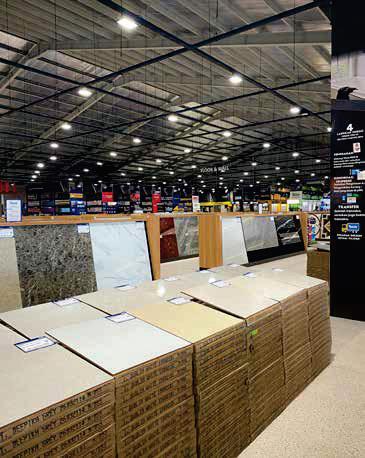
Often considered one of the most prominent ceramic tile markets on the Asian continent, the GCC countries are significant consumers of large-size tiles.
Estimated to be between nine and 11% of the total usage, large-sized ceramic tiles are very popular in most of the countries in the GCC region. Two of the largest producers and consumers of ceramic tiles in the region – Saudi Arabia and UAE – are significant producers and consumers of these plus-sized tiles. Saudi Arabia is a net importer of ceramic tiles from other countries in the region, Europe and other Asian countries.
More than 60% of the volume and about 70% + of the total sales value of ceramic tiles in the GCC region comes from the commercial sub-segment of construction. Large and luxurious hotels as well as commercial establishments, hospitals and educational institutions are the primary customers for premium and luxury ceramic tile products. These projects are also the largest consumers of large-sized tiles.
Governments in the GCC countries are currently undertaking a number of measures to cope with oil price fluctuations and continuously review their spending priorities.
Cumulatively, GCC countries are expected to spend $800 billion on construction in 2025 and 2026.
Most of the GCC countries are aggressively pursuing economic diversification programmes and capitalising on other revenuegenerating sectors such as hospitality to promote tourism, trade, and healthcare.
Ambitious programmes such as Saudi Arabia’s Vision 2030 and Oman’s ‘Vision 2040’ emphasise the construction sector as a key driver of economic diversification in their respective countries.
Ceramics’ management states during an investor’s conference in May 2025: “In UAE, our tiles division is undergoing an upgrade with cutting edge technology to manufacture differentiated, largeformat tiles catering to high-end markets.”
RAK Ceramics offers large sized tiles up to sizes of 135 X 305 inches. The company has an installed capacity of nearly 82 million square meters per annum at its UAE plants. In 2024, RAK Ceramics achieved total sales of AED 686.8 million from UAE’s tile operations, an increase of more than 10.0% over the previous year.
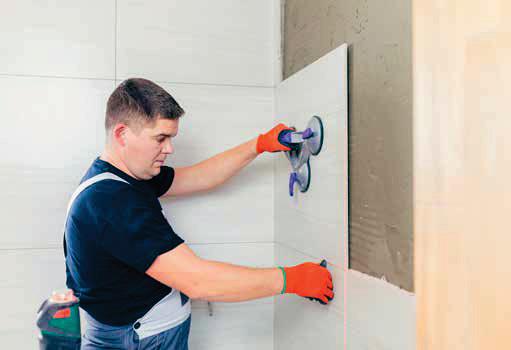
Almost all the producers based in Saudi Arabia, namely Saudi Ceramics, Future Ceramics, Riyadh Ceramics, Saudi Wangkang Ceramics, Arabian Ceramics Manufacturing Company and Al Fanar Ceramics, are equipped to produce large sized tiles to meet the ever-increasing demand from the vibrant construction industry in the kingdom.
Saudi Arabia’s largest ceramic tile producer, Saudi Ceramics has been producing large-size tiles for more than five years. In 2024, the company installed a new line for the production of large sized tiles. With an overall installed capacity of 60 million square meters per annum, Saudi Ceramics is one of the oldest ceramic tile producers in the region with a production history since 1977.
Another major ceramic tile producer, Riyadh Ceramics, has recently installed a new line to produce large-sized tiles in addition to its existing line. Founded in 2012, Riyadh Ceramics is one of the leading Saudi Arabian ceramic tile manufacturers, specialising in the production of high-quality ceramic and porcelain tiles for residential, commercial and architectural uses. Located in the second industrial city in Dammam, Riyadh Ceramics has consistently expanded its capacity and capabilities. Similarly, Future Ceramics has recently converted one of its production lines from red body tiles to medium and large-sized technical porcelain tiles.
Largest ceramic tile producer in the region, UAE-based RAK
Engaged in the production of large tiles since 2001, RAK Ceramics is the oldest producer of plus-sized ceramic tiles in the region.
Oman-based Al Anwar and Al Maha Ceramics tile producers have offered large size tiles for more than five years. In 2024, Al Maha Ceramics company started the production of large format tiles from a new line at Al Hael Ceramics and introduced these tiles to the domestic market. The company also started exporting these tiles to the UAE Initially, Al Maha sourced raw materials from India to produce these tiles. However, a quantum increase in raw material prices has disrupted this arrangement. As a result, Al Maha had to stop the production of large format tiles and is currently looking for alternative source for the required raw materials.
Large-sized tiles have become a very popular option and an important sub-segment of the ceramic tile industry in the last 15 years. State-of-the-art technology, advances in material science, and designing capabilities have made it possible for ceramic tile producers to offer huge sizes in eye catching designs for consumers in commercial and residential sub-segments. Favored for both floors and walls, these tiles offer a seamless and luxurious look with fewer grout lines.
Rapidly evolving technology for the production of these tiles, increased focus on high quality raw materials and discerning consumers are expected to make the usage of large size ceramic tiles a major trend in the Asian construction industry due to their aesthetic appeal and practical benefits.
These tiles, which currently account for a single digit share in the overall ceramic tile market, are expected to increase their market share to the low teens during the next five years. Large sized tiles are set to remain a prominent trend in the future, driven by their aesthetic appeal, practical advantages, and ongoing advances in technology.

At the next edition of Cersaie, Colorobbia will present several new products and solutions, focusing on: more sustainable processes, digital solutions for creating reliefs and textures, functional finishes and a complete series of new proposals for large formats and countertops. Colorobbia will present a number of key innovations at Cersaie 2025. Some of the main ones are as follows:
SUSTAINABILITY: The Extra-Glazes series, high-discharge water-based digital glazes, already industrialised by several Italian manufacturers and the Air Evolution and Ait Evolution_Aqua series, a set of solvent-based and water-based digital inks that reduce environmental impact, by minimising harmful emissions and odours. These series include high-performance digital effects and glues. The Air Evolution series has been certified by leading
digital printer and printhead manufacturers.
MULTI-RELIEF: The FORMA PLUS proposal includes ExtraGlazes, a range of water-based digital glazes, the Graffiti series with water-repellent inks and the Neogrits collection (grits and special grits). These families include some new products such as the new Graffiti White ink and a collection of matt grits specifically developed to create reliefs directly on the substrate and before the decoration. These options allow to develop any type of relief and texture, regardless of the required format.
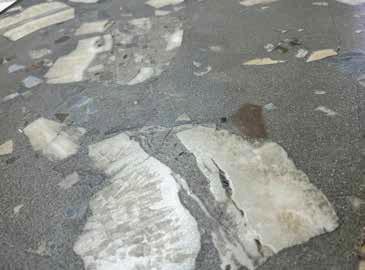
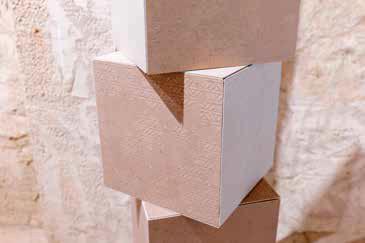
TECHNICAL SURFACES: Microtech C-ready formulations allow to customise the required finishes and performance. This range of products has been developed for a wide range of firing temperature and is suitable for all wet application technologies (airless/vela).
This new ready-to- use series, alone and/or in combination with specific glazes and additives, allows to develop finishes with different levels of anti-slip and wear resistance, offering different levels of glossy and improving durability, cleaning and comfort. Furthermore, its easy dispersion facilitates preparation and in-line application.
DIGITAL TOP COAT: New digital coats, both solvent-based and water-based, with different finishes (trasparent matt/semi-matt/ glossy). This new digital inks series allows to adjust the different levels of mattness while maintaining the surface properties.
With all these solutions, Colorobbia reaffirms its commitment to offering innovative solutions that give added value and a high level of differentiation for its customers.

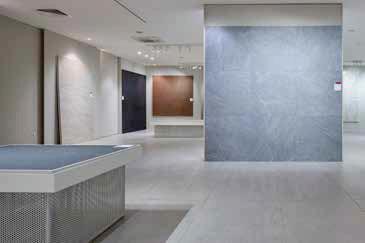
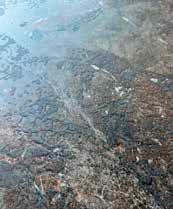
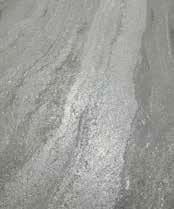


Termed as ‘a necessary evil’ by many in the ceramic industry, kiln furniture is a crucial component of the production of final products in the sanitaryware and tableware industry. Focus on twin objectives of product quality improvement and production cost optimisation, has made kiln furniture one of the most important accessories in the ceramic sanitaryware and tableware industry, to achieve these objectives. Yogender Singh Malik presents an overview of kiln furniture and advancements in the industry in recent years.
Ever-increasing energy prices and a rapidly changing global energy supply landscape during the last one and a half decades have presented multiple challenges for ceramic producers, an industry which has been termed as an energy guzzler. Energy usage in the kiln during the firing process is one of the highest ones in ceramic production. Efforts
have been made during the past 15 years to minimise energy consumption during this stage without compromising the quality of the finished products.
Kiln furniture, an important component of a kiln has faced severe scrutiny and attention to decrease the energy usage in kilns during firing. Continual variations in the design and materials used for kiln furniture have yielded a combination of results.
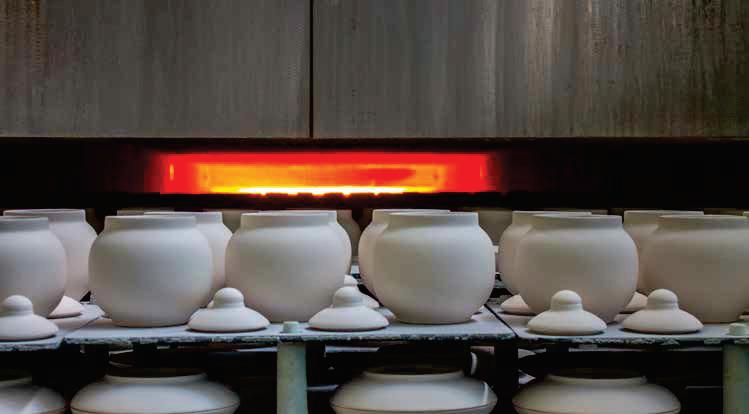


To say that kiln furniture is one of the most intricate and complex items in the kiln would be an understatement. Hundreds of shapes and sizes of finished products make kiln furniture one of the most complicated items in ceramic manufacturing. Designing and choosing the most appropriate kiln furniture enables ceramic producers to reduce firing costs, have higher kiln loads, and greater yields, which ultimately reduce the overall cost of production.
China is the largest consumer of kiln furniture in Asia on account of the massive production of tableware and sanitaryware. China is also the largest kiln furniture-producing country on the continent. A number of small and mid-scale kiln furniture producers have emerged in the country in the past two decades. More than 10 ceramic kiln furniture producers from the country have emerged among the top 20 global kiln furniture producers in the ceramic industry.
India is the second largest producer and consumer of kiln furniture. Fuelled by rapid expansion in the sanitaryware and tableware sub-segments of the industry, kiln furniture demand has registered a steady growth rate.
According to Shibanipradip Dam, CEO of Anand, Gujarat-based AB Ceramics “Kiln furniture plays one of the most important roles in ceramic sanitaryware and tableware production. A number of small producers have sprung up in most Asian countries over the years. Chinese producers dominate with a large share of the Asian kiln furniture market. However, domestic producers have also been able to meet the needs of the market in recent years.
“For example, our company has built positive relationships with our customers by not only supplying the product but offering total solutions to meet their commercial and technicalneeds. In this day and age, it is important to continually improve service, quality and value for money.
“We have over the past few years looked to reduce our costs, increase our ability to do in-house testing, research and development and offer good and reliable lead times. We believe that this puts us in the best position to not only survive any economic downturn, but to use this as an opportunity to increase our presence in this area. Working with both existing and new customers, we look forward to forging long and mutually beneficial relationships.”
To reduce the mass of kiln furniture, a design approach and a material approach are the two strategies followed by ceramic producers. In the design approach, producers or kiln furniture suppliers attempt to optimise the design of the kiln furniture, e.g. thinner walls. However, the design approach is often limited by the high temperature performance of the materials used for the kiln furniture.
In the materials approach, producers improve the materials for kiln furniture, especially their high temperature properties. Cordieritemullite based kiln furniture is increasingly being replaced by silicon carbide-based kiln furniture items.

Usage of lightweight and functional materials for kiln furniture has been one of the major advances in the ceramic industry in the last one and a half decades. New generation kilns have also altered the usage pattern of kiln furniture to a large extent. As a result of these changes the demand for kiln furniture in the ceramic industry has undergone significant changes during these years.
In recent years technical advances have resulted in cordierite-based kiln furniture increasingly being replaced by silicon carbide-based kiln furniture. Kiln furniture made from silicon carbide (SiC) is thinner, lighter, and significantly more robust than traditional kiln furniture, resulting in improved kiln capacity and energy efficiencies in high-temperature applications.
Kiln furniture is usually classified as 'primary' or 'secondary'. Primary kiln furniture is the group of products that form the superstructure of the kiln or the kiln cars. Generally, primary kiln furniture remains positioned in the kiln or on the car throughout its life. Batts, props and kiln lining systems are examples of this type of kiln furniture.
Secondary kiln furniture refers to the products used to directly support end products during the firing/sintering process. Each is designed to be used with a limited range of products and is usually removed from the kiln or furnace at the end of the process. This category of kiln furniture includes items such as plate setters, cranks and sanitaryware supports.
Along with China and India, a number of specialised kiln furniture producers have emerged from large ceramic manufacturing bases such as Vietnam, Indonesia, and Thailand. Quality of products by some Asian producers is at par with reputed global kiln furniture producers.
In the sanitaryware and tableware industry there are thousands of shapes and designs. Secondary kiln furniture is the most complex of all product ranges, with the biggest variation in shape, size and material, making it the most difficult to manufacture. Choosing suitable secondary kiln furniture can help greatly increase yield, increase kiln load, reduce fuel consumption, reduce labour and lead to significant cost savings.
Kiln furniture pieces are damaged by cracking, bending, the accumulation of dirt and glaze or surface degradation due to oxidation or some other form of chemical attack or contamination. The rigorous conditions encountered in ceramic manufacturing demand a material that can resist deformation or mechanical failure during repeated heating and cooling cycles.
Typical kiln furniture components include beams, lug posts, plates, saggers, setters, tables and tile cranks. However, these largely depend on the furnace geometry. Roller hearths, for example, require high-temperature mechanical conveyors to continuously feed the work pieces through a tunnel chamber with several heating zones. These are used throughout thermal processes, which means they are routinely fired at extremely high temperatures, thus being subjected to severe thermochemical stress.
Consequently, the kiln furniture may need to be replaced regularly due to rapid component degradation. This represents a significant ongoing cost. However, the advanced products of today are engineered to mitigate this issue, taking standard components from mere hundreds of cycles to thousands.
Cordierite-Mullite is commonly used to make kiln furniture for the ceramic industry, due to its superior thermal shock properties, low thermal expansion and thermal conductivity. For service temperatures up to 1300°C the most popular type of kiln furniture material contains the mineral cordierite, a magnesium aluminium silicate with a very low thermal expansion coefficient, rendering it highly resistant to thermal shock. Most commercial cordierite kiln furniture bodies are formulated to produce about 50% cordierite, with the remainder comprising mullite and another amorphous material.
The low thermal expansion coefficient of cordierite enables refractory materials to withstand temperature changes during kiln firing without cracking or breaking. Additionally, the high mechanical strength of mullite allows the refractories to support the weight of ceramic products and maintain their shape during firing. The synergistic combination of these two phases makes cordieritemullite refractories ideal for kiln furniture.
Lower costs and low creep rates of cordierite kiln furniture are the most compelling reasons for its popularity. Low 'Creep rate' refers to how quickly a material deforms when subjected to stress at a constant temperature. It is important that kiln furniture has a low creep rate as they are going to be the main thing keeping the ware secure – if they start warping, the kiln build will become increasingly unstable, and the ware produced will have defects and low quality.
According to N Thiagrajan of Tamil Nadu based kiln furniture producer Abref Private Limited, “Cordierite kiln furniture is the most cost-effective material for fast firing cycles, increased throughput in kilns, flexible design of loading wares and energy efficient operations.
"Abref is at the forefront of providing state-of-the-art technology kiln furniture systems to the ceramic industries backed up by a team of experienced technocrats. Abref's products are engineered to high standards both in material quality and dimensional accuracy thereby ensuring high reliability and prolonged life.”
Abref is one of the largest cordierite-based kiln furniture producers in the country. In addition to meeting domestic demand for kiln furniture, the company also exports a significant part of its output to a number of Asian ceramic producers.
Most Cordierite-Mullite kiln furniture is stable at temperatures

up to 1350°C, although practically its load-bearing capability (and therefore its useful life) starts to become diminished beyond 1300°C. At higher temperatures, materials such as Silicon Carbide or Alumina, are more suitable.
Silicon carbide kiln furniture offers enhanced efficiency, sustainability, and cost savings. It is designed for high-temperature applications and boasts superior mechanical strength and faster heating/cooling cycles, leading to increased productivity. Ideal for various kiln types, it ensures reduced energy consumption and minimal maintenance.
Traditionally, kiln furniture has been designed to withstand high temperatures and thermal shocks while supporting and protecting ceramic products during firing. However, conventional methods and materials often come with drawbacks such as high thermal mass, leading to longer heat-up times and increased energy consumption. Over the course of the last two decades, kiln furniture producers have focused on innovations that have led to the development of more efficient products.
One of the most significant advancements is the reduction in kiln furniture weight. By using advanced materials and innovative designs, manufacturers have created supports, shelves, and setters that are significantly lighter than their traditional counterparts. This reduction in weight has several led to faster cycle times and energy efficiency, which leads to lower costs of production and better quality.
French company Imerys offers a unique solution to reduce the volume of kiln furniture used in firing sanitaryware products. In traditional firing, the extreme heat generated during the firing process causes the sanitaryware pieces to shrink, creating friction between the piece and the kiln furniture. This friction often results in defects in the finished piece such as glaze chipping or foot deformation. To minimise these defects, sanitaryware producers use platesinserted between the ceramic piece and the kiln furniture. These plates are disposable by nature. This arrangement brings good results but has a high environmental cost as it creates aroundthree tonnes of disposable plates for every 1,000 pieces of sanitaryware produced.
To address this problem Imerys has developed a unique product, ShrinkSan, a solution that replaces traditional single-use plates with a much more sustainable kiln furniture system that can be reused more than 800 times while managing the piece contraction process during firing.
In-house production versus sourcing from kiln furniture producers
For a long time a number of ceramic producers, both in the sanitaryware and tableware segment have opted for captive production of kiln furniture. Not only the small players but some of the renowned names have opted for captive production for quite a long. The practice was more prominent in Asian ceramic-producing countries. Limited number of kiln furniture producers and long lead time taken by kiln furniture producers was the prime reason behind ceramic producers opting for in-house production of kiln furniture for captive use.
However, in recent years, the trend has shifted to source kiln furniture from specialist producers, as a number of specialised kiln furniture producers have come up in almost all countries on the continent.
Global major in the glass industry, Saint Gobain produces and supplies kiln furniture to the ceramic industry through its subsidiary, Saint-Gobain Performance Ceramics & Refractories.
A division of Saint Gobain Ceramics, Saint-Gobain Performance Ceramics & Refractories has a worldwide footprint with 11 industrial sites offering extended manufacturing support from eight plants of SEPR and a commercial and technical/application engineer presence on all six continents. In Asia the division has a presence in China, India, Japan, South Korea and the United Arab Emirates.
Leading mineral supplier Imerys through its brand 'Imerys Kiln Furniture' provides kiln furniture in cordierite, high alumina porcelain, mullite and silicon carbide. This range of tailor-made solutions covers the specificities required by industrial customers in terms of shape and usage conditions.
In Asia, Imerys Kiln Furniture manufacturing facility is in Thailand. The company acquired the kiln furniture business of Siam Refractory Industry Company Ltd (SRIC) – a subsidiary of Thailand-based Siam Cement Group (SCC) – for approximately 250 million baht in
2002. This production facility is located in Saraburi. At the time of the acquisition SRIC had an annual installed capacity of about 2,800 tonnes of kiln furniture.
Imerys claims that its ShrinkSan kiln furniture is one of the most productive systems capable of managing piece contraction during firing while remaining reusable and therefore sustainable. Designed to replace single-use plates, ShrinkSan allows sanitaryware producers to reduce waste generation significantly, hence cutting their overall production costs.
Beijing Trend Industrial Ceramics is a leading producer of cordieritemullite kiln furniture, kiln building materials, lightweight and low thermal mass kiln cars, and various other refractory materials and industrial ceramics. The products are used in a wide range of industrial applications, including porcelain, heavy clay, glass panels, powder metallurgy, magnetic materials, green energy, food, glass, abrasives, iron and steel, mining and aerospace engineering.
The company was founded in 1998 with a registered capital of 28 million Yuan. Beijing Trend operates two factories with four production lines, three automatic firing tunnel kilns, a special continuous firing kiln, six shuttle kilns, 28 hydraulic presses, and nine vacuum extruders. The company has an installed capacity of 26,000 tonnes per year, making it the largest producer in Asia and the second largest in the world. The company employs a variety of methods to manufacture various shaped cordierite-mullite products, including semi-dry pressing, plastic pressing, high pressure vacuum extrusion and pressure casting, making it one of the diverse producers of kiln furniture for the ceramic industry.
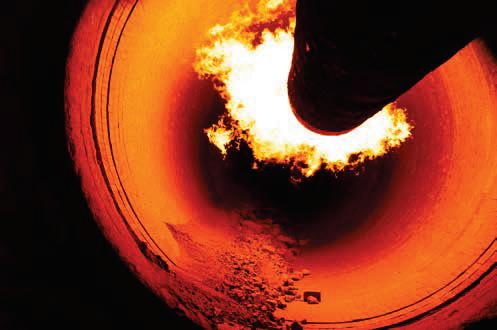
India-based Carborundum Universal or CUMI ( as it is popularly called) was started as a tripartite venture between the Murugappa Group/IN, Carborundum Co./US and Universal Grinding Wheel/GB in 1954. The company pioneered the manufacture of coated abrasives and bonded abrasives in India in addition to the manufacture of kiln furniture, industrial ceramics and ceramic fibres. The company's range of over 20,000 different varieties of abrasives, refractory products and electro-minerals are manufactured in 25 locations across the world. With state-of-theart facilities and strategic alliances with global partners, CUMI has achieved a reputation for quality and innovation. Almost all of CUMI’s manufacturing facilities have received ISO certification for quality standards.


Ceramic manufacturing heavyweights in Asia are showing the way by recycling ceramic tiles, polishing their ‘green’ credentials and reducing environmental impact, writes Rohan Gunasekera.
Agrowing number of ceramic tile manufacturers are embracing the virtues of using recycled materials, such as ceramic scrap, to make their products. Doing so enables them to not only turn factory rejects into a valuable resource but also tout their environmental or ‘green’ credentials at both ends of the supply chain. It is done by minimising the use of virgin clay in products sold to consumers and on mine sites.
Manufacturers are under pressure to minimise the use of virgin clays and other raw materials, as well as reduce energy consumption. Reusing factory rejects in the production line reduces raw materials, imported inputs, and energy consumption. It also diverts waste from landfills. Major Asian ceramic tile manufacturers are investing in machinery to enhance production efficiency and to reuse factory rejects and scrap. This includes crushing plants and recycling equipment, allowing the reuse of the fine powder generated by broken or wasted fired porcelain tiles.
Studies show that the ceramic tile sector is one of the industrial sectors most in need of reducing energy-intensive processes to meet emissions reduction demands from both governments and consumers. The industry is under pressure because of its high temperature and processes. It also faces higher costs related to carbon dioxide (CO2) emissions into the atmosphere, with regulations tightening in the coming years. In ceramic production, the two main thermal energy-using stages account for almost all direct CO2 emissions. About 60% comes from the drying and firing stages, while spray drying contributes about 40% of those emissions.
In ceramic tile production process, ceramic tile waste (CTW) is divided into unfired and fired wastes, depending on whether a sintering process has taken place. The simplest method is to add unfired ceramic powder to the ceramic body preparation stage, according to recycling studies. In some manufacturers in Italy, the recycling rate of unfired waste reaches 100%. According to the British
Ceramic Research Association, some ceramic tile manufacturers in the UK use over 40% recycled CTW.
Across Asia, manufacturers are trying to achieve a circular production process by using waste to make new products. RAK Ceramics says its Re-Use series of tiles features 100% pre-consumer recycled materials. In tableware, the company reintegrates 100% of rejected pieces, with 20% redirected to tile manufacturing. Thailand’s SCG Ceramics says it processes waste such as tile and clay powder, which is re-ground and reused in its production processes. India’s Kajaria Ceramics re-uses the majority of broken tiles, sludge and other process waste back into its manufacturing process. Royal Ceramics Lanka is using waste from its bathware production to manufacture tiles.
The recycling of CTW is important to achieve sustainable construction waste management. Nevertheless, large amounts of CTW are still landfilled, which has negative impacts on the environment. Studies have shown that different construction materials, such as foam ceramics and ceramic tiles, can be produced from CTW. Maximising CTW use will reduce ceramic tiles dependence on traditional raw materials. Establishing proper CTW collection, separation and transportation to recycling centres is critical to stable CTW supply. Moreover, exploring new combinations of CTW and other solid wastes can improve the final recycling product performance and reduce production costs.
The manufacturing of traditional porcelain tiles is often associated with a large amount of ceramic waste during the polishing stage, according to a Chinese study on the recycling of polished tile waste. These wastes need to be properly handled due to the corresponding environmental problems. The study evaluated the possibility of reusing polished tile waste as a main raw material to produce porcelain tiles. The prepared specimens with various amounts of the polished tile waste were fired at 1100–1180 °C. The sintered behaviour of fired specimens was examined by linear shrinkage,


water absorption and bulk density. The test results show that the sample with 50 weight per cent polished tile waste fired at 1120 °C has superior performance, which meets the requirements of porcelain tiles according to the ISO 13006 standard. Polished tile waste can be effectively reused in porcelain tiles as a main and low-cost raw material by fast firing at low temperatures.
An Italian study done by Centro Ceramico, a research and experimentation centre for the ceramic industry, with the support of the Marazzi Group, showed the feasibility of high recycled content in traditional ceramics and the substitution of natural raw materials. Starting from applied research at laboratory scale, which can demonstrate work feasibility, other important milestones consist of pilot-scale production until proper industrial production. The study shows it is possible to reach concrete sustainability benefits covering social, environmental and economic factors.
The industry-driven project aimed to produce porcelain stoneware tiles containing 85% recycled materials. This innovative ceramic product –containing soda-lime scrap glass from urban-separated collection (post-consumer waste) and unfired scrap tiles from industrial ceramic process (pre-consumer waste) – was sintered about 200 °C lower than a traditional porcelain stoneware tile. It maintains high technical performances belonging to class BIa of the International Standard for ceramic tiles classification (EN ISO 14411). The product meets the standard requirements for dry-pressed ceramic tiles with low water absorption. A Life Cycle Assessment showed a significantly lower environmental impact of this innovative product than traditional porcelain stoneware tiles.
accounting for about four per cent of the total production and they are generally reused in the productive cycle very easily.
In the study, a new concept of ceramic tile mix was developed with natural plasticising agents (clays), fluxing agents (feldspars) and tempering agents (sands) substituted for pre- and post-consumer wastes. This High Recycled Content (HRC) body contained 85 weight per cent of recycled materials (soda-lime scrap glass and unfired scrap tiles), and 15 weight per cent of natural clays.
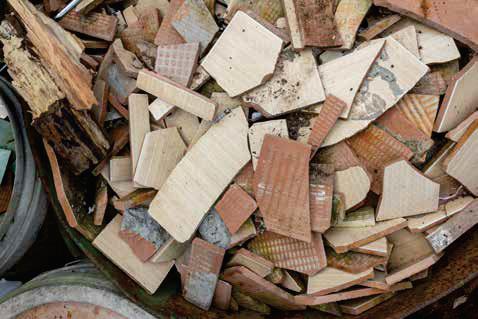
The economic benefits can be related to the lower industrial costs – raw material and milling costs – required to produce the 85% HRC body. The costs to produce the 85% HRC body were compared with those needed to produce an average body of a traditional porcelain stoneware batch. For pre-consumer waste (unfired tile scrap), a cost of one euro per tonne was considered because this scrap consists of raw materials that have already been processed (milled, dried and pressed) and are reintroduced into the ceramic process in a closed-loop cycle. The economic savings were about 33%. Moreover, considering the firing step, the savings increase further due to lower methane consumption.
The wastes produced by the ceramic industrial process are unfired scrap tiles, fired scrap tiles, mud produced by washing lines, lapping and polishing mud and dried grinding residues. Almost all of these wastes (pre-consumer wastes) are reused in the same process with a closed-loop cycle. Unfired scrap tiles are generated after the shaping process, during the handling of unfired tiles on roller conveyor belts,
The study concluded that there were several main benefits to HRC porcelain tiles. The use of at least 85% recycled materials strengthens the waste market, which becomes a valuable resource and helps preserve natural stocks of virgin and important minerals such as clay, limestone and feldspar and also reduces imports of minerals such as zirconia, bauxite and magnesia from overseas. Another benefit was this widening the market for more sustainable ceramic products to replace other materials such as concrete, granite and marble. These innovative tiles also divert waste from landfills. Another benefit was reducing the energy consumption of the milling and firing processes, given that electricity and methane are the highest factors in the production cost of tiles. Also, it enabled improved health in the workplace thanks to the lower amount of free crystalline silica in the ceramic body.
RAK Ceramics says that 206,025 tonnes of waste were reused to formulate 100% of its recycled products in 2024. “Our Re-Use series features tiles made from 100% pre-consumer recycled materials. In sanitaryware, 100% of clay rejects are recycled, while in tableware, we reintegrate 100% of rejected pieces, with 20% redirected to tile manufacturing.”
In 2024, RAK Ceramics invested in optimising materials and supply chain efficiency for waste reduction and 100% recycling of fired porcelain waste for a circular economy. In tile production, 95-98% of Effluent Treatment Plants (ETP) sludge and ‘Green Tile’ materials were recycled. For waste and circularity, RAK Ceramics reduced fire loss and improved sustainability by increasing recycled material use. It launched ‘Mission 98’ across all plants to cut fired rejection rates and reintegrate waste like polishing sludge and Effluent Treatment Plant waste back into production, recycling them into new fired tiles to minimise waste and improve resources use, and improve overall production quality.
The company has adopted a sustainability initiative that incorporates ‘Muda materials’ – Muda is a Japanese term for lean management referring to waste – from group companies to formulate a 100% recycled body product. Significant advancements in the firm’s production processes were achieved by increasing use of recycled materials, minimising leakages and addressing day-today handling losses.
This approach reduces raw material consumption while promoting circular economy principles. “In line with this, we’ve made significant upgrades to our crushing capacity, including modifying existing ceramic clay crushers and installing new crushers, which has optimised resource use and enhanced production efficiency,” the company says.
“Out of the 12 different types of generated ‘Muda’ from tile manufacturing operations, we currently use 119% (out of which 19% consumption is from stock quantity). Green tiles and squaring waste powder maintained high recycling efficiencies, at 95–98% and 82–85%, respectively.”
The recycled content in RAK Ceramics Granulate Production Group (GPG) has increased by 7.82% in 2024 when compared to 2022 baseline, demonstrating a commitment to enhancing sustainability through higher recycling rates. These initiatives successfully reduced the import of raw materials by 12.51% in 2024 compared to 2022 baseline, which helps decrease the carbon footprint associated with transportation. The total local consumption of materials increased significantly, from 36,030 tonnes in 2023 to 54,838 tonnes in 2024, which reduces reliance on imported materials and minimises waste.
The company’s Orbit 3R tiles are a recent innovation, made using 95% recycled waste. Waste and circularity initiatives for 2025 and onwards include reducing the resource intensity of its Gres Porcelain tiles and focusing on increasing the recycled content in GPG further, building on the progress made in 2024. The Certain Series of tiles are manufactured with 100% recycled materials from wastes generated during the manufacturing process of ceramic tiles, sanitaryware and tableware.
In 2024, RAK Ceramics updated its Environmental Product Declarations (EPDs) to include the environmental impact of product end-of-life, recovery and recycling. The company has COY Certiquality Certification DT55 ED 100915 (ISO/IEC 17067:2013), which is given to construction products with a specified percentage of recycled materials. It has been awarded to porcelain tiles produced from waste generated during tile manufacturing.
RAK Ceramics has installed recycling equipment, allowing for the 100% reuse of fine powder generated by broken or waste fired

porcelain tiles as input, with a capacity of up to 50,000 metric tonnes of powder per year.
The group’s Bangladesh subsidiary also focuses on resource recycling to reduce waste in landfills. The company has installed a crushing plant for the re-use or better use of rejected products through the recycling process.
SCG Ceramics is applying the group's circular economy principles to its business operations and will develop products based on circular economy principles. It has a ‘Waste to Value’ concept, developing tiles using raw materials from more than 20% ceramic waste. It aims to have zero waste to landfill. SCG Ceramics wants to increase the proportion of sales of environmentally friendly products of SCG Green Choice.
“Soil and mineral resources that are suitable for use as raw materials for ceramic production are limited resources that may be exhausted in the future. The company is aware of the efficient use of resources under SCG's 3Rs principle and has now expanded its perspective to cover the entire value chain,” SCG Ceramics says.
“This is achieved by adopting the concept of Circular Economy (CE), which is the recycling of resources in the value chain to use as few new resources as possible for maximum benefit. The CE concept is adapted to the operation to make the most efficient use of resources, reduce the amount of waste that must be disposed of and develop the production process to recycle waste to create more value continuously.”
Wastewater treatment sludge and reject soil powder are used as raw materials for new products to reduce the use of natural resources and increase the uptake of ceramic waste from external sources (pre-consumer waste) into raw materials. The company is developing products that reduce natural resources use, both in the production process and in the use of products by customers. Examples include incorporating waste materials as raw materials in the ceramic tile production process. In its Cotto EcoO Collection Tiles, the company aims to extend the lifespan of natural resources such as soil, rock, and minerals, which are the primary raw materials for ceramic tile production. The company has developed an innovative process to produce ceramic tiles using up to 80% recycled materials as substitutes for natural resources. This involves using waste from internal processes or other factories in the production process. Additionally, the production formula has been developed to be free

of volatile organic compounds (VOCs) and heavy metals. The Cotto Eco Collection tiles cater to environmentally conscious customers, suitable for flooring and wall applications.
The company has been continuously introducing ‘Green’ products that reduce resource consumption or use recycled materials, making them environmentally friendly. In 2024, the company’s green products accounted for approximately 80% of total sales to meet consumer demand. According to SCG Ceramics, businesses have an opportunity to develop environmentally friendly products, especially low-carbon products, as customer interest in environmentally friendly products continues to increase. The company has a plan to develop products and apply for Carbon Footprint Product (CFP) and Carbon Footprint Reduction label certification (CFR) from TGO initially to meet the needs of business-to-business customers in creating green buildings and to support the demand for this type of product from B2C customers in the future.
Kajaria Ceramics re-uses most of the group’s broken tiles, sludge and other process waste back into its manufacturing processes. The company says it is not feasible to quantify the percentage of recycled or reused input material to total material by value used in production. Use of process waste in production processes helps conserve natural resources, reduce waste in all plants and improve resource efficiency.
Somany Ceramics says it is taking steps to reuse or recycle waste from manufacture of ceramic and vitrified wall and floor tiles. “We look to improve the raw material and waste intensity of our processes,” the company says. “Through the process of grinding, we reuse broken tiles as adhesive during our production process.” The firm reuses around 300 metric tonnes of fired pitcher powder produced from broken tiles annually.
H&R Johnson says the company strives to reduce waste intensity of its processes and recycle input materials wherever feasible. This includes recycling broken tiles to manufacture new tiles and recycling clinker granules, thus reducing the reliance on virgin raw materials.
Royal Ceramics Lanka has programmes for waste reduction and circularity aimed at minimising raw material waste through lean production. “Total Productive Maintenance (TPM) and other process improvements play a crucial role in ensuring responsible management of non-renewable resources,” the company says. “Through these initiatives, the majority of the minerals used in tile manufacturing are carefully recycled and reused, while the remaining materials are returned to replenish clay mines. This approach not only enhances operational efficiency but also
supports sustainable resource management, reinforcing Rocell’s commitment to environmental stewardship.” In 2024, 19,248 MT of material was recycled and reused. Initiatives carried out during the year to manage material consumption included using bathware waste for tile manufacturing.
Solid waste generated from Royal Ceramics Lanka operations is subject to a structured segregation, handling, and disposal process. Waste streams are carefully categorised at the source, separating recyclable, non-recyclable, and hazardous materials, to optimise recycling opportunities and minimise landfill contributions.
Royal Ceramics Lanka recycles internally between its plants. “We have implemented an initiative to recycle waste materials generated from our sanitaryware production plant. Wastewater containing usable material is filtered to extract valuable solids, which are then repurposed as raw material input for tile manufacturing at our Horana plant. This initiative not only reduces waste generation but also lowers the demand for virgin raw materials.”
Previously, waste produced during polishing and squared processes was transported offsite for use in mine rehabilitation. “We have since developed an internal recycling process where this material is reintegrated into the production cycle at the Horana factory,” Royal Ceramics Lanka says. “This closed-loop approach improves resource efficiency, reduces environmental impact, and supports our broader circular economy goals.”
The installation of a new, in-house built flake manufacturing machine has reduced material waste at Royal Ceramics Lanka, which is facing intensified competition in the tile market that has compelled the group to pursue cost-efficiency initiatives to preserve its competitive edge.
“The Eheliyagoda plant successfully introduced a newly developed flake machine, designed and built in-house. The machine contributed to a significant reduction in material waste, reducing the cost of raw materials and improving overall production efficiency. The machine enabled the plant to manufacture a broader variety of tile types, supporting the strategic expansion of our product portfolio to better meet evolving market demands,” the company says.
“The locally produced flake machine significantly reduced our investment costs and enhanced our finishing capabilities. This innovative machine not only improves the quality of our products but also contributes to our efforts in reducing our carbon footprint. Our commitment to responsible disposal of waste and effluents is evident in our new processes, such as the flaking of green (wet) tiles.”
Saint-GobainFormulaisaleadingsupplierofhigh-performanceindustrialplasterandgypsum products. OperatingninemanufacturingplantsacrossEurope,NorthAfricaandAsia,wesupply to a multitude of markets, including construction materials, ceramics, fibrous and decorative, food,agricultureandenvironment,dentalandpersonalcareandspecialistindustries.
Globally, there have been economic impacts that have changed the landscape in which we operate. Inflation of energy, oil and minerals mean our customers are in an ever more strained position than before. We have seen a significant impact in the ceramics industry and as a result, we have had to adapt our products to support the needs of our customers.
Asia: Biggest region of ceramic production in the world
The Asian ceramics market counts amongst the biggest ceramics producers in the world. Our plant in Thailand has been operational since 2000 and has been effective in supplying our customers in Thailand as well as in neighbouring countries. Our product range is adapted to customers that produce sanitaryware, tableware and hand formers.
Our plaster products are suitable for different process as slip casting, multi-casting, jiggering and RAM press with several castings per day, long mould life and perfect reproduction of details. We can control the porosity and the absorption capacity of the plaster moulds, allowing manufacturers to extend production speed and mould life depending on the process used.
A process which is often used is spagless, a technology which optimises dewatering and water absorption for higher productivity. By combining high absorption rate for efficient skin forming and improved air permeability for fast drying time. For this process we have developed the Supraduro® range dedicated to sanitaryware manufacturing.
We can customise our technical support and develop bespoke products specific to each customer. We take into consideration factors that will impact the quality of our products; for example, we can supply a wide range of tailor-made solutions adapted to every type of clay such as vitreous, bone China, fine fired clay or refractories.
As a manufacturer, we take pride in ensuring that we are responsible for the environment and role we play. Following extensive efforts and collaboration, our plant in Thailand is now equipped to offer a recycling service for used tableware moulds to our ceramics customers. This enables us to support them in the safe and responsible disposal of used plaster moulds.

To find out more about our recycling services, scan the QR and submit your enquiry.
India: New manufacturing plant for ceramics customers
In March 2025, we opened our new plaster plant in Jhagadia, India.
Jhagadia is situated in the district of Gujarat, India and is perfectly located to supply the vast majority of customers in Morbi who specialise in sanitaryware and tableware manufacturing.
With our new plant comes a specialised product range that has been adapted to support the local conditions as well as the processes that have been applied by our customers.
Mixeron® is a range of industrial plaster products developed for the tableware and sanitaryware industry. The Mixeron C range is for slip casting whilst Mixeron MC is for multi casting and Mixeron JP is for jiggering application.
Below is an overview of the Mixeron® range:
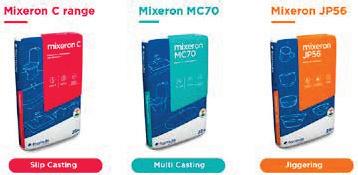
At Saint-Gobain Formula, we are able to support all our customers’ needs with any requirements they may need.
If you have any questions, please scan the QR code below or visit our website.

Linkedin: Saint-Gobain Formula
E-mail: Marketing@saintgobainformula.com www.saintgobainformula.com


Bangladesh's ceramic industry continues to flourish despite its almost complete reliance on imported raw materials. There are over 80 ceramic manufacturers in the country, catering to domestic as well as international markets, and more factories are being built. A restructuring of the total tax incidence on imported raw materials may boost export earnings, writes Jahir Ahmed.
Despite its almost complete dependence on imported raw materials, the ceramic industry in Bangladesh continues to thrive. With more than 80 ceramic manufacturers, the country caters for both domestic and international markets. Many new factories are being set up. However, the country's exporters are currently facing intense competition from rival countries to increase export earnings as the cost of raw materials has increased due to a 12.72% depreciation of the Bangladeshi currency. Manufacturers believe that restructuring the total tax incidence on imported raw materials could help accelerate the growth of export earnings.
Bangladesh levies at least 28.90% total tax on kaolin/china clay, ball clay, feldspar, quartz, other stone/mineral products, glaze, and pigment, to 34.80% on zirconium silicate, talc, and similar items, to 89.32% on flashing mechanism in toilet tank and lavatory seats and covers. Total tax incidence combines all import-related duties, such as customs duty, regulatory duty, supplementary duty, value-added tax, advance import tax, and advance income tax.
Interestingly, Bangladesh imports most of the raw materials from its ceramic trade rival countries, such as China, India, Thailand, Spain and Italy, which is a major disadvantage when it comes to beating them in cost-effective production. Also, it imports such raw materials from Hong Kong, Indonesia, Japan, Malaysia, New Zealand, Pakistan, Singapore, Taiwan, Turkey, UAE, UK, Ukraine and Vietnam.
At least 80% of the total raw materials used are mineral-based, whose source is not available in Bangladesh. In spite of that, the country’s indomitable impetus and high economic growth-driven and fast-expanding domestic market help it stay and even reach the export markets, say the manufacturers.
Bangladesh exported about $45 million worth of ceramic
products in 2024. About $41 million was earned from tableware, shipped to more than 50 countries, mainly to its traditional markets like Italy, Germany, USA, Greece, Poland, Norway, India, UK, Turkey, Belgium, Netherlands, Switzerland, Sweden, and Spain, according to theGeneva-based International Trade Centre (ITC).
“We have urged the government to impose a zero-import duty on the import of raw materials and a five-year tax reduction for the newly set-up ceramic factories just for initial stays,” emphasises Irfan Uddin, general secretary of Bangladesh Ceramic Manufacturers & Exporters Association (BCMEA), and director of tableware manufacturer FARR Ceramics.
However, Bangladesh has a rich deposit of more than 100 million tonnes of ceramic clay, including white kaolin, but, unfortunately, due to the absence of a mining industry in the clay sector, those deposits, scattered in different geographical regions, especially in the Mymensingh and Sylhet divisions, remain undeveloped.
Only a few quantities of white clay in the Bijoypur deposit of the Mymensingh division are exploited without any mining procedures. As a result, Bangladesh's ceramic industry heavily relies on imported raw materials (about 95% for export manufacturers).
Bangladesh has an estimated $200 million market for ceramic raw materials per year. The domestic market for ceramic products is worth over $1 billion a year, now, for its large population of 180 million. The country has invested about $2 billion in three conventional ceramic sectors: tableware, tiles and sanitaryware. The annual turnover of the tiles industry is around $700 million, while that of sanitaryware and tableware, respectively, is $200 million and $100 million.
According to BCMEA and industry sources, as of 2024, Bangladesh’s 22 ceramic tableware factories’ total annual production capacity is about 310 million pieces of porcelain,



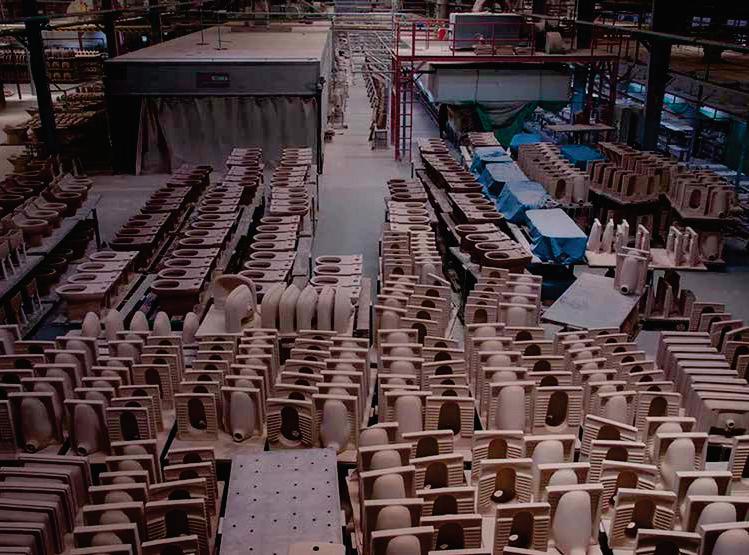
bone china, and stoneware tableware, while the total production capacity of 33 ceramic tile plants is about 280 million sq meters a year, and 20 ceramic sanitaryware manufacturers’ total annual production capacity is estimated to be about 19 million pieces. Some more factories are now in production or under construction. About 50,000 people are directly employed in the ceramic sector. Indirect employment is about half a million. The ceramic industry is one of the largest diversified export sectors and a major import substitute in the country.
Bangladesh is a ceramic-deficient country. According to industry sources, the country consumes about $1.1 billion worth of ceramic products annually. About 60% of the consumption of sanitaryware, 85% of tiles, and more than 90% of tableware is met by domestic
manufacturers, while the rest is imported, according to BCMEA. Bangladesh’s annual import of ceramic products is worth about $100-150 million. In 2024, according to ITC, Bangladesh imported about $93 million worth of ceramic products, in a restricted environment due to the change of regime by a mass political uprising. The imports were shipped mainly from China, India, Spain and Germany.
Industry sources say the manufacturing cost of ceramics is mostly composed of raw materials and energy, which make up most of the total costs. The chief energy source, natural gas, is considered a raw material in Bangladesh. The country’s lower wages and overhead expenses account for roughly 30-35% of the costs. However, the country now suffers badly from a gasshortage, as there are fewer gas exploration and development activities. Imported LNG supplements gas supplies.
Steady economic expansion helps the Bangladesh ceramic industry grow continuously. It is a lucrative hub for suppliers of raw materials, as well as plants, machinery and equipment. To promote Bangladesh’s position in the ceramic industry, BCMEA continues to hold its expo successfully. It will hold its fourth biennial event, Ceramic Expo Bangladesh, from 27th to 30th November 2025 (shifted from the previously announced dates of 28th November-1st December 2024).
The expo caters largely to the benefit of the Bangladesh ceramic industry, as well as exhibitors of clays, stones, feldspars, minerals, glazes, frits, pigments, colours, chemicals and other ceramic raw materials from different countries, mainly from the Asia Pacific and European Union.
“Ceramic Expo Bangladesh helps us reach almost all ceramic manufacturers who import various raw materials, including frit, composed glaze, body stain, glaze pigment, and other glazes and similar materials from China,” noted Suncely Yang, a senior executive of Dayu Glaze Co Ltd, based in Foshan, Guangdong, China.
“We have had customers in Bangladesh since 1995, but this exhibition has opened up greater opportunities to meet directly with almost all the manufacturers to promote our products,” she tells Asian Ceramics.
Industry sources say the lack of domestic supply of raw materials and anomalies in customs duty on imported raw materials are two of the major issues that restrict growth as an export manufacturer. Ceramic manufacturers allege that, in many cases, assessments of import-related duties do not match the actual charges to be levied because of the lack of an industry-friendly environment when it comes to customs clearances.
BCMEA believes that the present annual export earnings from ceramics, currently almost entirely porcelain and bone china tableware, will double to $100 million within a short time, if the setting up of raw material manufacturing facilities is supported with incentives and a favourable environment for growth in ceramic production, as well as if gas is supplied at discounted prices.
The manufacturers urge the government to establish a stable supply of natural gas with a subsidy for the energy-intensive ceramic sector that can help adequately compete with other rival exporting countries that are rich in domestic raw materials.
“Bangladesh’s cheaper and high-quality indigenous natural gas can strategically help maintain balance in cost-effective production for exports,” argues Moynul Islam, president of BCMEA and senior vice chairman of tableware manufacturer Monno Ceramic Ind. Ltd.
Although there is an absence of established local investors in the raw material sector, some foreign suppliers have set up production facilities in collaboration with local agents. One of Asia’s leading glaze makers, Taiwan-based China Glaze Co Group, set up its Bangladesh plant, China Glaze Bangladesh Ltd, in Dhaka, in 2015 to produce glaze, frit and ink, and initially to meet the domestic market priority. Its products are coating materials for ceramic surfaces, including a complete set of glaze materials, colouring stains, and digital inks.
Another Dhaka-based manufacturer, Torrecid Bangladesh, which is a division of globally operated and USA-based Torrecid, produces ceramic glazes, frits, and other raw materials for Bangladesh ceramic manufacturers. Torrecid Bangladesh, born in 2014, provides the Bangladeshi ceramic manufacturers with the latest technologies, trends, and technical assistance and design support
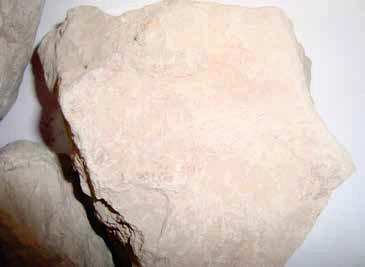
Foreign ceramic raw material suppliers and their subsidiaries and agents in Bangladesh (they will exhibit their products at Ceramic Expo Bangladesh 2025, scheduled to be held in Dhaka from 27th to 30th November this year, according to BCMEA):
Anhui Fitech Materials Co Ltd, Anhui, China
Anhui Panson New Materials S&T Co Ltd, Anhui, China
Aspen Global, BCMEA Expo, Dhaka, Bangladesh
Astral Material Industrial Co Ltd, Foshan, China
Bridge Chemie Ltd, Dhaka, Bangladesh
Broadways Chapmen Limited, Dhaka, Bangladesh
China Glaze Bangladesh Ltd, Dhaka, Bangladesh
Colorobbia Italia Spa, Sovigliana Vinci (Firenze), Italy
Expolica Ceramics Private Limited, Gujarat, India
Dayu Glaze Co Ltd, Foshan, China
Foshan Awa Industrial Co Ltd, Foshan, China
Foshan Chancheng Huabao Ceramics Materials Co Ltd, GuangDong, China
Foshan Donghai Technology Co Ltd, Foshan, China
Foshan He He Glaze Technology Co Ltd, Guangdong, China
Foshan Kehai Inno Ceramics Technology Co Ltd, Guangdong, China
Foshan Outao Inorganic Material Co Ltd, Foshan, China
Foshan Simple New Material Technology Co Ltd; Guangdong, China
Foshan Soar Techno Ceramic Co Ltd, Foshan, China
Foshan Sunvin Ceramics Co Ltd, Guangdong, China
Guangzhou Broad Trade Co Ltd, Panyu, Guangzhou, China
Linfeng Technology Co, Ltd, Foshan, China
MineAsia Pvt Ltd, Rajasthan, India
Nitto Ganryo Kogyo Co Ltd, Kasumigaura, Kaizo, and Ikaruga, Japan
Nobel Cera Coat, Gujarat, India
Puresil India, Gujarat, India
Torrecid Bangladesh, Dhaka, Bangladesh
Trade Worldwide Pvt Ltd, West Bengal, India
Vidres India Ceramics Private Ltd, Gujarat, India
Welsuit Glass Ceramics Pvt Ltd, Gujarat, India
Zibo North-Jewel Ceramic Material Co Ltd, Shandong, China
Zibo Yishun ceramic pigment & glaze Co Ltd, Shandong, China
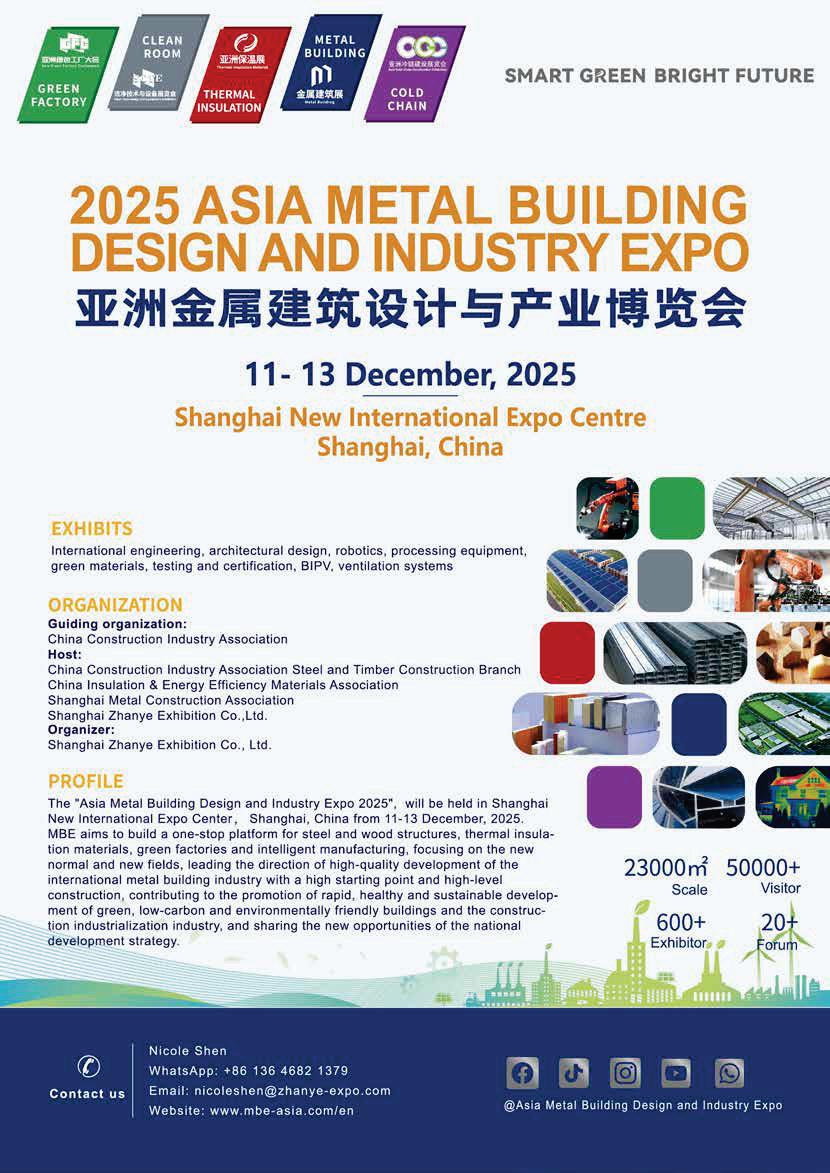
The economic and stable sourcing of raw materials and natural gas will be a crucial factor for Bangladesh in the coming years when it graduates to a middle-income country and keeps its export markets in the developed economies, especially the European Union, the UK and Canada, which are its major markets and where it enjoys dutyfree exports.
Bangladesh transitions from its least developed country (LDC) category in 2026, which may result in tariff barriers, with exports subject to an average tariff of 12.7% when accessing global markets.
At least 10 of the country's tableware manufacturers are export oriented. They include Akij Ceramics Ltd, Artisan Ceramics Limited, Bengal Fine Ceramics Ltd, FARR Ceramics Ltd, Monno Ceramic Industries Ltd, Paragon Ceramic Industries Ltd (PCIL), Peoples Ceramic Ind Ltd, Protik Ceramics Ltd, Shinepukur Ceramics Ltd, and Star Porcelain Ltd. Each has an annual production capacity of 10-45 million. Most of them produce porcelain, some both porcelain and bone china.
However, the tile and sanitaryware sectors have invested heavily, hoping to export after meeting domestic demand. The major tile manufacturers with capacity for export include Akij Ceramics Ltd, China Bangla Ceramic Ind Ltd, DBL Ceramics Ltd, Great Wall Ceramic Ltd, Khadim Ceramics Ltd, Meghna Ceramic Ind Ltd, Mirpur Ceramic Works Ltd, RAK Ceramics (Bangladesh) Ltd, and Sheltech Ceramics Ltd.
In the sanitaryware sector, leading export aspirants with similar production capacities are Abul Khair Ceramic Ind Ltd, Akij Ceramics Ltd, BHL Ceramic Co Ltd (Perla Sanitaryware), Charu Ceramic Ind Ltd, and RAK Ceramics (Bangladesh) Ltd.
Bangladesh aims to become the world's 24th largest economy by 2030 and an upper-middle-income country by 2031, which will result in a large amount of ceramic products consumed domestically.
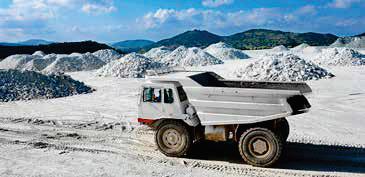

Puresil India exports kaolin clay, quartz and silica sand to Bangladeshi ceramic manufacturers. Photocredit, Puresil
Bangladesh’s tile manufacturers (with location)
AB Ceramic Industries Ltd (Kahaloo, Bogra)
AG Ceramics Ltd (Madhabpur, Hobigonj)
Akij Ceramics Ltd (Trishal, Mymensingh)
ATI Ceramics Ltd (Mirzapur, Gazipur)
Bangladesh Hardland Ceramics (Madhabpur, Habigonj)
Bangladesh Taiwan Ceramic (Sonargaon, Narayanganj)
BCL Ceramic Ind Ltd (Sajahanpur, Bogura)
Best Ceramic Ltd (Sreepur, Gazipur)
BHL Ceramic Co Ltd (Madhabpur, Habiganj)
China-Bangla Ceramic Ind Ltd – 1 (Rupganj, Narayanganj)
China-Bangla Ceramic Ind Ltd – 2 (Narshingdi)
DBL Ceramics Ltd (Sreepur, Gazipur)
Dhaka Shanghai Ceramics Ltd (Savar, Dhaka)
Excellent Tiles Ind Ltd (Mymensingh)
Fu-wang Ceramic Industry Ltd (Sreepur, Gazipur)
Great Wall Ceramic Industries Ltd (Sreepur, Gazipur)
Great Wall Premium Ceramic Ind Ltd (Sherpur, Moulvibazar)
Hamid Ceramic Ind Ltd (Lakshmipur)
Hi-Tech Ceramic Ind Ltd (Modhupur, Tangail)
Hua Thai Ceramic Industry Ltd (Sreepur, Gazipur)
Kanika Commercial Ltd (Bahubal, Habigonj)
Khadim Ceramics Limited KCL (Khadimnagar, Sylhet)
Fresh Ceramics/Meghna Group (Sonargaon, Narayanganj)
Madhumati Ceramics Ltd (Savar, Dhaka)
Meghna Ceramic Ind Ltd (Narayanganj)
Mir Ceramics Ltd (Sreepur, Gazipur)
Mirpur Ceramic Works Ltd (Mirpur, Dhaka)
Monalisa Ceramics (BD) Ltd (Sreepur, Gazipur)
New Zhong Yuan Ceramic Co (BD) Ltd (Ghatail, Tangail)
Pa-Wang Ceramic Ind Ltd (Banani, Bogra)
RAK Ceramics (Bangladesh) Limited (Sreepur, Gazipur)
Royal Industrial Park Ltd (Bhaluka, Mymensingh)
Sanita Ceramics Pvt Ltd (Tupamari, Nilphamari)
Sheltech Ceramics Ltd (Bhola Sadar, Bhola)
Simco Ceramics Ltd (Ghorashal, Palash, Narsingdi)
South East Union Ceramic Ind Ltd SEUCIL (Fakirhat, Bagerhat)
Star Ceramics Ltd (Madhabpur, Habiganj)
Sun Power Ceramics Co Ltd (Sreepur, Gazipur)
Top One Ceramic Ind Ltd (Bhaluka, Mymensingh)
Tushar Ceramics Ltd (Moheshpur, Jhenidah)
X Ceramics Ltd (Sreepur, Gazipur)
Bangladesh’s tableware manufacturers (with location)
Akij Ceramics Ltd (Trishal, Mymensingh)
Artisan Ceramics Limited (Bhabanipur, Gazipur)
Bengal Fine Ceramics Ltd (Bhagalpur, Savar, Dhaka)
Clay Image Ceramics (Mirpur, Dhaka)
FARR Ceramics Limited (Bhabanipur, Gazipur)
Jubok Ceramic Ind Ltd (Tejgaon, Dhaka)
Lauder Ceramic Materials Co Ltd (Aryhazar, Narayanganj)
Monno Bone China Ltd (Dhamrai, Dhaka)
Monno Ceramic Industries Ltd (Dhamrai, Dhaka)
Paragon Ceramic Industries Ltd PCIL (Mirzapur, Gazipur)
Peoples Ceramic Industries Ltd (Tongi, Gazipur)
Protik Ceramics Ltd (Dhamrai, Dhaka)
Protik Fine Ceramics Ltd (Dhamrai, Dhaka)
Shinepukur Ceramics Limited SCL (Kashimpur, Gazipur)
Standard Ceramic Industries Ltd (Joydebpur, Gazipur)
Star Porcelain Bangladesh Ltd (Madhabpur, Habiganj)
Tajma Ceramic Industry Ltd (Sherpur Road, Bogura)
Bangladesh’s sanitaryware manufacturers (with location)
Abul Khair Ceramic Ind Ltd (Kaligonj, Gazipur)
Akij Ceramics Ltd (Trishal, Mymensingh)
Apple Ceramics Ltd (Rangpur)
Bangladesh Insulator & Sanitaryware Factory (Mirpur, Dhaka)
BHL Ceramic Perla Sanitaryware (Madhabpur, Habiganj)
Charu Ceramic Industries Ltd (Madhabpur, Habiganj)
Dacca Ceramic & Sanitarywares Ltd (Tongi, Gazipur)
Euro Bangla Ceramic Company Ltd (Sylhet)
Excellent Ceramics Industries Ltd (Bhaluka, Mymensingh)
Glory Ceramics Pvt Ltd (Songolshi Sadar, Nilphamari)
Hamid Ceramic Ind Ltd (Ramgonj, Laxmipur)
RAK Ceramics (Bangladesh) Ltd (Sreepur, Gazipur)
Sajol Ceramic Ind Ltd (Sreepur, Gazipur)
Sanita Ceramics Pvt Ltd (Tupamari, Nilphamari)
Sarmano Ceramics Ltd (Goalanda Mor, Rajbari)
Solar Ceramics Ltd (Sreepur, Gazipur)
Star Ceramics Ltd ((Madhabpur, Habiganj)
Ceramic raw materials user heavy clay product manufacturers (with location) in Bangladesh
Echo Ceramics Ind Ltd (Sirajdikhan, Munshigonj)
Khadim Ceramics Limited (Khadim Nagar, Sylhet)
Mirpur Ceramic Works Ltd (Mirpur, Dhaka)
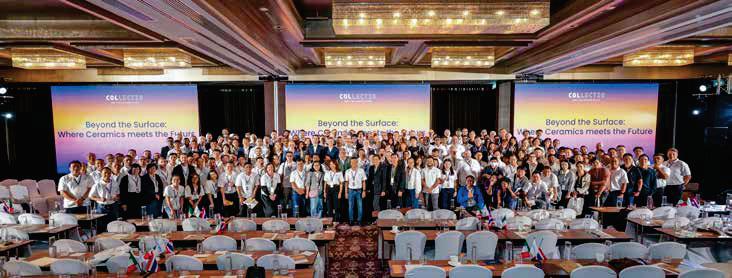
COLLECTIO, the international event organised by Colorobbia, held its third edition in Bangkok, following previous editions in Vietnam in 2023 and Indonesia in 2024.
Withinspiringandfocusedpresentations,ColorobbiaCOLLECTIO 2025 helped advance the ceramic industry beyond established technological frontiers. Attendees learned more about cuttingedge advances in digital glazing, large-format innovations, sustainability and customisation alongside prestigious Italian partners.
In the sessions, passion for craftsmanship met cutting-edge progress, not just as technical briefings. The collaborations were inspired by the slogan 'Made in Italy, Innovating the World', which aims to translate inspiration into action in order to elevate the ceramics industry.
The new edition of COLOROBBIA COLLECTIO 2025 in Bangkok was a great success. For Made in Italy ceramics, it has been the most important international event.
“It was important to us to maintain a limited and select group of partners in order to ensure the quality of the connections and presentations,” the organisers stated.
Colorobbia, the only ceramic Colorificio, that created and developed this format, has proven itself over the past three years with consistently and significantly increasing attendance and participation trends.
During the event, extra chairs were added to the ballroom
due to an unexpected increase in attendance. Over 250 people attended.
There was an attendance of the best Italian partners who were certified in terms of technology. Graphic design studios with expertise in the Asian market were selected for the occasion.
Made in Italy technological and material innovation was shared through presentations, one-to-one meetings and networking. Specially invited guests discussed ceramic trends, ceramic evolution and countertops. Jose Luis Ramon, Colorobbia Global Advisor on strategic and product matters, was one of them.
Insights into Italian design were provided by hand-picked top Italian graphic design studios, including Fabbrica del Sale, Nitida, Digital Design, Origo Style and Ink Side. Some of these already have offices in Asia. It was an event that featured presentations on new products and subsequent insights.
The number of customers attending exceeded expectations with countries such as Pakistan, India, Bangladesh, Myanmar, Thailand, Vietnam, Malaysia, Taiwan, Nepal, Australia, Korea, Italy, Singapore (agents), Indonesia, Sri Lanka, and the Philippines all represented.
Colorobbia emphasised its product range and its technical support for creating 'real' surfaces.

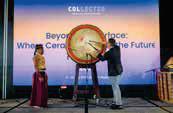
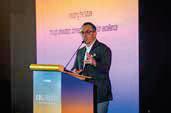

An award of a paid trip to Italy was presented to three lucky customers.
“We created a Colorobbia passport for each customer. For each one-to-one meeting with the installers or graphic design studios, the client received a passport stamp,” the organisers said.
Among Colorobbia's important initiatives was the donation it made to the Thai Red Cross towards the Myanmar earthquake.
A great deal of inspiration was drawn from Arteology's exhibition, which greatly inspired Asian customers. The Arteology collection embodies what Colorobbia is today: a bridge between centuriesold ceramic tradition and the continuous innovation that guides



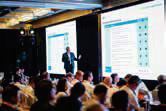

our work. Arteology was born from the desire to explore new possibilities, transforming material into surfaces that enhance every project, all inspired by the artistic heritage of the Bitossi ceramic archive.
Preemptive booking requests for the 2026 Collection were made by almost all customers. The event location has not yet been confirmed.



A widening range of applications, in both existing and new areas, is driving demand for ceramic thermal insulation and energy storage, writes Rohan Gunasekera.
The amazing properties of ceramics and modern-day alchemy by innovative scientists and manufacturers are making the materials useful in an increasing range of applications including thermal insulation and energy storage. Ceramic thermal insulation applications range from the humble heavy clay brick that provides insulation in homes to ceramic-based insulation materials in industrial furnaces and to high-technology heat shields in hypersonic missiles and aircraft nose cones. Demand for ceramic capacitors, so-called because of their ‘capacity’ to store energy, is seeing high-voltage growth, given their use in a wide range of applications from electronic devices and automobiles to industry. Investors and manufacturers are investing in these businesses to expand production capacity and increase market reach, indicating their growth potential. NGK Insulators, which makes ceramic capacitors and refractory lining materials, in June 2025 announced a deal with Torex Semiconductor to build a demonstration unit featuring NGK’s solar-powered EnerCera charging module. The two firms jointly developed a next-generation charging module equipped with EnerCera and advanced solar cells, enabling efficient energy harvesting even from weak light sources, which can significantly expand potential use cases. Kyocera is sending more capacitor engineers to and upgrading facilities at its new Thai subsidiary, Kyocera AVX Components Corporation, as it focuses on developing small, high-capacitance ceramic capacitors, given the growing demand for 5G and Internet of Things (IoT) related products. Alkegen, a portfolio company of investment firm Clearlake Capital Group, in 2022 acquired controlling ownership in leading Chinese speciality materials manufacturer Luyang Energy-Saving Materials Co Ltd, which produces ceramic fibres and other high-temperature insulating materials in China for the China market. Alkegen aims to use Luyang as its platform in Asia to extend and cross-sell many of Alkegen’s other products and technologies. Mitsubishi Chemical
Group in February 2024 said it had developed a high-heat-resistant ceramic matrix composite (CMC) using pitch-based carbon fibres. Providing heat resistance as high as 1,500 °C, the CMC is expected to be used mainly in space industry applications. In 2023, Morgan Advanced Materials expanded its Yixing plant in China, increasing the production capacity of insulating firebricks (IFBs) by over 50% to support industries like petrochemicals, steel, and aluminium in China and Asia.
In the thermal ceramic insulator market, which consists of ceramic fabrics and insulation bricks, mining and metal processing hold 35.8% of the market share, by end-use industry. These ceramics are used in furnaces, crucibles, and refractory linings in the mining and metal processing industries to enable efficient and reliable high-temperature operations during smelting and refining processes.
“Mining and metal processing are the primary industries of application due to the significant amount of requirement of these materials in the production and processing of metals,” says a study by market research outfit Imarc Group. “The demand for these ceramics is attributed to a massive surge in metal production, mainly for kilns, furnaces, and other high-temperature insulation applications. They are also used in the annealing of furnace cover seals, hot-face lining for heat-treatment furnaces, secondary insulation for reheating furnaces, and casting nozzle covers.”
Imarc says there is increasing demand for high-temperature ceramic fibre insulation due to its low weight, excellent heat resistance and low thermal conductivity. The metallurgy, petrochemical, and cement industries need materials that resist extreme temperatures with minimal heat loss, offering a favourable thermal ceramics market outlook. Innovations in bio-soluble and environment-friendly ceramic fibres have gained traction as industries seek alternatives to traditional refractory ceramic fibres (RCFs), which are associated with health risks. The shift towards
low bio-persistent ceramic fibres reflects a broader trend of adopting safer and more sustainable insulation solutions.
Adopting high-quality, high-performance ceramic insulation can help chemical industry businesses increase the productivity of their manufacturing operations. Fire safety equipment, such as ceramic wool insulation and blankets resistant to high temperatures, has gained widespread popularity in recent years due to the growth in industrial applications. The power generation market is experiencing substantial development, including the requirement that workers operating these furnaces must be appropriately attired. Many modern ceramic fabrics are produced with low biopersistent fibres, reducing the potential health hazards related to airborne fibre inhalation. Ceramic fabrics, unlike asbestos-based products, are non-toxic and safer for workers who handle them.
In the ceramic capacitor market, studies say the future of the global multilayer ceramic capacitor market looks promising with opportunities in the computer, telecom, consumer electronics, automotive and industrial end-use industries.
“The major drivers for this market are increasing demand for consumer electronic products, growing demand for premium smartphones, and increasing production of electric vehicles,” says a study by Lucintel.
Emerging trends in the Multilayer Ceramic Capacitor (MLCC) market include the development of ultra-small case size capacitors for portable electronic devices such as those used in portable telecommunications and digital cameras. Another trend is the increasing use of MLCCs in telecommunications infrastructure for higher frequency and performance requirements, as they are highly reliable, which makes them suitable for applications where switching speeds must be very fast and signals have to be preserved.
management (BCM) that considers geopolitical risks. We aim to establish a fully redundant supply chain that operates seamlessly across economic zones centred in China, as well as those centred in Europe and the US.”
According to Murata’s projected financial results for FY2025, overall revenue will be lower mainly because of the appreciation of the yen, while revenue from capacitors for servers and mobility is expected to rise. In FY2024, in Murata’s mobility business, the revenue of capacitors, EMI suppression filters and inductors grew for automobiles, along with the revenue from capacitors and lithium-ion secondary batteries for servers and computers. In home electronics, the revenue from capacitors increased for audio-visual equipment. In FY2025, revenue from the capacitor operating segment is projected to increase, mainly in MLCCs given the expansion of investment in IT infrastructure such as artificial intelligence (AI) server-related, and in electric vehicles (EVs) and advancement of autonomous driving (AD) and ADAS technologies.

“The most rapidly growing market right now is demand for AI servers, particularly in data centres,” says Nakajima. “We anticipate an average annual growth rate of 18% for this market through 2030. What’s required in this domain includes highvoltage capacitors and extremely compact, highcapacity products that address designers’ needs to maximise space use.
“For compact highcapacity products, our competitive strategy is to focus on first miniaturisation technology. Miniaturisation means not only reducing the size of the ceramic powder but also controlling the size of the crystals after sintering. This miniaturisation technology is one of our core strengths. It’s made possible because we handle everything in-house, from material production to the development of production equipment.
Murata Manufacturing Co Ltd aims to seize growth opportunities in electronics and achieve significant growth towards 2030 under the firm’s medium-to-long-term business growth plan.
“We aim to solidify and strengthen our position as the global number one in capacitors (MLCCs) and inductors and Electromagnetic Interference (EMI) filters,” says Norio Nakajima, president of Murata Manufacturing Co. “In capacitors, we plan to capture market share in growth areas and respond to volume zones.” Growth areas are edge devices, mobility and IT infrastructure.
“The demand for capacitors is expected to grow significantly, driven by applications such as smartphones, automotive powertrains, advanced driver assistance systems (ADAS), and IT infrastructure, including standard servers and AI servers,” says Nakajima.
“We will strengthen our research and development framework and continue to introduce cutting-edge products in each growth domain. We plan to continue increasing our production capacity by 10% annually. We are also focusing on business continuity
“In addition, infrastructure applications such as automotive and communications systems require extremely high-performance and highly durable components. For these applications, even a single defect is unacceptable. Our dispersion technology ensures the creation of structures free from voids or defects. Again, this is achieved by producing our own powders and developing our own sintering furnaces.
“Our dielectric layers and electrodes are less than a micron thick. Without perfect connectivity – free of breaks – high-capacity performance cannot be achieved. Precision stacking and layering technology is key here, and we rely on our expertise to expand our capacitor lineup.”
According to Kyocera Corp, in its electronic components business sales were almost flat in the financial year ended 31st March 2025 owing to a decline in demand from the sluggish European automotive markets which, however, was offset by an increase in sales of components such as capacitors and crystal devices in the information and communication markets and the industrial equipment markets.
In 2026, Kyocera forecasts the electronic components business will increase due to the profitability improvement of MLCCs and tantalum capacitors at its Kyocera AVX (KAVX) subsidiary. It sees strong growth potential in MLCCs and tantalum capacitors. Kyocera aims to strengthen the competitiveness of the MLCC business by allocating Kyocera’s high profitability and competitively advantageous MLCC resources, such as technology and talent, to KAVX, to enhance its production technology and capability. KAVX’s MLCC business is expected to profit in fiscal 2026. Kyocera will also continue exploring strategic mergers and acquisitions for market share expansion. The company plans to expand its tantalum capacitor business and increase polymer product share, aiming for a quick return to double-digit profit margins.
“In the electronic components business, we expect an increase in earnings due to the improved profitability of MLCCs and tantalum capacitors at KAVX,” a company spokesperson says. “We will focus on MLCCs and tantalum capacitors, which are expected to further increase their market share.
“In the information and telecommunications market, which is our core market, we are maintaining high profitability in small-sized high capacitance MLCCs and timing devices.
“However, we are struggling at the moment due to a decline in the capacity utilisation rate of MLCCs for automotives caused by the sluggish market and increased investment in production of polymer products in the tantalum capacitor business. We are taking actions aiming to achieve an immediate recovery in profitability.”
To strengthen the competitiveness of the MLCC business, Kyocera has allocated its highly profitable and competitive Kyocera MLCC technology and human resource to KAVX since the previous fiscal year, and with the strengthening of production technology and facility capabilities, profitability is improving and KAVX’s MLCC is expected to turn profitable in the current fiscal year.
Kyocera Corp is stepping up new product development through the technological integration of the electronic components business in Kyocera Corporation and KAVX.
“Along with diffusion of 5G and IoT-related products, it is necessary to make components smaller and more reliable due to the trend toward more devices with AI functions as well as high functionality for communications terminals such as smartphones and base stations,” the company spokesperson says.
“To meet market needs, Kyocera is developing products such as small, high-capacitance ceramic capacitors with enhanced reliability relative to temperature and humidity. In addition, we are developing ceramic capacitors and connectors with enhanced high-temperature reliability and pressure resistance.
“These products are designed for the automotive-related market, where advancements continue in ADAS and electrification, and in the semiconductor-related market, where demand is rising for hightemperature guarantees alongside the expansion of the advanced semiconductor sector.”
Kyocera says there is a shift in demand for capacitors from conventionally used ones to slightly smaller and higher capacitance products in automotive applications. Also, its market share for conventional tantalum capacitors with manganese dioxide was quite high, but MLCCs are gradually taking over this market, and the market size is shrinking. The significant growth of polymer tantalum capacitors has replaced manganese dioxide tantalum capacitors as they are used in large quantities in solid-state drives (SSDs) and other products. In response, Kyocera has been preparing to build an automated line at its new factory in Thailand.
Growth prospects in MLCCs are indicated by plans by Toray Group, which makes release films used in making MLCCs, to
DEMAND FOR CERAMIC CAPACITORS, SO-CALLED BECAUSE OF THEIR ‘CAPACITY’ TO STORE ENERGY, IS SEEING HIGHVOLTAGE GROWTH, GIVEN THEIR USE IN A WIDE RANGE OF APPLICATIONS FROM ELECTRONIC DEVICES AND AUTOMOBILES TO INDUSTRY.


expand capacity. The firm aims to increase sales by increasing the quantity of films sold by meeting higher requirements for release films for MLCC and by capturing growth in the mobile device and automotive markets.
“The thinner the functional film, the better is its product characteristics,” Toray says. “Growth in functional film demand is seen mainly in capacitor dielectric material, semiconductor manufacturing processing, and mobility-related applications.
“As far as capacitor dielectric applications are concerned, MLCCs are becoming smaller while increasing in capacity at an accelerating pace. This reflects the improved performance of electronic devices and higher data transmission volumes. Under these circumstances, Toray’s PET films have been adopted by many MLCC manufacturers owing to their superior smoothness and cleanliness, which enables thinner and more ceramic layers. Based on the increase in demand, we will increase production capacity in Japan by 1.6 times compared with the current level by 2025.














































































“For our ultra-thin capacitor films for electric vehicles, for which we hold a 60% global market share, steps had already been taken to increase production capacity in Japan by 1.6 times in 2022. As the leader in the automotive capacitor film market, thanks to our ultra-thin, high voltage resistance, high-quality products, we plan to increase our production capacity another 1.4 times by 2025 in light of the forecast growing demand for xEVs (eXtended electric vehicles).”
In order to respond immediately to the growing demand for MLCCs in telecommunications and automotive applications, Toray Group has decided to boost the production capacity of Lumirror biaxially oriented polyester release films for manufacturing MLCCs in Japan, the biggest consumer of release films. The Group will retrofit production facilities at its Gifu Plant to increase production capacity 1.6-fold compared with today. The new facilities are scheduled to begin production in 2025. Lumirror is an extremely smooth film that is highly effective at enabling thin, irregularityfree ceramic layers. Many MLCC manufacturers have adopted it for this reason, helping them to miniaturise and raise MLCC capacity.
NGK Insulators says that its deal with Torex Semiconductor to jointly develop a charging module, the combination of flexible film-type solar cells, EnerCera batteries, and power management integrated circuits, allows the creation of lightweight, ultra-thin, and bendable modules that leverage the strengths of each component.
“From these features, the module is expected to be deployed in applications such as wearable devices, IoT edge devices, and indoor environmental monitoring systems for offices and factories.”
EnerCera can function as an energy storage device that offers the advantages of both a capacitor and a Li-ion rechargeable battery, thereby contributing to the implementation of self-sustaining IoT systems in society. EnerCera was born from crystal direction alignment technology possessed by the NGK Group from its work as a ceramics manufacturer.
various types of ceramic kiln furniture, ceramic reactor vessels, and other refractories. The firm offers a broad range of kiln furniture and refractory products ranging from components for leading-edge fields, including ceramic capacitors, flat panel displays, and ferrites to ceramics industries such as tiles, sanitaryware, and tableware.
Alkegen, which owns Luyang Energy-Saving Materials Co., says it develops insulation solutions that allow high-temperature applications to reduce energy consumption, which saves money in manufacturing operations and ensures better safety. Alkegen worked with a customer, Petrobras, to study the application and resulting performance data of the Alkegen Carbowall System, an engineered insulation solution using high-temperature vacuumformed ceramic fibre shapes installed in the convection section of chemical and petrochemical furnaces. The study demonstrated the benefits of using the Carbowall System to reduce carbon emissions and lower operational costs.
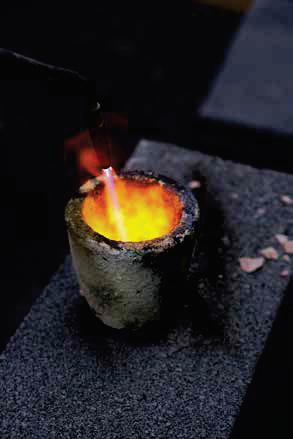
EnerCera is an ultra-compact, ultra-thin lithium-ion rechargeable battery that uses NGK Insulators' proprietary crystal-oriented ceramic plates as electrodes. Its unique semi-solid structure, composed of ceramic laminate battery components soaked in a small amount of electrolyte, delivers a combination of features previously difficult to achieve in lithium-ion batteries. These include compact size, high capacity, high output, high heat resistance, and long life, ideal characteristics for IoT device power sources. Due to their low internal resistance, EnerCera batteries can store incredibly small amounts of electricity and output large amounts of power when required, making them the ideal power source for environmental power generation (energy harvesting) and wireless power transfer.
NGK has also applied the firing technologies and expertise gained through the manufacture of insulators and ceramics to develop
According to a study by Alkegen with Petrobras, over the years, ceramic fibre materials have consolidated their acceptance as thermal insulation, finding significant applications in the chemical and petrochemical industry, such as reformers, oil heaters and pyrolysis furnaces. The insulation material must exhibit resistance to the maximum temperature required by the process, along with erosion and thermal variations. Maximising the thermal effectiveness of the system requires the selection of materials with low thermal conductivity properties while maintaining mechanical stability. Ceramic fibre systems are frequently used as results from the fusion of mixtures of alumina and silica, with the possible addition of zirconium to raise the service temperature. These compositions are applicable to a wide range of temperatures. In situations where dimensional stability is critical, parts are pre-fired at specific temperatures. It is also common to use protective coatings to guarantee stability under operating conditions, to protect the exposed surface of the parts, forming a thin, dense and impermeable ceramic layer highly resistant to gas passage, both with and without suspended particles.
The study says that in many instances, it is desirable to reduce the weight of individual parts being installed, as well as the unit weight of each part. For ease of installation and worker ergonomics. To minimise downtime during system installation, the insulation must be designed to be applied quickly, safely and, if possible, without the need for specialised labour, whose availability is increasingly scarce on the market.
Luyang Energy-Saving Materials Co. has partnered with Alkegen since 2015. Luyang produces energy-saving materials in the fields of ceramic fibres, soluble fibres, alumina fibres, and other hightemperature insulating materials like rock wool fibres and insulating fire bricks.










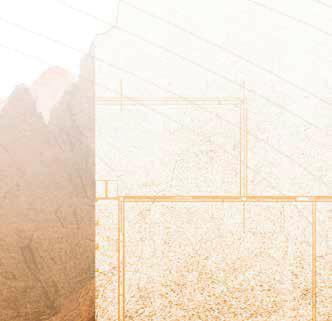



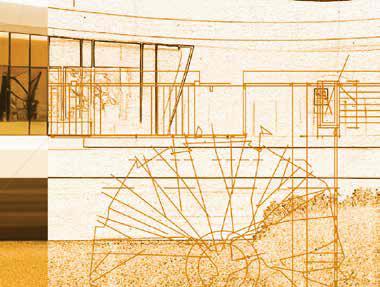

Imagine durable wall and oor coverings that provide a timeless aesthetic while balancing environmental responsibility. At the top of the list are ceramic tiles. With a double-digit growth rate over the past several decades, modern ceramic tiles are the unsung heroes of sustainable construction in India's $4 billion+ tile market, says Dinesh Vyas, a techno-marketing specialist, who brings extensive experience from industry leaders such as Ambuja Cement, Larsen & Toubro and Prism Johnson.
Today, India is the second-largest tile producer in the world, and this growth seems unstoppable considering the huge ongoing development and export opportunities.
Despite the compelling sustainability of ceramic tiles, I observe a persistent cloud of misconceptions about their durability and installation challenges that dim their eco-friendly potential. My experience reveals that consumer scepticism often stems from systemic issues, which I address here by proposing strategies to enhance sustainability and usability, highlighting why modern ceramic tiles outshine other flooring options in environmental performance, and urging the industry to unite in unlocking their transformative power for a greener planet.
Originating from an abundant wealth of clay, sand, and feldspar, ceramic tiles are a masterpiece of environmentally responsible design from cradle to grave. Their green credentials include:
1. Efficient material uses
Ceramic tiles use locally available materials, unlike the energy-intensivequarryingofrealstonesorthedeforestation issues associated with many other alternatives, especially wood. Almost all modern tile plants recycle production process waste and some also reduce virgin resources to a certain extent. Closed-cycle production reduces environmental stress by recovering energy, scraps, and effluent minimising environmental strain.
2. Low carbon footprint
While ceramic tile production demands thermal energy in kilns and spray drying, it is far more efficient than steel or cement processes. Though dry granulation is uncommon, emerging technologies like advanced kilns and large-format
tilesenhanceefficiency,withlargeformatsofferingupto30% lower relative emissions per square metre despite greater coverage [Bedná ová et al., 2024]. Based on various LCA studies, modern ceramic tiles achieve significantly reduced lifecycle emissions lower than historical benchmarks – far below vinyl and laminate alternatives, which can emit several times more due to shorter lifespans requiring replacements. Engineered wood and natural stone like marble or granite are comparable but lack ceramic's versatility and aesthetic and functional possibilities.
3. Durability and energy efficiency
Ceramic tiles generally endure for 60 years, outlasting LVT, laminate and engineered wood, which often fade within a decade. Their resistance to scratches, stains, and moisture means less maintenance and fewer chemical cleaners, lowering environmental impact. Fewer replacements, less waste, and lower lifecycle costs make tiles sustainable powerhouses. Additionally, their high thermal mass absorbs, stores, and releases heat slowly, stabilising indoor temperatures and reducing energy savings in heating and cooling. An example is H&R Johnson’s Cool Roof Tiles, with high SRI values (>90), which significantly reduce roof temperatures, cooling rooms below and saving energy for air conditioning in India’s hot climate, enhancing comfort, and reducing emissions.
4. Reduce, reuse and recycle
Inert, non-toxic, old and broken ceramic tiles can be used for paving or asphalt, avoiding landfills. Compare that to LVT and laminate, whose plastic bases resist recycling and
fuel microplastic pollution. Inside modern tile factories, almost all process waste is reused and recycled, optimising consumption. However, I still see dumps of ceramic polishing waste, often referred to as polishing sludge or residue, outside many Morbi (in Gujarat) tile factories, highlighting the need for better waste management practices in the industry. My recent discussions with few industry professionals were encouraging as I got to know some very good initiatives and wisdom where large parts of polishing waste (related to Glazed Vitrified Tiles polishing) and squared waste being recycled by an increasing number of manufacturers.
5. Health, hygiene, and safety
Ceramic tiles, being inorganic, emit negligible VOCs and formaldehyde, unlike LVT’s phthalate and SVOC emissions or laminate’s formaldehyde and benzene risks, ensuring superior indoor air quality for health-sensitive spaces. Their non-flammable, slip-resistant surfaces excel in hightraffic areas, surpassing wood or laminate in hygiene and durability. H & R Johnson’s innovations enhance this edge with Germ-Free Tiles, embedding patented silverion technology to neutralise bacteria, viruses, fungi, and moulds, tested to JIS Z 2801:2010 standards; Max-Grip Tiles, offering R10, R11, and R12-rated slip resistance for ramps and wet areas; and Anti-Static Tiles to mitigate ESD hazards in environments like electronics facilities, ensuring safety and aesthetics.
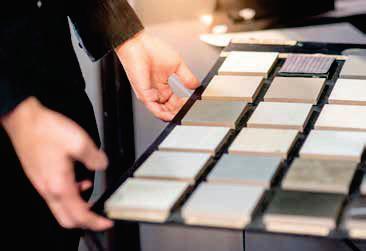
“With over 750 small and large players in India, each holding a modest market share, individual initiatives are often unviable; major brands must unite to forge a collaborative ecosystem that ampli es their worldclass products and unlocks underutilised potential."
Having established the robust sustainability credentials of ceramic tiles, from resource efficiency to health benefits, it is critical to compare these against competing flooring materials to highlight their superior environmental performance. Natural stone, while visually stunning, incurs a high environmental cost due to energy-intensive extraction, dwarfing ceramic tiles’ modest footprint while offering comparable aesthetics. Synthetic options like LVT and laminate, laden with plastics, exhibit high global warming potential and poor recyclability, with shorter lifespans leading to increased waste. Similarly, wood and engineered wood pose risks of deforestation and VOC emissions from adhesives, requiring frequent maintenance unlike ceramic tiles’ low-maintenance longevity, making tiles the standout choice for sustainable flooring.
Despite their strong sustainability credentials and comparative advantages, the eco-friendly benefits of ceramic tiles remain underutilised and undermarketed, largely because the industry has not communicated these strengths in a convincing and impactful way. Over and above this, there are issues that shake consumer confidence in some cases where tiles fail prematurely. These issues, particularly in India, arise from improper selection, poor installation, and limited education, hindering the industry from fully leveraging tiles' green potential.
1. Improper tile selection
Choosing polished glazed vitrified tiles for high-traffic zones like restaurant and hospital lobbies invites wear, stain or slip tarnishing perceptions. Selecting tiles as per usage environment and functionality considerations is not common and selection is skewed towards aesthetics. This leads to the visible failure of tiles much earlier. I have encountered multiple cases where large polished GVT was chosen to mimic the shining, pristine designs of imported Italian marble, overlooking its low scratch resistance, unlike natural marble, you cannot repolish a GVT-tiled floor to restore its surface in high-traffic areas. I have encountered multiple cases where large polished GVT was chosen to mimic the shining, pristine designs of imported Italian marble, overlooking its low scratch resistance, unlike natural marble, you cannot repolish a GVT-tiled floor to restore its surface in high-traffic areas, and you cannot blame the customer who has not been explained this by the tile maker.
2. Compromised installation practices
This is a larger issue in India. Outdated cement mortar methods, ignoring appropriate modern adhesives and untrained masons, cause air gaps, poor adhesion, and thermal expansion failures. These shorten tile lifespans, undermining eco-benefits.
3. Lack of industry-wide education
Low awareness among consumers, installers, and even design and construction professionals about proper tile selection and installation fuels misconceptions that tiles fail prematurely, overshadowing their green merits. While tiles have evolved dramatically, not only in large sizes but also in textures and decoration, the technical information, dos, and don'ts remain poorly understood across the board. It is particularly disappointing to see sales professionals in the industry with inadequate knowledge of the product and its installation. Education must begin within companies, sensitising their teams to ensure accurate information flows to all stakeholders.
To position ceramic tiles as the preeminent leaders in sustainable flooring and cladding, the industry must rally behind decisive, collective efforts. With over 750 small and large players in India, each holding a modest market share, individual initiatives are often unviable; major brands must unite to forge a collaborative ecosystem that amplifies their world-class products and unlocks underutilised potential.
However, while industry-level efforts may take time in such a fragmented sector where most of the production comes from the unorganised segment, charity begins at home, individual companies must proactively implement these actions to drive immediate progress. Here are key actions to drive this transformation:
a. Collective promotion of tiles as the preferred surface covering b.Prioritising consumer education
c. Halting counterproductive marketing practices
d.Funding mason training and education
e. Effective marketing as responsible product makers
f. Fostering research and development collaboration
g.Establishing industry-wide sustainability standards
Modern ceramic tiles offer immense advantages – durability exceeding 60 years, minimal emissions, and resource efficiency – that Indian manufacturers are harnessing for world-class products. Yet, their potential remains underutilised due to fragmented efforts.
I wish major brands could collaborate. Imagine the impact if education, innovation, and advocacy were combined to turn ceramic tiles into sustainable icons. It is not just about products – it is about a greener India legacy. Let's act now for enduring change.
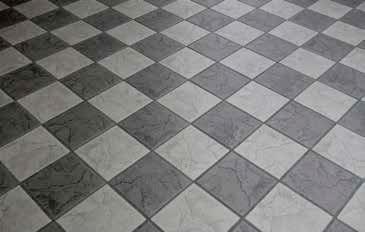

Contact













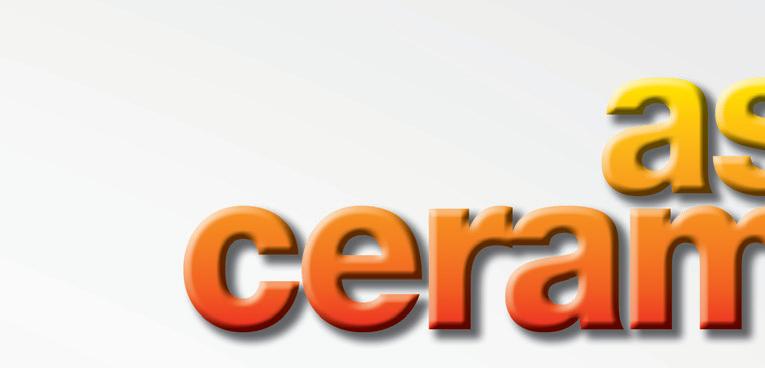
























































Payment has been sent to your bankers:
A/C name: Bowhead Media Ltd
Lloyds Bank PLC; P.O. Box 1000 BX1 1LT United Kingdom
Sort Code: 30-98-96 A/C No: 02504041
IBAN: GB42LOYD30983602504041
SWIFT Code: LOYDGB21235 All























































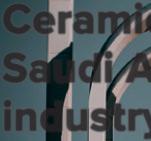


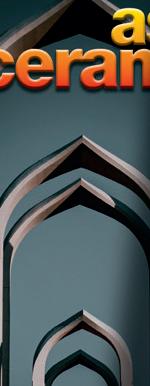















































































































































































NUTEC Bickley, with its headquarters in Mexico, specialises in designing and manufacturing kilns for ceramics, furnaces for steel, aluminium, and specialty alloys, ovens and dryers, combustion and control systems as well as preheaters. It has a wide range of services for automotive, aerospace, sanitaryware, refractories, technical ceramics and steel industries. Alberto Cantú, vice president of ceramics, NUTEC Bickley, speaks exclusively to Asian Ceramics about the company's products, plans and personnel.
Can you provide an overview of NUTEC Bickley's experience so far in 2025? Is there anything you are looking forward to this year?
AC: Thisyearmarksour50thanniversaryandwearehappy to celebrate it by continuing to deliver great performance kilns for ceramic applications in various industries.
We are especially excited about deepening our engagement with the Asian ceramics market. We are seeing strong interest in energy-efficient kilns, especially electric and hybrid systems, and we will assist Asian customers as they transition toward lower-emission technologies. We are also exploring new partnerships that bring our advanced combustion technologies closer to Asian customers, particularly in fast-growing sectors like technical ceramics, for aerospace or energy applications.

Isthereanythingspecificthatyouintendtoachieveinthecoming year, and what plans do you have to accomplish them?
AC: A key move now is expanding our offering by entering the Regenerative Thermal Oxidizer (RTO) market. We have recently signed a licensing agreement with Kalfrisa, a well-established Spanish manufacturer, to design and fabricate RTOs for the North American market. This will allow us to offer complete solutions for customers looking to reduce VOC emissions and meet increasingly stringent environmental regulations.
We will also continue advancing our kiln technologies and expand our footprint in Asia by partnering with companies seeking reliable, highefficiency firing solutions. We focus on innovations that improve energy performance and environmental compliance.
How does NUTEC Bickley intend to take advantage of potential growth opportunities in its specific business areas?
AC: Principally, in two main ways. First, by diversifying into new areas like RTOs, as mentioned. Secondly, we are pushing further into electric and hybrid technologies to support customers’ decarbonisation goals. We are also promoting our ECOmbustion system, which helps improve energy efficiency and reduce emissions from gas-fired systems.
NUTEC Bickley supplies its products to many countries around the world. Do you intend to expand your reach in the future? If so, which markets or regions are of particular interest to you?
AC: Yes, definitely. Over time, we have successfully delivered projects in countries like China, India, Thailand, Malaysia,andIndonesia.WeseecontinuedpotentialinAsia and, today, India stands out as particularly interesting. The scale of its ceramics industry, and its increasing focus on energy efficiency and environmental compliance, aligns well with our offering.
What are your views about Asia as a market for your products and services?
AC: Asia is very important to us. It holds over half the world’s population, andmanycountriesaregrowingfastintermsofindustryandconstruction, meaning strong demand for ceramic products and for modern kilns, among others.
We see good opportunities in countries like India, Vietnam, and Indonesia, where new factories are being built. Meanwhile, places like China, Malaysia and Thailand are seeking to upgrade their existing lines with more efficient, clean technologies.
This is a good fit for our energy-efficient kilns, electric and hybrid systems, and emissions control. We think Asia will continue to be one of the biggest growth regions.
How has your experience been dealing with the Asian ceramic industry?
AC: It has been positive, but not without challenges, especially distance. Time zones, language, and logistics can make it harder to manage projects directly from abroad. Having a good local partner is crucial. For example, we installed kilns in Indonesia and China during the pandemic, when international travel was restricted. We could not send our team, so we relied on local partners for supervision, installation, and support. With excellent collaboration and planning, both projects were completed successfully. This demonstrated the importance of building strong local relationships when working in Asia.
Having designed thermal equipment to fire a variety of ceramic kilns for over 50 years, what changes have you seen in your field during that time?
AC: In recent decades, ceramic kiln technology has seen major improvements. One change has been transitioning from refractory brick linings to fibre-based insulation materials when firing below 1600°C, thus increasing thermal efficiency and reducing cycle times. Additionally, employing energy-saving combustion systems like regenerative and self-recuperative burners has become common, lowering fuel use and emissions.
There is also a noticeable trend toward electrification, with electric elements gaining popularity as manufacturers switch from natural gas. This supports decarbonisation goals and improves temperature control and consistency.
For control, manual and analogue systems have mostly been replaced by PLCs and SCADA platforms, which provide better precision and repeatability. Even more advanced solutions are available, such as predictive controls and Industry 4.0 tools – real-time data monitoring, remote access, and integrated control systems, contributing to better performance, improved maintenance planning, and faster responses to process issues.
Describe any recent investments you have made in equipment or technology, and how they have affected your competitiveness.
AC: We have consistently invested in technology to stay competitive. We have developed and adopted several in-house tools, like structural design software, computational fluid dynamics (CFD) simulations, and systems for CRM, finance, and accounting. We even created proprietary software for thermal calculations on batch kilns. These tools reduce engineering time, improve accuracy, and speed up response times.
Regarding fabrication, we have designed and built our own ceramicfibre module machine. This allowed us to significantly reduce the time required to insulate kilns, improving delivery times and giving us a clear advantage in project execution.
As a company that utilises a significant amount of energy, how does NUTEC Bickley deal with sustainability? What initiatives have you implemented, or will you implement, to ensure the environment is protected and resources are used responsibly?
AC: Our customers consume significant amounts of energy and hence our commitment to helping them operate more efficiently and with a lower environmental impact. At NUTEC Bickley, we focus on designing and manufacturing kilns that are highly energy efficient and support decarbonisation efforts.
I have mentioned optimising fuel with ECOmbustion. We also incorporate regenerative and recuperative burners, which can often save over 30% on fuel consumption. We’ll continue improving the kiln performance while helping our customers reduce their carbon footprint and operate more sustainably.
THIS YEAR MARKS OUR 50TH ANNIVERSARY AND WE ARE HAPPY TO CELEBRATE IT BY CONTINUING TO DELIVER GREAT PERFORMANCE KILNS FOR CERAMIC APPLICATIONS IN VARIOUS INDUSTRIES

What strategies do you employ to remain competitive in an increasingly challenging business environment? Can you tell me what makes NUTEC Bickley different from its competitors?
AC: To stay competitive, we maintain a sharp focus on enhanced technology and customer support. We invest heavily in engineering tools and automation to reduce design and fabrication times, so we offer faster and more cost-effective solutions. Meanwhile, we are always working to integrate the latest energy-efficient and low-emission technologies.
A key strength is our state-of-the-art manufacturing facility, where we can fully preassemble and test equipment before shipping; not only ensuring high quality but reducing our lead times significantly, giving customers a faster, smoother installation process.
Also setting us apart is combining technical expertise with flexibility. We work closely with each customer to understand their process and tailor solutions to their specific needs. Our IMPS control system, ECOmbustion technology, and in-house tools give us a strong edge in delivering high-performance kilns with lower operating costs and better environmental outcomes.
Also, because we have manufacturing and engineering capabilities in multiple regions, we are competitive in global markets while still offering local support.
What are your perceptions of market current and future trends?
AC: We’ve seen the ceramics market impacted by global economic uncertainty. Strong demand following the pandemic has started to slow; various changed trade rules and geopolitical tensions have led to more cautious investment decision-making.
However, we remain optimistic about the medium- and long-term outlook. Advanced ceramics continue to play a critical role in highgrowth industries such as semiconductors, aerospace, energy, and electronics. These sectors are expected to expand significantly in the future, and all rely on precise, high-performance ceramic components.
As these technologies grow, so will the need for reliable and energyefficient firing solutions. We believe we are well positioned to support that demand with our specialized kilns and technical expertise.
What are your goals for the next five years?
AC: To strengthen our position as a leading kiln supplier, we will offer solutions that deliver excellent product quality and support our customers’ sustainability goals. We want to be recognised not just for the performance of our kilns, but also for helping reduce ceramic manufacturing’s carbon footprint.
To support this, we are focused on advancing energy-efficient technologies like those described above. We will offer complete solutions that address both energy efficiency and air emissions, helping our customers meet stricter environmental standards
We will also continue investing in engineering tools and digital systems to improve speed, precision, and flexibility in every project we deliver.



Bangladesh seems to always be under pressure with little to no government support. Has the ceramic industry simply over-stated its importance, or is it a sector that can genuinely be transformational to the country’s economy, wonders Andy Skillen, special correspondent, Asian Ceramics?
Baladesh
The ceramic sector of Bangladesh seems forever in the crosshairs. Regardless of the fact that there is a trend towards rapid urbanisation, a large and growing domestic population and market and internationally recognised high-quality products, particularly in the case of tableware, the industry’s path continues to stumble from difficulty to obstacle and back to restriction.


Recent fiscal developments have also darkened the mood as the country has revealed its national budget for 2026. As one commentator quipped, “it’s historic…but for all the wrong reasons”.
Why? Because the budget tabled in July is the first time Bangladesh has put forward a smaller budget than the year before. A nine-trillion taka plan laid out by finance adviser Salehuddin Ahmed is more of a cautious balancing act than a sprint towards industrial expansion. For those in the construction or ceramics industries that may have scanned the entire speech hunting for lifelines, their search would have been in vain.
Some say that this apparent shrug of the shoulders towards industrialisation is short-sighted. If a country wants jobs, exports and economic growth, then you can’t do that without infrastructure, factories and a fast-moving construction sector that outpaces inflation. If Bangladesh, as it claims, is trying to move away from ready-made garments (a sector under huge trading and tariff pressure) and diversify exports, then the budget is a sickening blow to those hoping for some sort of commitment.
Ceramics literally did not even warrant a mention, no tailored package or headline support. Yet it's a sector shown to bring in millions, employ tens of thousands and fights daily battles against energy shortages, import delays, and outdated machinery. This silence from the budget? It's not just a missed opportunity. It's a signal.
Perhaps, the industry’s players have simply over-estimated (internally at least) its importance to the international market? Whilst Bangladesh does potentially offer an alternative to the mass industrial hubs that the world’s two most populous countries offer, is that enough to warrant the kind of attention that it craves?
Bangladesh forever states its intention to compete on quality, and investment in certain sectors has certainly reinforced the opinion that this is a country that intends to punch, at the bare minimum, its weight on the global stage and propel itself into the second tier of suppliers. But just how realistic is that as an ambition? Much of ASEAN started in the same way about 30 years ago, only to fall by the wayside and concede market territory to China.
Across the Bay of Bengal, a similarly ambitious Sri Lanka has gradually seen its influence wane. Its handful of manufacturers continue to struggle in the absence of quality raw materials
and apathetic government support. Such countries are just ripe for being overpowered by the world’s biggest and most aggressively expansionist ceramic industries, and as a result become low priority for governments seeking quick wins and the upkeep of the masses.

Frankly speaking, and somewhat sadly, as the industry continues to shrink and rationalise, the maintenance of a domestic ceramic capability is just not that important to most countries. It is, after all, hardly an essential capability that needs retaining or indeed growing through policy and investment. With increasing automation, it is also losing the argument in many of the emergent economies of Asia that it provides large amounts of employment in deprived areas. You simply can’t have both world-leading quality and a high headcount; they simply are uneasy bedfellows.

Is this the case with Bangladesh? Does the country face some sort of existential crisis as it comes to terms with its true position in the pantheon of ceramic manufacturing nations?
Yes, it has cheap labour (increasingly an issue for China), and access to reasonable quality raw materials, which helps given the depreciation of the local currency against the US dollar which has made imports more costly. However, neither of these are enough to stave off the overall crisis the sector faces.
In scale, Bangladesh’s ceramic industry is dwarfed by its near neighbours of India and China, and whilst there is no doubt that investment has been targeted at improving quality and export prospects, most consider that for Bangladesh to have a large-scale future, it will be domestically and not as an international heavyweight.
Certainly, the apparent lack of governmental support seems to indicate that this relatively low-tech industry at a time when the world is calling out for more reliability in the supply chain for more essential components such as computer chips, is not regarded as a high priority. It is hardly likely that an economy will grind to a halt because it cannot source enough plates, cups or tiles for example.
This perceived lack of centralised support continues to frustrate the country’s manufacturers who, rightly, point to the fact that their very presence saves the country large amounts of import costs, but the numbers still pale into insignificance when running a national budget. Yes, ceramics are an important part of Bangladesh’s ability to grow, but for the most part, anything too high in quality has a very limited market right now.
It does not stop the lobbying however. If there were prizes and rewards for the level of vocalisation that a sector provides, then this southern Asian nation would surely win the gold medal. Indeed, one wonders where ceramics would really be in the country if it were not for the near-constant attempts by some of the largest manufacturers to keep its plight in the headlines.
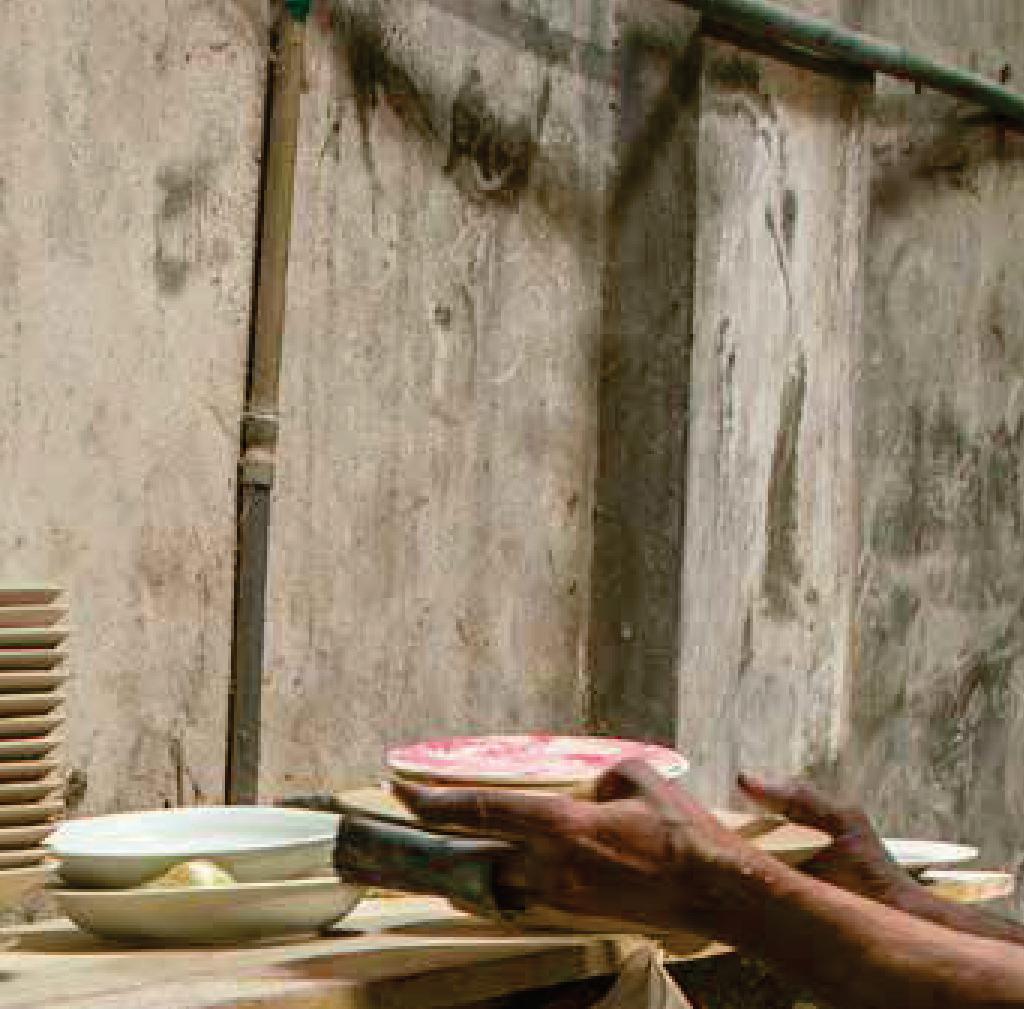
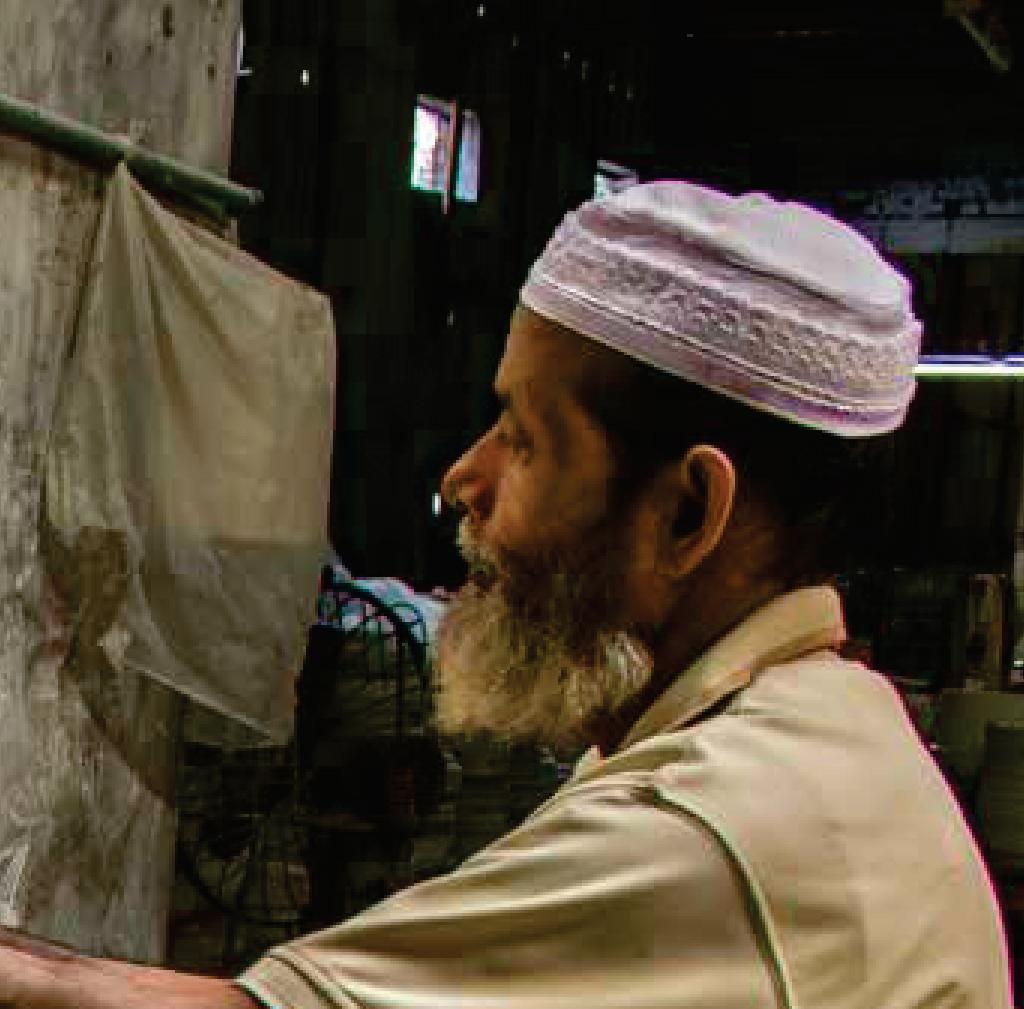



For example, at one point it was estimated by a group of leading investors that some 6,000m. Taka of finances that had been put into the industry, remained idle for up to two years simply due to lack of gas connections. They added that these investments might employ at least 1,000 skilled and semi-skilled people. The entrepreneurs say the projects, mostly in Dhaka, Savar, Gazipur and Sreepur have become increasingly costly because of the delays in opening. Economics that worked when commissioned simply don’t add up now on completion.






Gas, it seems, is a perpetual hold-up in the country’s ceramic industry development with a lack of cost-effective, consistent supply the main issue. New gas connections have remained suspended since March 2009 when an acute gas crisis surfaced in major areas of the country, and it is this which has forced companies to delay production.
Despite the issues being faced, the BCMEA (Bangladesh Ceramic Manufacturers and Exporters Association) does claim that other leading industrialists in the country remain attracted to the growing sector, but it seems incongruous that anyone else would want to step heavily into the ceramic industry given its present, parlous state. Yes, global demand increases – as populations rise – but this does not translate into every country getting equal attention. Far too for, a worldwide forecast for tile consumption, for example from some off-the-shelf, increasingly AI-written ‘research’ report, gets misinterpreted into an opportunity for all. I have news for some of you; that’s not the case.
One entrepreneur who invested a substantial sum in a ceramic plant commented to local media that they had been paying bank interest regularly, yet could not get production started. Essentially, the factories are costly, white elephants with the added issue that many of the machines installed in the factory will start running into issues as the warranty of most of them has expired. One leading company

It is hardly likely that an economy will grind to a halt because it cannot source enough plates, cups or tiles for example.

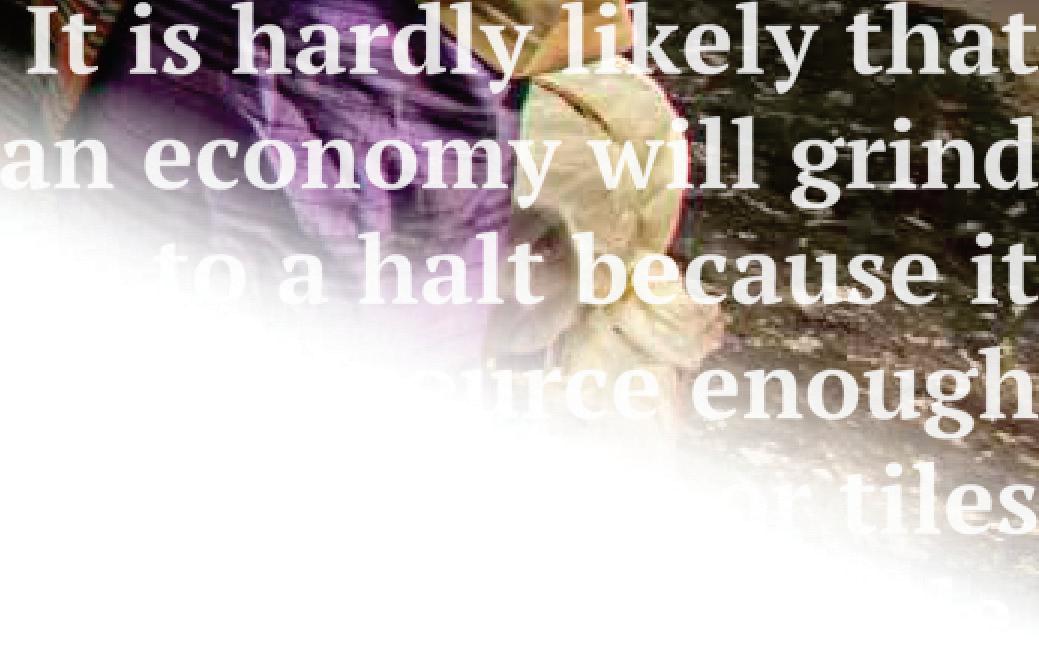
commented that: "We have some comparative advantages over the major foreign ceramic producers, but this constant gas crisis has made all our efforts futile as we’re also kept waiting for gas connections."
It’s not for want of trying of course. The BCMEA is an active and constant campaigner.
"The government should ensure a stable gas supply," urged Moynul Islam, acting president of BCMEA, “as well as withdraw the supplementary duty on ceramic tiles and sanitaryware to support the industry's continued growth during this crisis”.


Regrettably, only the government can give the green light to new connections.
He went on to call for urgent government intervention to recognise ceramics as a "priority industry," which they believe is essential for maintaining local production, retaining employment, and ensuring global competitiveness.
He added that more than 80 ceramic factories in Bangladesh are currently meeting 85% of domestic demand, while also generating substantial export revenue.
The BCMEA reported that the sector has attracted a total investment of 18,000 crore taka, with ceramic manufacturers paying 1,200 crore taka in gas bills annually. However, ongoing gas shortages have severely impacted business operations, leaving many factories struggling to maintain production for the past year, it says.
The factories in areas such as Dhaka (Mirpur, Savar, Islambagh, Dhamrai, and Kalampur), Narayanganj (Rupganj and Meghnaghat), Gazipur (Tongi, Kashimpur, Bhabanipur, Sripur, and Mawna), Narsingdi (Pachdona), and Mymensingh (Bhaluka and Trishal) have all been, and remain, under pressure as instead of the required 15 pounds per square inch (PSI), gas pressure often drops to 2 PSI to 3 PSI or even reaches zero, causing daily production losses of over 20 crore taka. Such low pressures make kiln operations almost impossible.
Many ceramic companies have been forced to halt investment plans, while newly established factories remain nonoperational due to the crisis, he says.
"The fact that investment is on hold and that new factories remain nonoperational means that this not only restricts business expansion but also limits job opportunities for thousands of workers," Islam stated.
The BCMEA also raised concerns over the continuous increase in gas prices, which has significantly driven up production costs.
Between 2015 and 2023, industrial gas prices surged by 345%, including by 150% in 2023 alone, it says.
This has led to an 18-20% increase in production costs, making it increasingly difficult for local manufacturers to compete with imported products, it says.
With recent reports seeming to point to the government considering another 152% gas price hike, this could further inflate production costs by 30% to 35% in the near future, rendering the industry even less competitive.
Regarding the SD, the BCMEA pointed out that the effective corporate tax rate on ceramic manufacturers has reached 32.5%.
"We strongly urge the government to withdraw the proposal for imposing a 20% SD on the ceramic sector to ensure its sustainability and growth," they added.
It’s not just internal taxation of course. The Trump Tariff whirlwind has had a massive impact on Bangladesh’s tableware sector in particular, with a 37% duty proposed.
Despite their struggles to secure a decent margin for loan repayments amid the gas crisis, tableware exporters had at least been counting on a recovery from the 2023-24 slump, seeing interest from some US buyers.
"Forget growth now – US importers will have to pay the entire additional duty even for consignments awaiting entry at a US port BCMEA’s Islam states.

Mir Nasir Hossain, former president of the Federation of Bangladesh Chambers of Commerce and Industry (FBCCI) and adviser to the BCMEA, has also emphasised the importance of uninterrupted gas supply for ceramic production.
Hossain warned that ongoing production disruptions could push manufacturers into financial distress, making them prone to becoming bank defaulters due to high interest rates.
Some companies are already on the path to collapse due to gas shortages, he claimed, adding that despite the inadequate gas supply, factories still have to pay the same utility bills.
Md Mamunur Rashid, vice president of the BCMEA, criticised the proposed gas price increase for new factories, with the rates being increased from Tk 30 per unit to Tk 75 per unit.
"This decision is completely illogical and would act as a major barrier to the industry's development," he says.
Another pressing demand from the BCMEA is the withdrawal of the supplementary duty (SD) on the sale of ceramic tiles and sanitary ware.
Currently, a 15% SD is imposed on the sale of ceramic tiles, while sanitary ware faces a 10% duty.
His company Monno Ceramics pioneered tableware exports from Bangladesh in the 1980s. He recalls the 2013 experience in the US market when the withdrawal of duty-free market access under the Generalized System of Preferences (GSP) led to order cancellations, leaving exporters in jeopardy.
"I am afraid existing US orders will be cancelled this time. Thank God our industry no longer depends heavily on the US market," he says.
According to the Export Promotion Bureau, Bangladesh's ceramic product exports dropped to $33.09 million in the past fiscal year from $43.38 million in 2023. Dominant tableware and kitchenware exports fell from $39.9 million to $30.16 million.
Since the withdrawal of GSP in 2013, the US market has remained insignificant for Bangladeshi exporters. Still, ceramic exports to the US have declined further – from $4.1 million to $2.76 million.
"The industry's competence and resilience are high; we just need fair treatment," says Islam.
For instance, with its state-of-the-art facilities and rigorous research and development to satisfy the world's top buyers, Akij Ceramics took less than four years to raise its annual tableware exports to over $12 million in the European Union alone – thanks to duty-free access there, which the largest exporter, China, does not have. Of course, whether that remains the case for long is another issue.
Akij had been developing new products for some US buyers to navigate the regular tariff before the introduction of the additional 37% levies.
"This additional tariff will increase product prices in the US market. The question is, are US consumers willing to pay this extra cost? Or will importers pass the additional charge on to exporters?" says Mohammod Khourshed Alam, the company's chief operating officer.
"Europe and India are the biggest markets for Bangladesh," says Mohammed Humayun Kabir, former CEO of Shinepukur Ceramics. "The additional duty will hurt demand in the US, and exporters may suffer an immediate slowdown and margin shrink."
However, exports to Russia – a major destination for tableware made in the country – are under threat with the US stating it would impose 100% tariffs potentially on any country dealing with the war-mongering Bear.
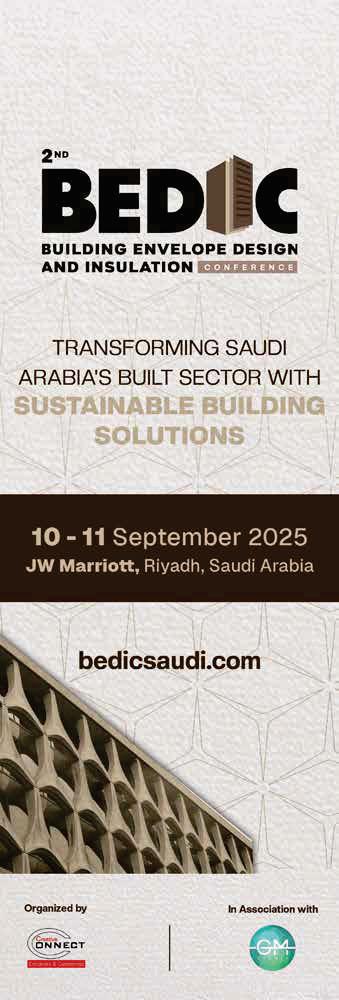









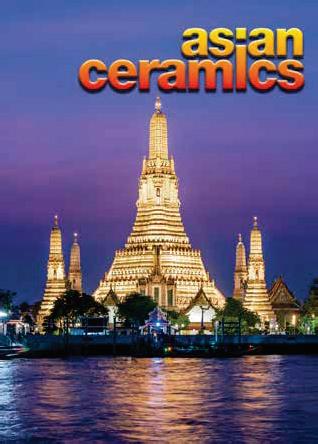



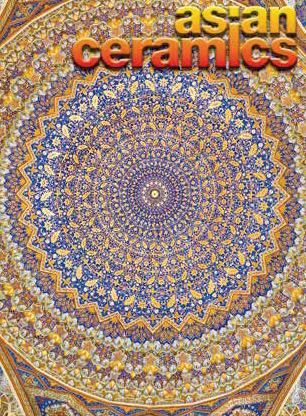
















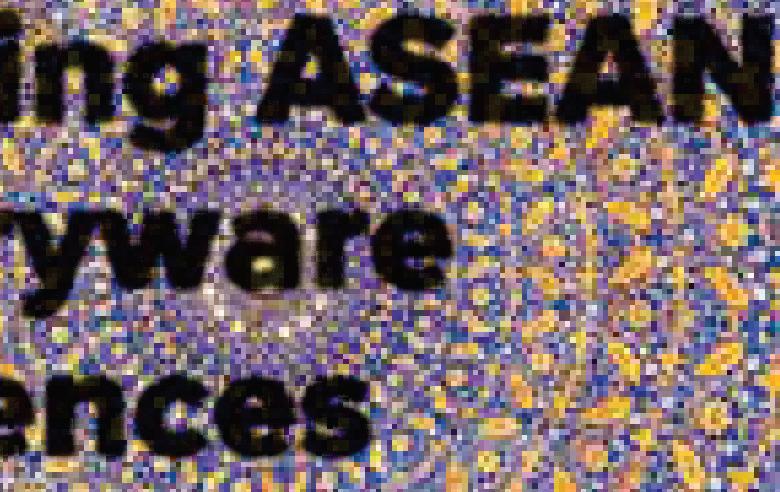































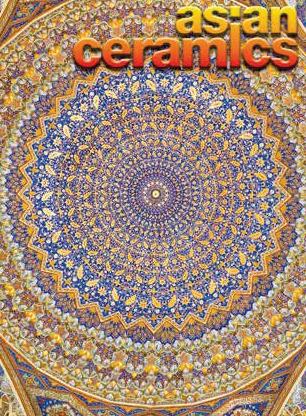











AUTOMATION ] [ RESEARCH ] [ ENVIRONMENT











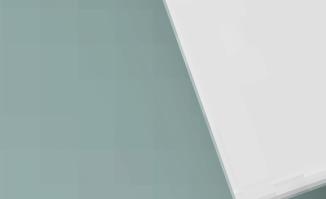









. Innovation









. Product Development

. Resin moulds . Modelling
. Casting and handling
. Finishing
. Firing . Off-line Technology . Glazing
. Sorting





































































